Inbox and Environment News: Issue 560
October 30 - November 5, 2022: Issue 560
Impacting Pittwater - Have Your Say + Discussions + New Works:
Conservation Zones Review Residents Forum: Resolutions Call For Shift In Criteria Applied, For Keeping Pittwater's Green-Blue Wings Intact, For State Election Candidates To Declare Their Position On Pittwater Community's Stated Expectations - feedback closes December 2nd
Residents Opposed To Rezoning Proposal For 15-17 Mona Street Mona Vale
Narrabeen Education Campus DA Available On Council's Website For Feedback - For Narrabeen Sports High School + Narrabeen North Public School - submissions open until November 21
Aquatics: Manly's Little Penguins: Warden Program Update by Taylor Springett, 2022 Eco Achievement Award - Youth Winner - Manly's Little Penguin population of breeding pairs is now just 27, falling below the number needed to sustain the population. The volunteers are trying to ascertain of they have moved elsewhere - have you seen Little Penguins trying to nest on the harbour or in our area? Please contact Taylor if you have - details run this week.
$86,668 For Northern Beaches Scoping Study Allocated Under The Coastal Management Program
Proposal For Barrenjoey Lighthouse Cottages To Be Used For Tourist Accommodation Open For Feedback - Again - feedback open until November 22nd
Avalon Beach Village Shared Space Timeline For Works Made Available - works commenced
Motion To Have Fauna Management Plans In Local Council Comply With The NSW Code Of Practice For Injured, Sick And Orphaned Protected Fauna To Be Presented At LGNSW 2022 Conference - Some FMP's Passed Allow For Wildlife To Be Killed Where Their Homes Are Felled - this passed unopposed at 2022 LGNSW Conference
Kangaroo Day Protest At Manly
Every year, over the winter months, ratepayers fund the ACT Government to send hired guns to stalk Canberra nature reserves at night.Over 12 years, across 11,400 hectares of the Canberra Nature Park, 27,950 kangaroos have been killed.Thousands more pouch joeys have been bludgeoned to death or decapitated.Thousands more dependent at-foot joeys have been orphaned to slower death from hunger, thirst, cold and myopathy (a particularly painful and deadly form of stress).Many Canberra residents feel their own lives have been placed at risk, because shooting often occurs near people, next to roads, reserve fences, off-reserve walking trails, or back fences of homes.The reserves themselves are also affected by the reduction in kangaroo populations, their keystone native grazers, and from the impact of shooters’ vehicles which churn up the ground, killing native species and seeding exotic weeds.Many reserves are now covered in thistles and rank grassy weeds. These weeds will be suburban fire traps in summers to come.Culling began in 2009 without any scientific baseline research on the ACT’s kangaroo populations. Since then, no plausible evidence has been produced to demonstrate any benefits from killing kangaroos. Every government attempt to justify this slaughter has been debunked. Independent research, and even research funded by the government itself, provides no evidence that kangaroo grazing has ever harmed any other native species or ecosystem.During 2021-22, a citizen science project conducted a “direct observational count” of kangaroos in all 37 of Canberra’s accessible nature reserves. This research has confirmed that the Environment Directorate’s claims of an overabundance of kangaroos is demonstrably unfounded.This project’s findings are corroborated by a Farrer resident, who has walked on Farrer Ridge Reserve for decades. She reports that, until last year, the kangaroo population there had remained stable for 40 years, reducing during drought. Last year was the first year Farrer Ridge was included in the government’s slaughter, and almost the entire population was wiped out.The ACT Environment Directorate itself confirmed, on April 13, 2022, that the kangaroo population of the ACT is unknown – but that it intends to kill another 1500 kangaroos this year, anyway.This is not conservation. This is extermination.The Kangaroo Management Plan, which mandates killing kangaroos, and the Code of Practice, which mandates the bludgeoning of joeys, are legislative instruments.Each and every member of the Legislative Assembly is therefore personally responsible for this tragedy. Please stop it before any more damage is done.
Northern Beaches Clean Up Crew: Dee Why Lagoon Clean Up: October 30, 2022
- - You'll most likely get muddy
- - You'll most likely get wet
- - You'll walk a bush trail inside the lagoon
- - You'll see plenty of plastic bottles
- - getting in the reeds and getting muddy
- - carrying bags back to the tarp “bag runners”
- - sorting the rubbish on the tarps (we will have tarps for plastic bottles, glass bottles, etc)

Community Invited To Have A Say On Draft Management Plan For Flying-Foxes
Thursday, 27 October 2022
Northern Beaches Council has released a draft plan for the management of flying-foxes in colonies in Balgowlah, Avalon and Warriewood and is encouraging the community to have their say.
The 5-year draft management plan sets out a three-tiered management approach with a focus on:
- routine reserve maintenance (e.g. mowing, path maintenance, revegetation, weed control, hazardous tree management)
- support for affected residents
- community education
- maintenance of existing buffers between properties and flying-foxes
- habitat restoration in less populated areas.
CEO Ray Brownlee said the draft strategy sought to balance the need to protect flying-foxes as a threatened species while reducing their impact on residents who live near the camps.
“As a species in decline across Australia and listed as threatened by the State and Federal governments, we have an obligation to ensure they are protected.
“This species plays an important role in pollinating our forests, so it's crucial we do our bit.
“However, we recognise that there can be impacts on people living near flying-fox camps.
“The draft plan seeks to minimise those impacts by maintaining buffer zones, offering support to residents and providing alternative habitat in less populated areas.
“We welcome feedback on the draft plan and encourage residents to have their say.”
The draft plan will be on exhibition until Sunday 20 November 2022. Residents can learn more, book a meeting with a Council officer, or attend the online information session on 10 November, and make a submission here: https://yoursay.northernbeaches.nsw.gov.au/flying-fox-camp-management-plan
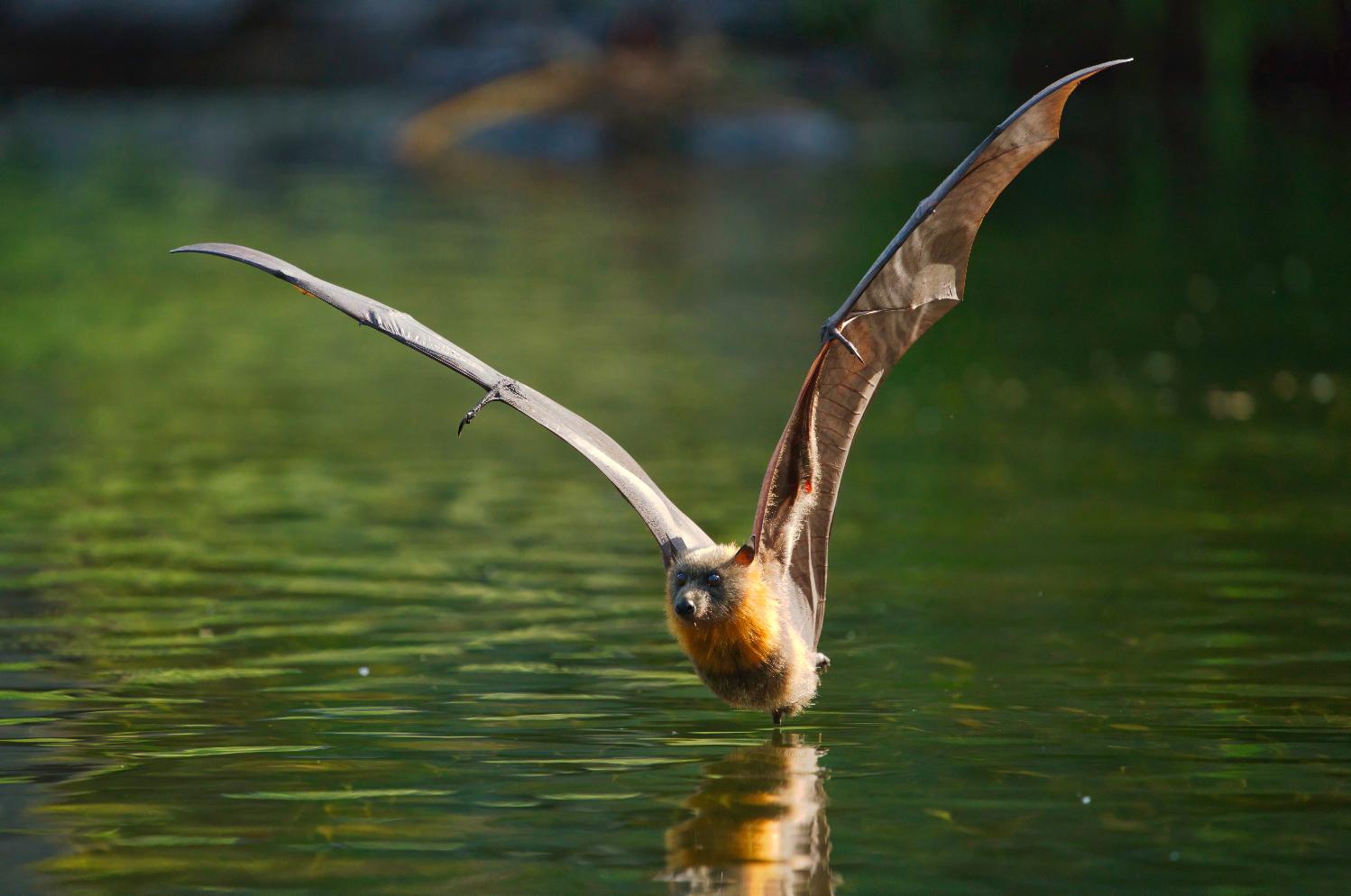
Mickey Mouse Plant Flowering In Warriewood Wetlands
Residents have reported this week that the Mickey mouse plant, Ochna serrulata (commonly known as the small-leaved plane, bird's eye bush, Mickey mouse plant or Mickey Mouse bush due to the plant's ripe blackfruit, which upside down resembles the ears of Mickey Mouse, and bright-red sepals, which resembles his trousers) has been seen flowering in Warriewood wetlands.
This plant is a weed when seen locally.
The plant is native to the forest areas of South Africa. It occurs throughout the country, from Cape Town in the south, along the east coast as far as Kwazulu-Natal, and inland through Eswatini and Gauteng. This tough, adaptable shrub grows in sunny, open positions as well as in the shade of deep forest.
It has been widely cultivated outside of South Africa as an ornamental garden plant, and has become a weed in New South Wales and southern Queensland in eastern Australia, where it is found near human habitation in and around large towns and cities.
Ochna comes into flower in Spring. Once established, Ochna plants are extremely difficult to kill, and produce copious numbers of shiny black berries which are spread prolifically by birds, foxes and other pests and wildlife.
Once Ochnas finish flowering, the yellow petals fall off, revealing the calyx and berries. The calyx turns bright red, and the berries ripen from light green to glossy black.
It is best to hand-pull seedlings, though this is notoriously hard to do from a surprisingly small size. Ochna plants grow with a tough, kinked root that snaps off, leaving the taproot in the ground to re-grow.
When Ochnas are too difficult to pull out, the most effective way to control them is to "scrape and paint" the stem with herbicide.
First, collect any berries from the plant and dispose of them in the bin.
Then, using a sharp knife, scrape the top layer of the bark away, exposing the green stem below. This should be done along the stem, as far down the root and up the main stem as possible.
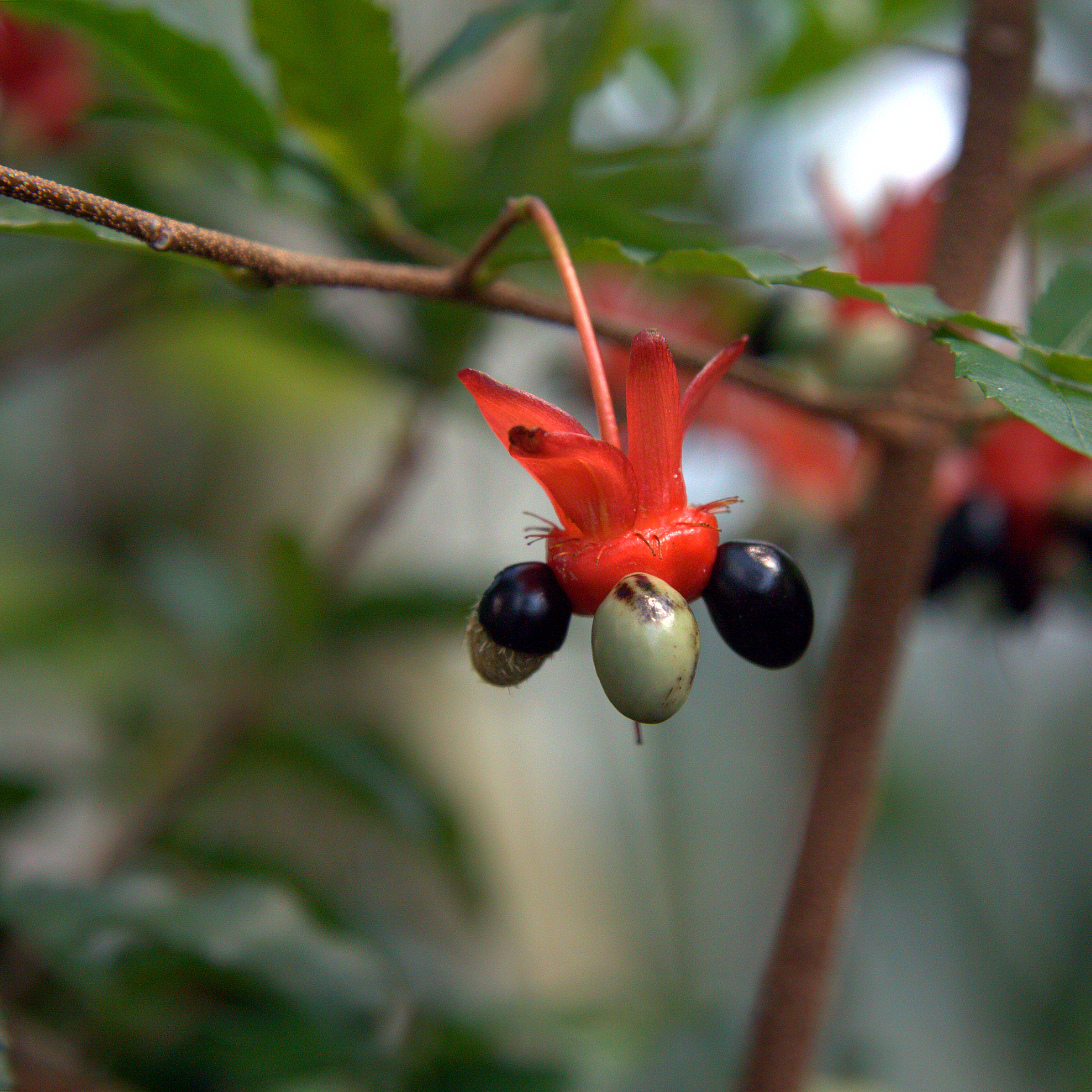
photo: Ochna serrulata with fruits and the bright-red sepals that resemble the ears and trousers of Mickey Mouse. Photo: C T Johansson.
Weed Small-Leafed Privet Flowering Now; Cut Flower Heads To Prevent Seeding
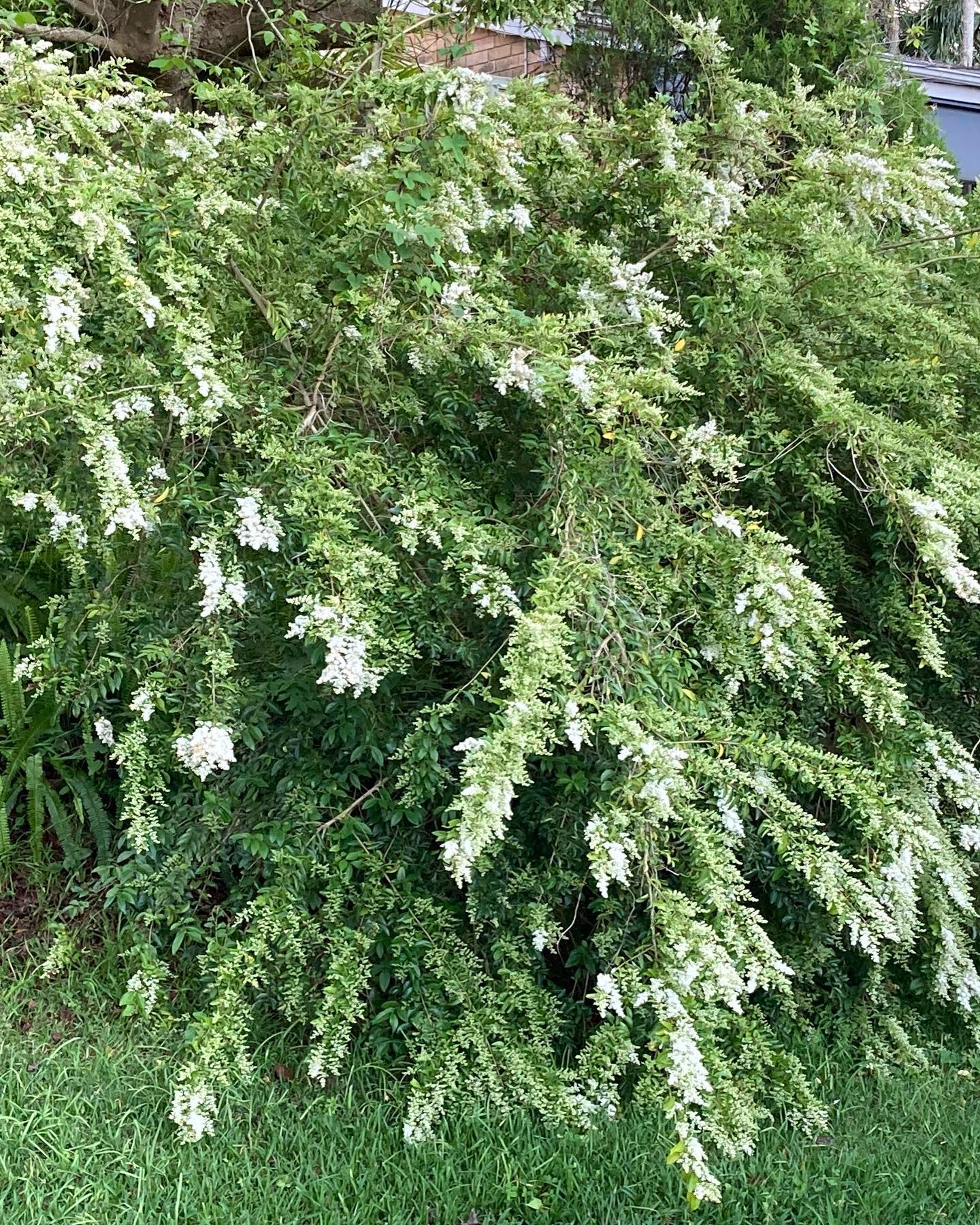
Single-Use Plastics Ban In NSW Commences November 1st, 2022
- serving utensils such as salad servers or tongs
- items that are an integrated part of the packaging used to seal or contain food or beverages, or are included within or attached to that packaging, through an automated process (such as a straw attached to a juice box).
- meat or produce trays
- packaging, including consumer and business-to-business packaging and transport containers
- food service items that are an integrated part of the packaging used to seal or contain food or beverages, or are including within or attached to that packaging, through an automated process (such as an EPS noodle cup).
- polyethylene (PE)
- polypropylene (PP)
- polyethylene terephthalate (PET)
- polymethyl methacrylate (PMMA)
- nylon (PA).
- carrying on an activity for commercial purposes. For example:
- retail businesses like a restaurant, café, bar, takeaway food shop, party supply store, discount store, supermarket, market stall, online store, and packaging supplier and distributor, and any other retailer that provides these items to consumers.
- a manufacturer, supplier, distributor or wholesaler of a prohibited item
- carrying on an activity for charitable, sporting, education or community purposes. For example, a community group, not-for-profit organisation or charity, including those that use a banned item as part of a service, for daily activities or during fundraising events.
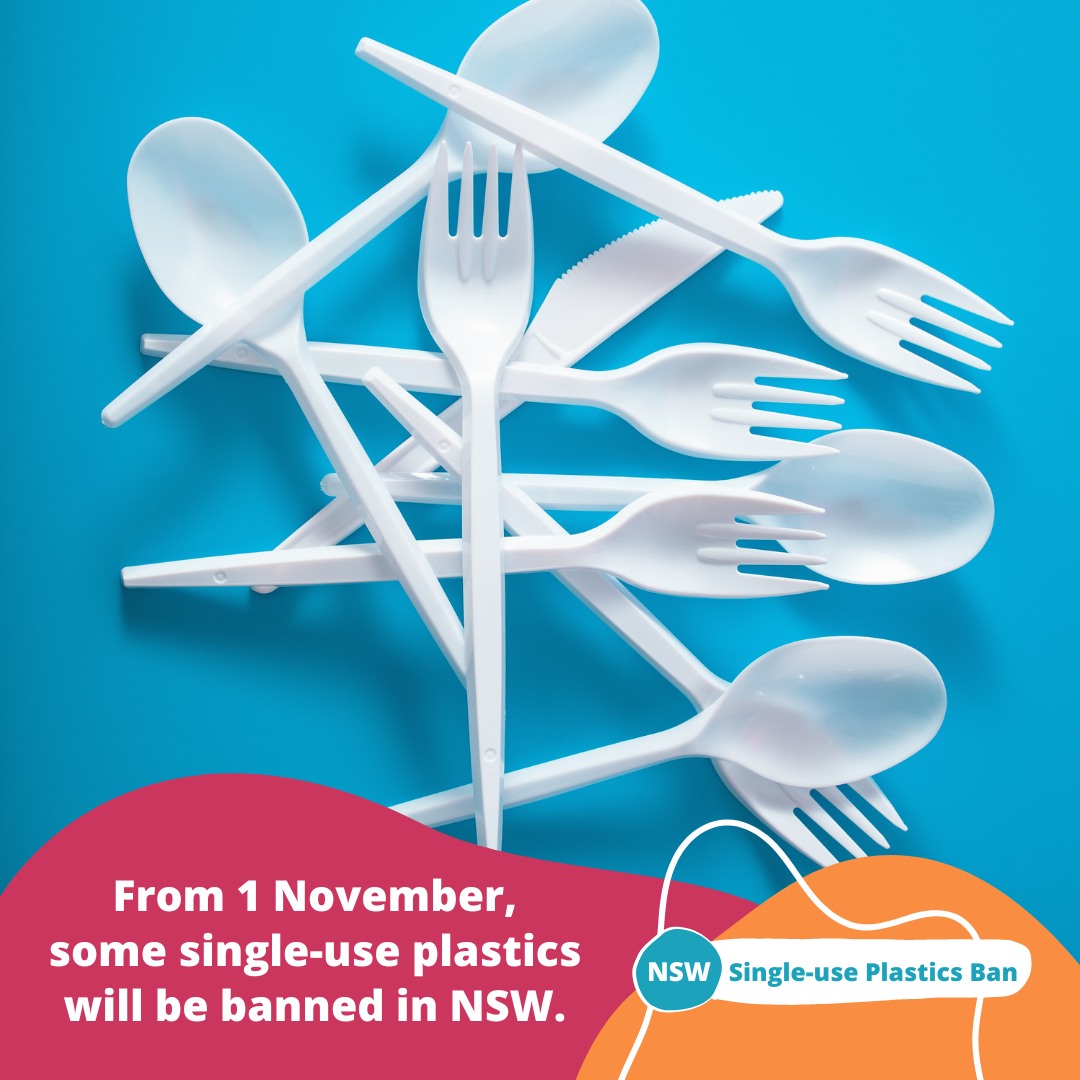
From 1 June 2022 The Following Was Banned:
- barrier bags such as bin liners, human or animal waste bags
- produce bags and deli bags
- bags used to contain medical items (excluding bags provided by a retailer to a consumer used to transport medical items from the retailer).
Help Needed To Save Sea Turtle Nests As Third La Nina Summer Looms
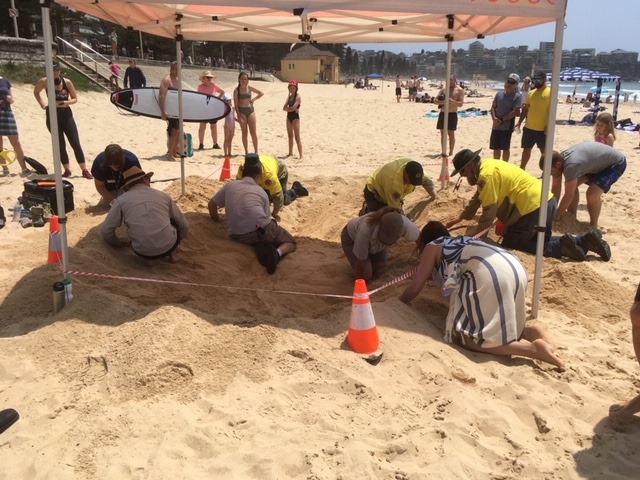

Save Sydney's Koalas Petition
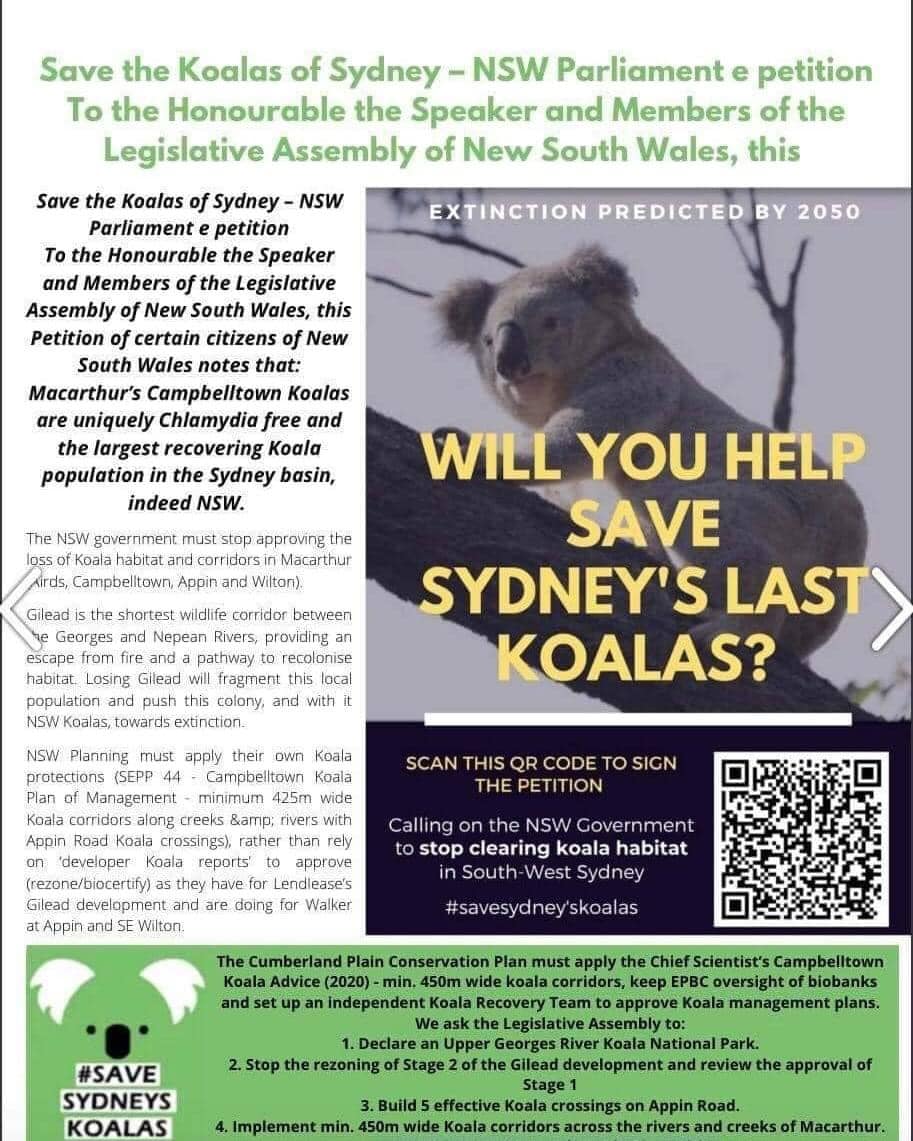
Watch Out - Shorebirds About
.JPG.opt1460x973o0,0s1460x973.jpg?timestamp=1663629195339)
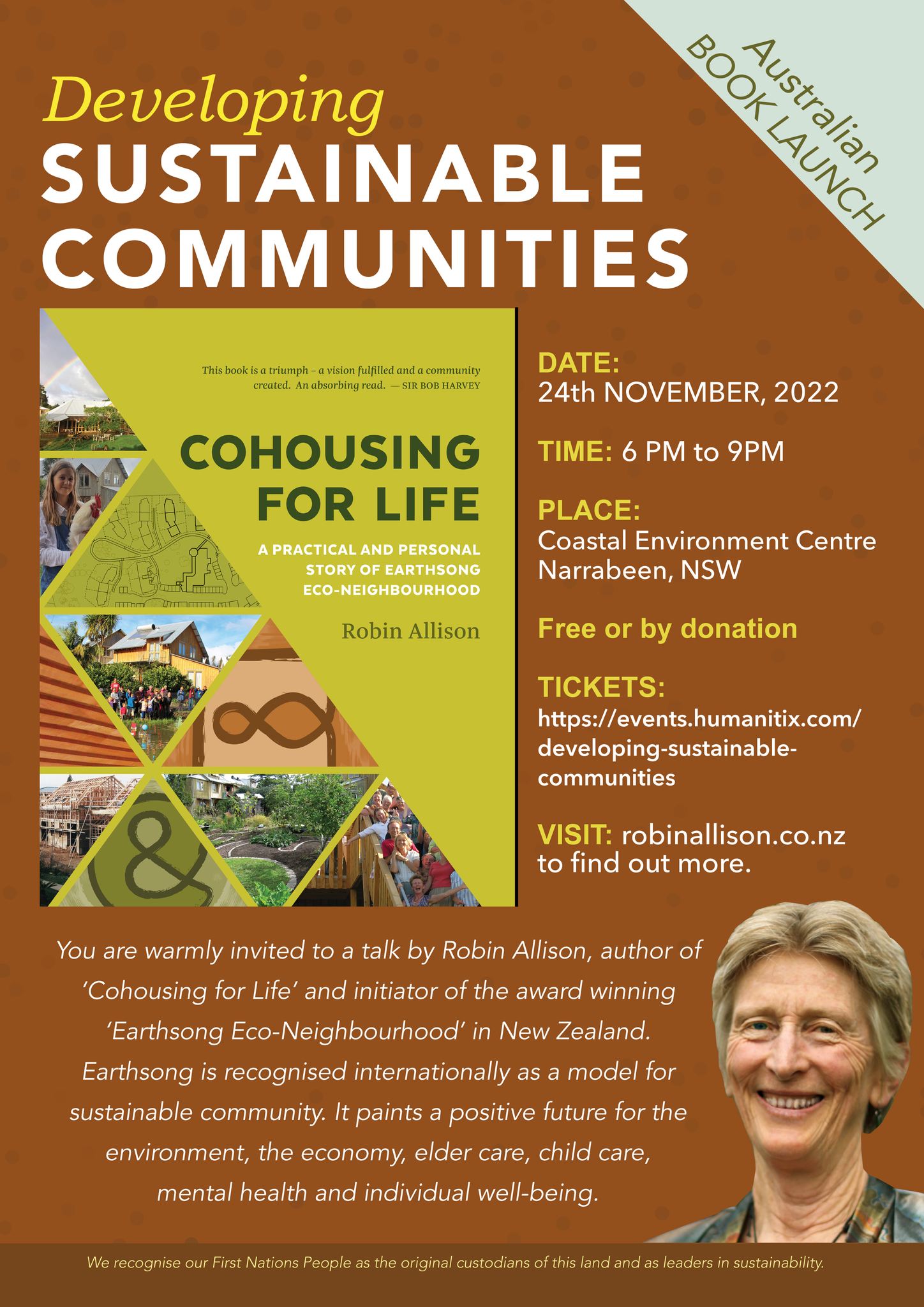
TALK & BOOK LAUNCH
Book Your Free Ticket To: Developing Sustainable Communities
Weed Alert: Corky Passionflower At Mona Vale + Narrabeen Creek
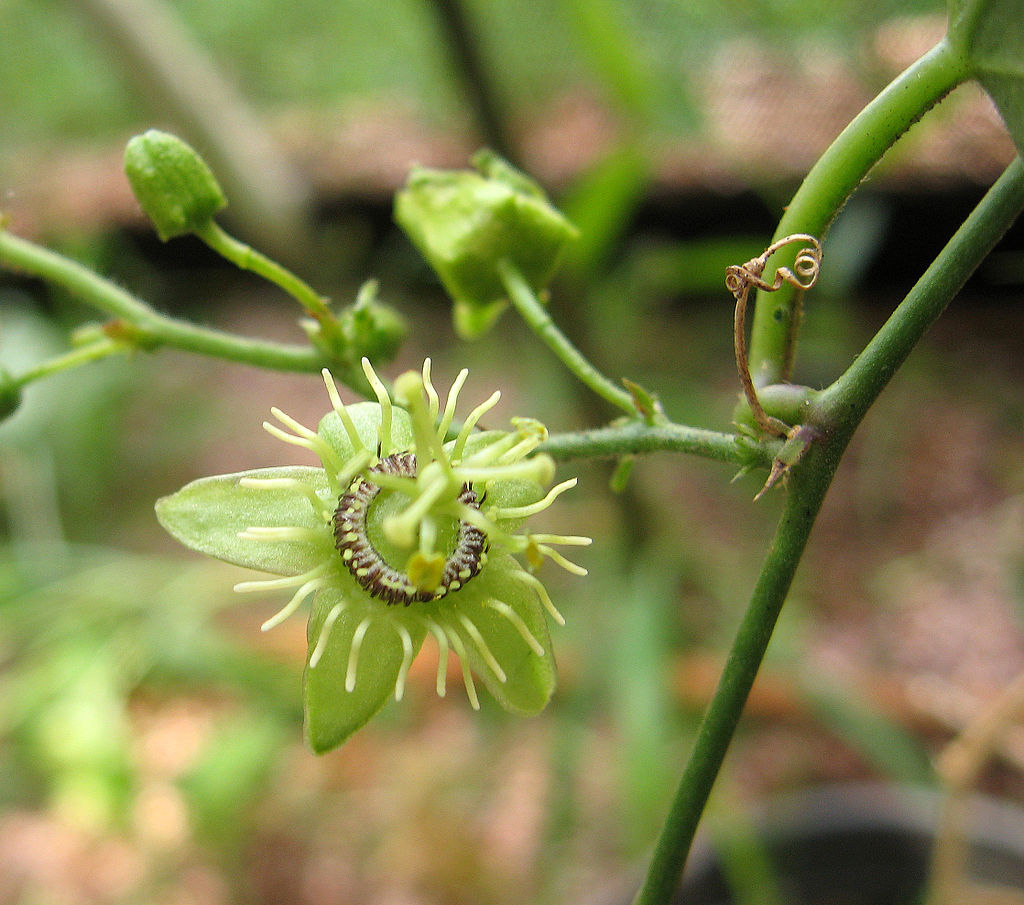
.jpg?timestamp=1663392221562)
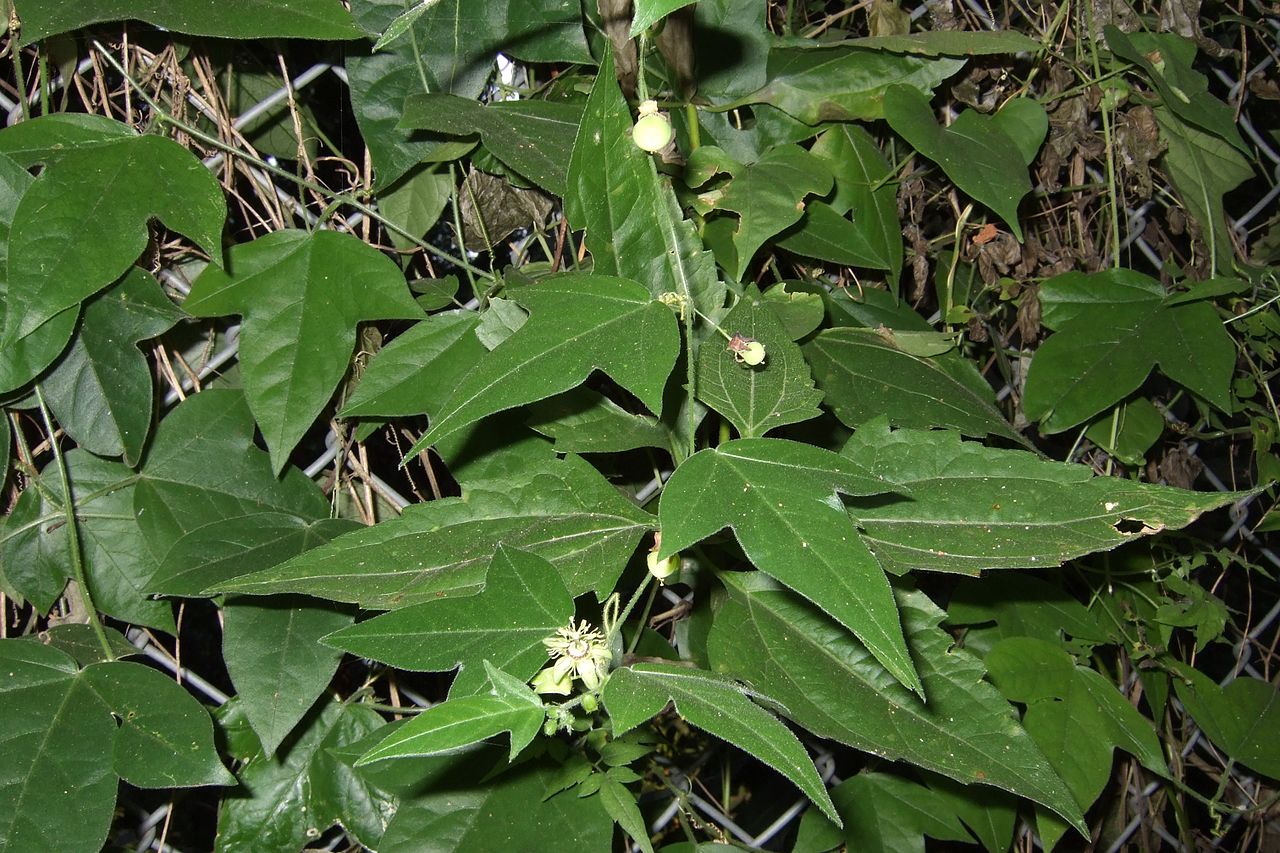
EPA Releases Climate Change Policy And Action Plan
The NSW Environment Protection Authority (EPA) is taking action to protect the environment and community from the impacts of climate change, today releasing its new draft Climate Change Policy and Action Plan which works with industry, experts and the community to reduce greenhouse gas emissions and support resilience.
NSW EPA Chief Executive Officer Tony Chappel said the EPA has proposed a set of robust actions to achieve a 50 per cent reduction in carbon emissions by 2030 (from 2005 levels), ensure net zero emissions by 2050, and improve resilience to climate change impacts.
“NSW has ambitious targets that align with the world’s best scientific advice and the Paris commitments, to limit global warming to an average of 1.5 degrees in order to avoid severe impacts on ecosystems,” Mr Chappel said.
“Over the past few years we have seen first-hand just how destructive the impacts of climate change are becoming, not only for our environment, but for NSW communities too.
“We know the EPA has a critical role to play in achieving the NSW Government’s net-zero targets and responding to the increasing threat of climate change induced weather events.
“Equally, acting on climate presents major economic opportunities for NSW in new industries such as clean energy, hydrogen, green metals, circular manufacturing, natural capital and regenerative agriculture.
“This draft Policy sends a clear signal to regulated industries that we will be working with them to support and drive cost-effective decarbonisation while implementing adaptation initiatives that build resilience to climate change risks.
“Our draft plan proposes a staged approach that ensures the actions the EPA takes are deliberate, well informed and complement government and industry actions on climate change. These actions will support industry and allow reasonable time for businesses to plan for and meet any new targets or requirements.
“Climate change is an issue that we all face so it’s important that we take this journey together and all play our part in protecting our environment and communities for generations to come.”
Actions include:
- working with industry, government and experts to improve the evidence base on climate change
- supporting licensees prepare, implement and report on climate change mitigation and adaptation plans
- partnering with NSW Government agencies to address climate change during the planning and assessment process for activities the EPA regulates
- establishing cost-effective emission reduction targets for key industry sectors
- providing industry best-practice guidelines to support them to reduce their greenhouse gas emissions
- phasing in the introduction of greenhouse gas emission limits on environment protection licences for key industry sectors
- developing and implementing resilience programs, best-practice adaptation guidance and harnessing citizen science and education programs
- working with EPA Aboriginal and Youth Advisory Committees to improve the EPA’s evolving climate change response
EPA Acting Chair Carolyn Walsh said the EPA is a partner in supporting and building on the NSW Government’s work to address climate change for the people of NSW.
“The draft Policy and Action Plan adopts, supports and builds on the strong foundations that have been set by the NSW Government through the NSW Climate Change Policy Framework, Net Zero Plan and Climate Change Adaptation Strategy,” Ms Walsh said.
The EPA will work with stakeholders, including licensees, councils, other government agencies, and the community to help implement the actions.
The draft EPA Climate Change Policy and Action Plan is available at https://yoursay.epa.nsw.gov.au/ and comments are open until 3 November 2022.
Wanted: Photos Of Flies Feeding On Frogs (For Frog Conservation)
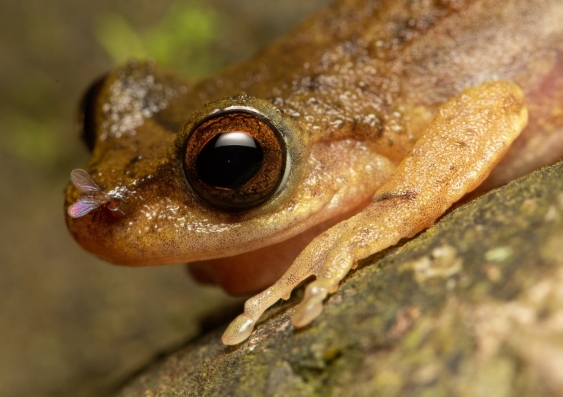
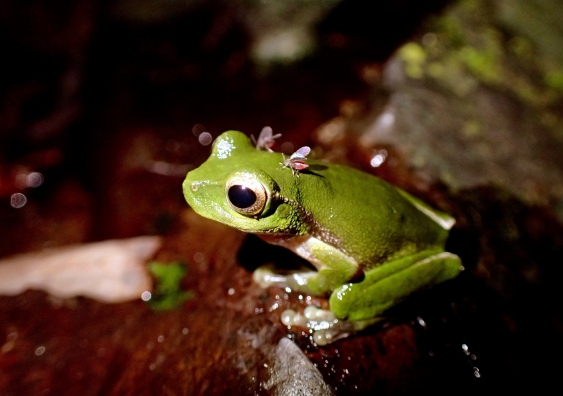
Possums In Your Roof?: Do The Right Thing

Local Wildlife Rescuers And Carers State That Ongoing Heavy Rains Are Tough For Us But Can Be Tougher For Our Wildlife:
- Birds and possums can be washed out of trees, or the tree comes down, nests can disintegrate or hollows fill with water
- Ground dwelling animals can be flooded out of their burrows or hiding places and they need to seek higher ground
- They are at risk crossing roads as people can't see them and sudden braking causes accidents
- The food may disappear - insects, seeds and pollens are washed away, nectar is diluted and animals can be starving
- They are vulnerable in open areas to predators, including our pets
- They can't dry out and may get hypothermia or pneumonia
- Animals may seek shelter in your home or garage.
You can help by:
- Keeping your pets indoors
- Assessing for wounds or parasites
- Putting out towels or shelters like boxes to provide a place to hide
- Drive to conditions and call a rescue group if you see an animal hit (or do a pouch check or get to a vet if you can stop)
- If you are concerned take a photo and talk to a rescue group or wildlife carer
There are 2 rescue groups in the Northern Beaches:
Sydney Wildlife: 9413 4300
WIRES: 1300 094 737
Please be patient as there could be a few enquiries regarding the wildlife.
Generally Sydney Wildlife do not recommend offering food but it may help in some cases. Please ensure you know what they generally eat and any offerings will not make them sick. You can read more on feeding wildlife here
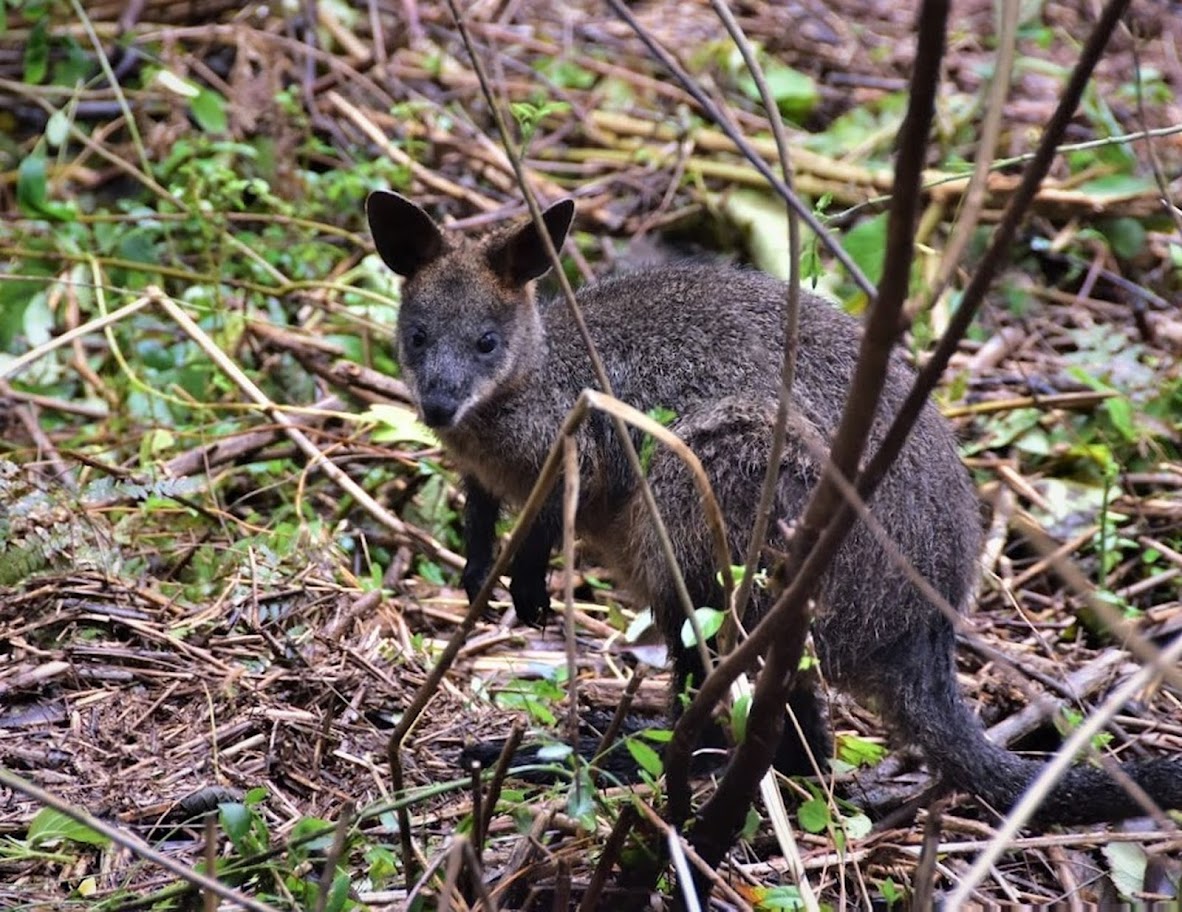
Information courtesy Ed Laginestra, Sydney Wildlife volunteer. Photo: Warriewood Wetlands Wallaby by Kevin Murray, March 2022.
Aviaries + Possum Release Sites Needed

Sydney Wildlife Rescue: Helpers Needed
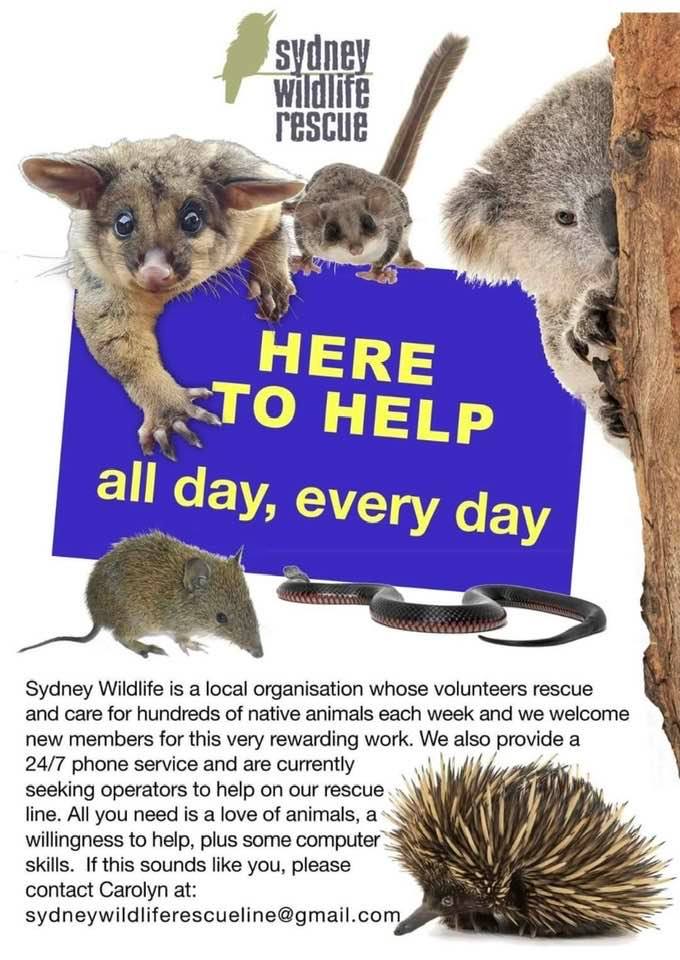
Bushcare In Pittwater
Where we work Which day What time
Avalon
Angophora Reserve 3rd Sunday 8:30 - 11:30am
Avalon Dunes 1st Sunday 8:30 - 11:30am
Avalon Golf Course 2nd Wednesday 3 - 5:30pm
Careel Creek 4th Saturday 8:30 - 11:30am
Toongari Reserve 3rd Saturday 9 - 12noon (8 - 11am in summer)
Bangalley Headland 2nd Sunday 9 to 12noon
Bayview
Winnererremy Bay 4th Sunday 9 to 12noon
Bilgola
North Bilgola Beach 3rd Monday 9 - 12noon
Algona Reserve 1st Saturday 9 - 12noon
Plateau Park 1st Friday 8:30 - 11:30am
Church Point
Browns Bay Reserve 1st Tuesday 9 - 12noon
McCarrs Creek Reserve Contact Bushcare Officer To be confirmed
Clareville
Old Wharf Reserve 3rd Saturday 8 - 11am
Elanora
Kundibah Reserve 4th Sunday 8:30 - 11:30am
Mona Vale
Mona Vale Beach Basin 1st Saturday 8 - 11am
Mona Vale Dunes 2nd Saturday +3rd Thursday 8:30 - 11:30am
Newport
Bungan Beach 4th Sunday 9 - 12noon
Crescent Reserve 3rd Sunday 9 - 12noon
North Newport Beach 4th Saturday 8:30 - 11:30am
Porter Reserve 2nd Saturday 8 - 11am
North Narrabeen
Irrawong Reserve 2nd Saturday 2 - 5pm
Palm Beach
North Palm Beach Dunes 3rd Saturday 9 - 12noon
Scotland Island
Catherine Park 2nd Sunday 10 - 12:30pm
Elizabeth Park 1st Saturday 9 - 12noon
Pathilda Reserve 3rd Saturday 9 - 12noon
Warriewood
Warriewood Wetlands 1st Sunday 8:30 - 11:30am
Whale Beach
Norma Park 1st Friday 9 - 12noon
Western Foreshores
Coopers Point, Elvina Bay 2nd Sunday 10 - 1pm
Rocky Point, Elvina Bay 1st Monday 9 - 12noon
Friends Of Narrabeen Lagoon Catchment Activities

Gardens And Environment Groups And Organisations In Pittwater
Some councils still rely on outdated paper maps as supercharged storms make a mockery of flood planning
Mark Ellis, Bond UniversityWhole towns and cities are seemingly locked into more frequent and severe flooding. Business-as-usual development continues despite extreme weather and sea-level rises due to climate change. While some local councils have online mapping, others are still using outdated paper maps.
Repeated floods across eastern Australia have prompted the Planning Institute of Australia to call for a framework to update flood mapping to take climate change into account.
A flood map shows areas to be inundated based on risk modelling and past weather data. As well as identifying at-risk areas for land-use planning, these maps are needed for flood responses. The problem with static flood maps is they don’t show critical details of the hazard a flood will present.
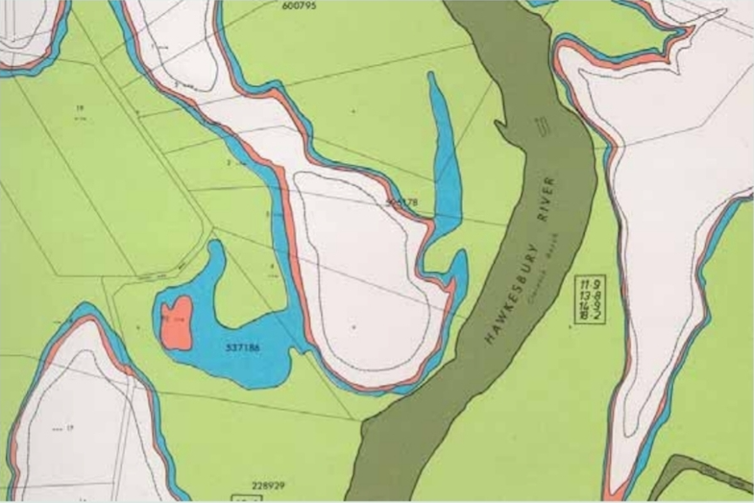
Councils have a duty of care to provide flood maps that accurately identify areas at risk, as well as those that are safe. Yet existing information on riverine and coastal flood risks was “patchy and outdated”, the institute said.
[…] there is a patchwork of datasets gathered and applied inconsistently by councils and water authorities, who often do not have the budgets to pay for the necessary modelling, or the political authority to apply controls at a local level. This means that new housing and development can occur in flood-prone areas […]
For many flooded communities, the immediate priority is to deal with the emergency. However, we should not lose sight of how urban planning has affected them, nor of the urgent need for planning frameworks to catch up with climate change impacts.
Who’s Responsible?
The floods have highlighted the glacial pace of adaptation to climate change by planning frameworks at all levels of government.
For example, the New South Wales government direction on flood-prone land that took effect in July 2021 still adheres to the principles in the state’s floodplain development manual from 2005, which advocates for development on floodplains.
The dysfunctional relationships between the different levels of government also continue. Victorian Premier Dan Andrews said flood mapping was mainly “a matter for local government”. NSW Premier Dominic Perrottet ran the nature-versus-people debate in announcing the wall of Warragamba Dam, Sydney’s biggest, will be raised.
Those on the front line of the flooding see things differently. The mayor of Wollondilly, southwest of Sydney, said:
Raising Warragamba Dam is not in the interests of Western Sydney, potentially costing over $2 billion and enabling developers to cover rural floodplains with housing, as well as the possibility of creating a sense of complacency from those still at risk of catastrophic flooding.
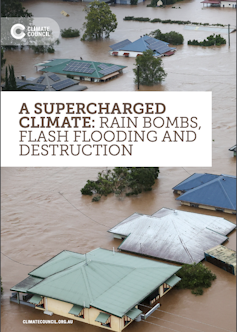
The National Climate Resilience and Adaptation Strategy, based on a 2012 Council of Australian Government (COAG) report, outlines the roles and responsibilities for adaptation of the three levels of government. The strategy states: “Local governments are on the frontline in dealing with the impacts of climate change.”
So local councils are seen to have a crucial role in adaptation at a local level. But how are underfunded councils to manage the ongoing damage to infrastructure, and the legacy of development in areas hit by supercharged weather systems?
It’s a legacy that led to $7 billion in insurance claims from floods, storms and cyclones in the past 18 months.
The Politics Of Flood Mapping
The flood-mapping issue is complicated by a level of political entrenchment related to property rights. Councils are wary of upsetting voters and ratepayers who see their assets devalued by a flood rating. When Gold Coast Council released updated flood maps in 2018, for example, they caused a stir among residents.
On the NSW Central Coast, the local council completed a flood study that concluded a majority of the housing lots would be flooded as a result of rising sea levels in coming decades. Yet the council removed the option of retreat or property buyouts under pressure from residents. They preferred adaptations such as levees, walls and raising their buildings. Councils would need to secure additional funding to cover the costs of such measures.
On the other hand, there was community opposition to a planned levee in Seymour, because of concerns about the loss of river views, access and habitat. This led the local council to abandon the levee to protect homes and businesses that have now been flooded.
We Must Plan For The Long Term
Current approaches to flood mitigation are not a viable long-term strategy. More development on floodplains means more property damage when the floods come. Increasing populations also put added strain on emergency services and escape routes.
Even before the latest floods, the Insurance Council of Australia issued a statement, Building a More Resilient Australia, which said:
“[…] it’s imperative that governments at state and federal level commit to a significant increase in investment in programs to lessen the impact of future events. We also need to plan better so we no longer build homes in harm’s way [and] make buildings more resilient to the impacts of extreme weather”.
If the insurance industry gets it, why are governments still allowing new development in high-risk areas? Some see developing these areas as necessary to solve the ongoing affordable housing crisis. Others consider it entwined with development industry lobbying. And some councils want the rate revenue and fear costly court actions over refused development applications.
So to the greater question: how are governments addressing the climate risk of flooding and urban development within the planning frameworks? Regional and state plans take a long time to draft, put out for public consultation, redraft and get approved.
A New Era Demands A New Approach
Climate change presents vexing problems for communities, governments and urban planning. As ice sheets melt, sea levels rise and climate drivers change, more extreme weather patterns are increasingly a threat to the fabric of our society.
Planning frameworks must adapt to the climate crisis. This requires land-use approaches that direct people and property away from hazardous floodplains. As the Planning Institute of Australia has warned:
“The decisions planners make now have a lasting impact, and our profession is key to responding to a changing climate.”
Mark Ellis, PhD Candidate in Planning, Bond University
This article is republished from The Conversation under a Creative Commons license. Read the original article.
Toxic Algae Blooms Detected On NSW Coastline: Broken Bay Affected
- numbness and a tingling (prickly feeling) around the mouth, face, and extremities (hands and feet)
- difficulty swallowing or breathing
- dizziness and headache
- nausea and vomiting
- diarrhoea
- paralysis and respiratory failure and in severe cases, death.
- The waters of the Hawkesbury River downstream of the Brooklyn railway bridge;
- Brisbane Water downstream of the Rip Bridge; and
- The waters of Twofold Bay.
World Headed For Climate Catastrophe Without Urgent Action: UN Secretary-General
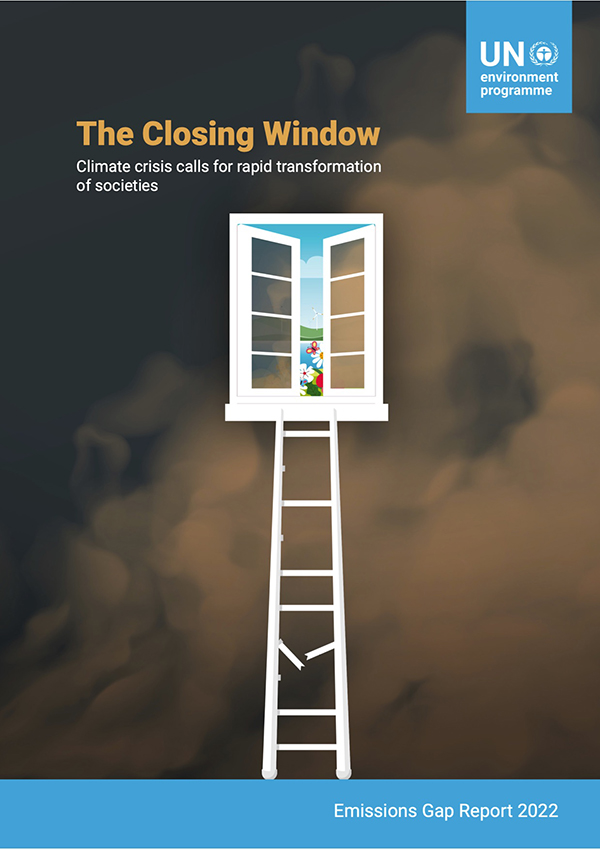
Murray Cray Rescue Operation
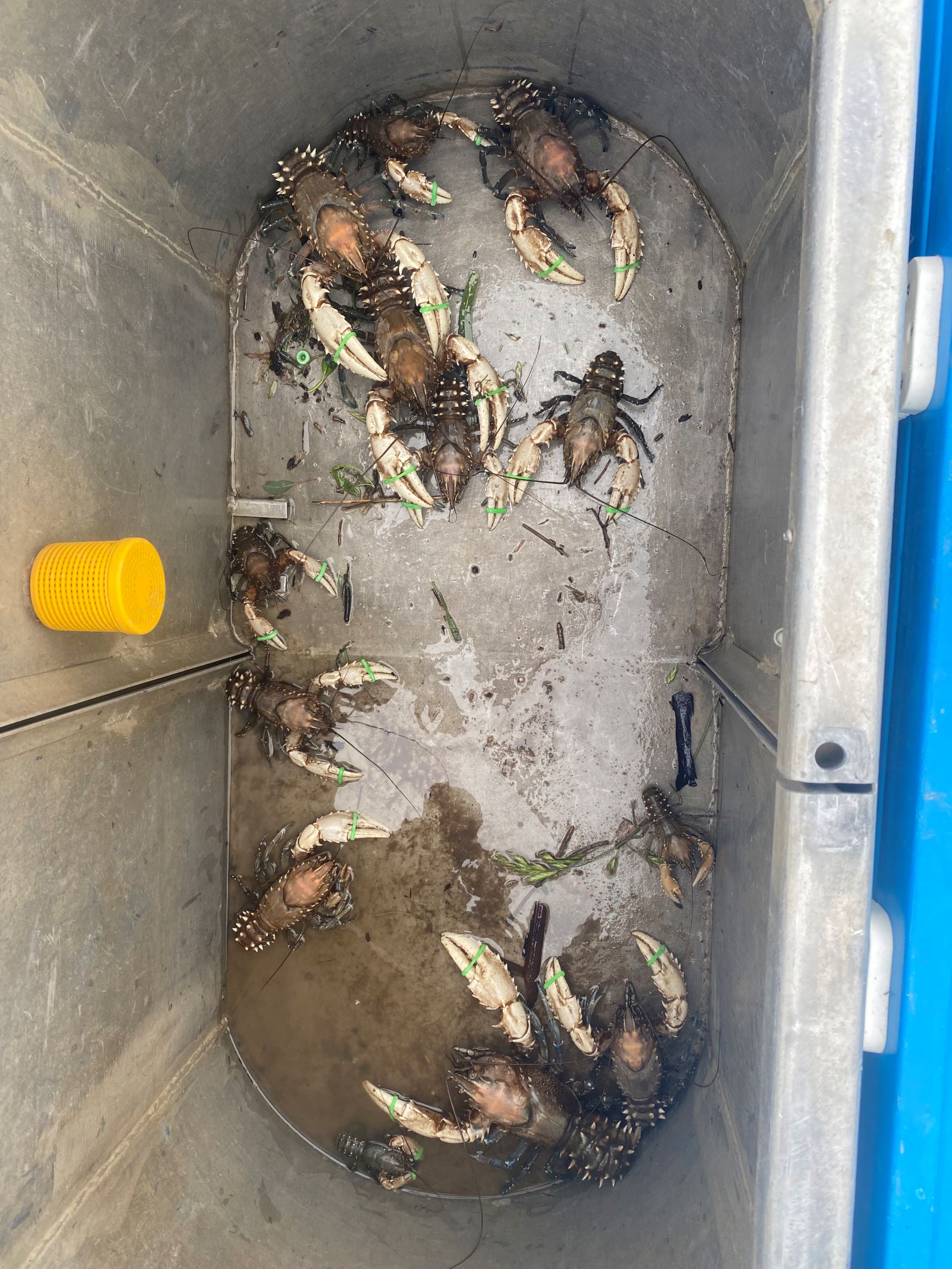
Nestling Birds Recognise Their Local Song 'Dialect'
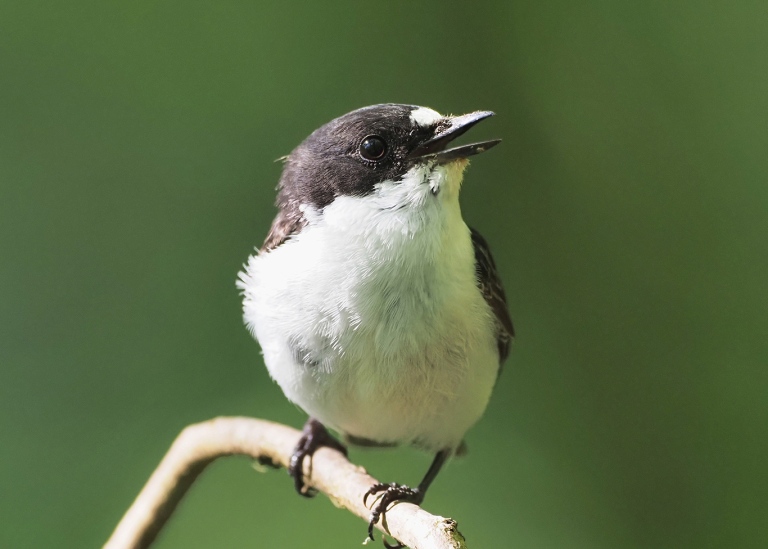
We spoke to the exhausted flood-response teams in the Hunter Valley. Here’s what they need when the next floods strike
Iftekhar Ahmed, University of Newcastle and Thomas Johnson, University of NewcastlePeople living in the Hunter region of New South Wales know all too well the devastation disasters can bring. After enduring the 2019-2020 horror bushfire season, La Niña settled in for three wet summers and residents experienced back-to-back floods.
Since early October, we’ve conducted nine in-depth interviews with members of flood-response teams in the Hunter for our ongoing qualitative research into how prepared these communities are for future floods. Many people in the Hunter are living in temporary accommodation. A councillor we spoke to pointed out, “there are still people living in caravans, and they’ll be in caravans for quite some time”.
For the Northern Rivers region, which was ravaged by record-breaking floods in February and March this year, some relief is coming.
Prime Minister Anthony Albanese and NSW Premier Dominic Perrottet today announced a A$800 million buyback scheme for residents in seven areas – including Lismore, Ballina and Tweed – where “major flooding would pose a catastrophic risk to life”. Some 2,000 homeowners will be eligible for funding to sell their homes, repair damage, or make their homes more resilient.
More flooding is expected across eastern Australia in coming weeks, as La Niña conditions are set to persist until early 2023. This is a time to take stock of the lessons gained from the previous spate of floods, and to assess how agencies and communities are heeding these lessons to manage coming floods.
Floods In The Hunter
Overall it seems regular warnings are being provided and agencies have actively stepped up their operations. Still, some Australian communities currently experiencing floods, such as in Victoria, remain vulnerable.
For example, this month many people have become marooned in places where flood defences were inadequate and it was too late to evacuate.
Our research focuses on the Hunter region’s experience of recent floods as they relate to climate change. We want to find out how local communities can improve their resilience and capacity to adapt to floods.
In the Hunter, floods have severely impacted businesses. Cumulative losses in businesses across the region caused a significant economic setback, at a time when many were still struggling with the economic impacts of COVID.
For example, a pub in the centre of Wollombi was submerged to its roof last July. And a vineyard and resort owner we spoke to explained: “We were trapped here for nearly a week in July, including some resort guests”.
Towns such as Broke, Gillieston Heights, Maitland and Singleton were completely isolated, as road networks became inundated. This made evacuations difficult or even impossible.
A police officer said people were trapped in recent floods and he expected the same if another flood strikes, adding: “We need to put in place better evacuation systems.”
Great demands are placed on volunteers of the State Emergency Services (SES). As one volunteer said: “I just joined the SES early this year and since then it has been a very busy time!”
Other volunteers mentioned the potential for “burnout” after dealing with so many floods over a long time, including this month.
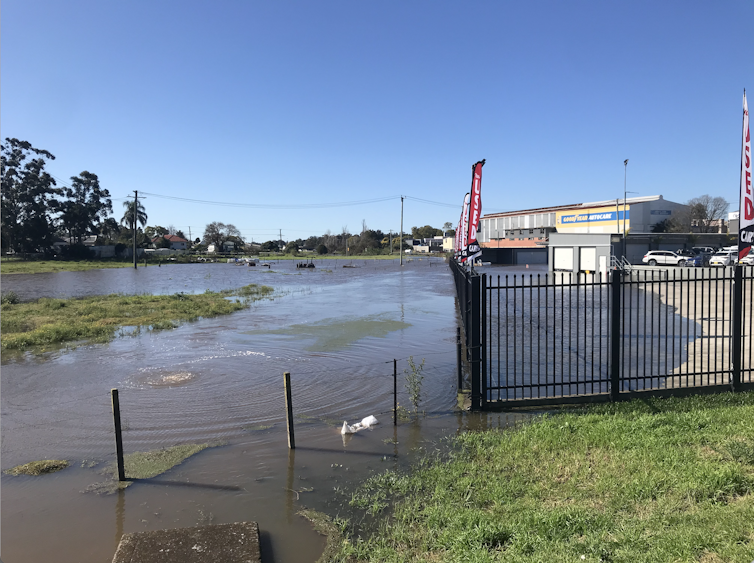
Mixed Messages
The biggest problem to be solved, according to our interviews, is inadequate communication.
A local police officer told us: “The focus should be on early warning and communication. There were mixed messages [to residents] from the services on the ground”. This was in regards to when exactly residents should evacuate.
These mixed messages not only hampered timely evacuation operations, but also strained the communication between the regional Emergency Management Centre and on-ground staff, as well as between emergency services and communities.
He also pointed out the challenge of local complacency to heed warnings, encapsulated in the typical “She’ll be right” mentality.
Research shows social media offers communication opportunities during disasters, but it’s also evident that the potential for misinformation on social media can hinder effective communication. Lack of internet access and language barriers can also make effective communication difficult.
Another police officer said: “Communication is something that I am always thinking of. It’s not just us getting the messages out but getting [communities] to hear our messages and respond to them appropriately”.
The importance of emergency communications has been highlighted in Australian research on disaster risk management. For example, a 2016 paper found around 20% of all emergency management problems since 2010 were linked to communicating with communities.
As agencies and communities grapple with frequent flooding, it seems preparedness measures may indeed be improving. For example, in anticipation of Victoria’s floods this month, we saw the rapid deployment of sandbags and even the building of a new levee in Echuca.
Across towns in the Hunter regions, our research participants told us of efforts to improve, for instance, equipment supply and inter-agency coordination. For example, the NSW SES have, in recent years, initiated “Flood Forums” to gather together, plan and coordinate different emergency agencies, in response to communications issues.
What Next?
Another key area that deserves attention is to understand the multi-hazard scenario confronting Australian agencies and communities, as we face back-to-back bushfires, floods, and storms under climate change.
One way to tackle this is by bringing together agencies, such as the Rural Fire Service and the SES, into coordination to address multiple hazards, perhaps even as a single entity.
Interestingly, this was suggested by both SES and Rural Fire Service volunteers in our research interviews. They told us that combining the agencies into a single entity would lead to, for instance, less competition for recruiting volunteers.
As soil remains sodden and catchments are saturated, towns across Australia should be wary of more floods in the coming weeks. We hope being awareness of the urgent need for disaster management agencies to communicate better will lead to tangible improvements.![]()
Iftekhar Ahmed, Associate Professor, University of Newcastle and Thomas Johnson, Associate Lecturer, University of Newcastle
This article is republished from The Conversation under a Creative Commons license. Read the original article.
Money for dams dries up as good water management finally makes it into a federal budget
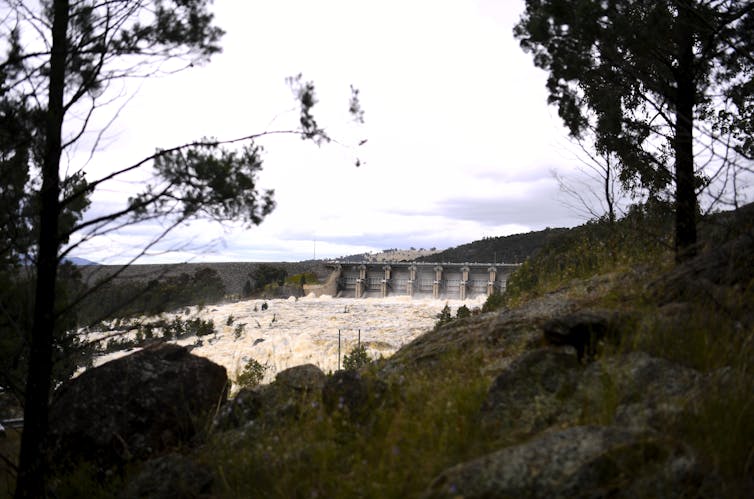
A story from the early days of the Abbott government still circulates in the halls of Parliament House.
The government’s Expenditure Review Committee apparently supported then Minister for Agriculture Barnaby Joyce’s first A$500 million budget funding for the National Party’s dam-building plans, over then Treasurer Joe Hockey’s objections. Hockey reputedly said to Joyce “good luck with that, I don’t think you’ll build one of them”. If true then Joe, take a cigar.
In our land of drought and flooding rains, better water management should feature in every federal budget. Thankfully, the budget handed down by Treasurer Jim Chalmers on Tuesday delivers it.
It slashes spending on big dams and elevates the role of science in water decision-making. It also positions Labor to undertake further reform in the Murray-Darling Basin by buying back more water from farmers to improve the health of the rivers, and manage the impacts of climate change.
These measures promise to deliver more sustainable use of water in Australia’s most economically important and exploited river system. But they also buy a fight with some quarters of the farming community, and the New South Wales and Victorian governments.
Nationals Set About Building Dams
Dams are a talisman for Australians who believe development and the conquest of nature is essential to nation-building.
The National Party arguably exemplifies this ideology. It gained control of the water portfolios in the former federal government and current NSW government and set about trying to build dams, especially in the Murray-Darling Basin.
The Liberal Party has conceded to National Party demands on water even though the National Water Initiative, established by the Coalition in 2004, stipulates:
proposals for investment in new or refurbished water infrastructure […] be assessed as economically viable and ecologically sustainable prior to the investment occurring.
This week’s budget wields a long overdue axe to dam proposals from Coalition governments, saving $1.7 billion over four years. Two of the most controversial dam proposals in the Murray-Darling Basin are among those axed or indefinitely postponed.
First is the $1.27 billion Dungowan proposal near Tamworth in NSW. It was slammed by the Productivity Commission as excessively expensive and the leading example of poor water infrastructure decision making.
Second is the hugely expensive - up to $2.1 billion at last estimate - raising of Wyangala Dam, near Cowra. In 2021 a NSW parliamentary inquiry found the proposal was “yet to demonstrate the cost effectiveness and water yield benefits of the project”.
Further, $153.8 million of unallocated funding in former “water efficiency” projects in the basin has been (somewhat ambiguously) “re-profiled”. These efficiency projects have been criticised as double-counting water at the expense of the environment, being very expensive and subsidising irrigators.
Importantly, Labor has quietly sought to lock a commitment to better governance with transparent environmental and socio-economic assessment standards in a new National Water Grid Investment Framework.
Science And The Murray-Darling Basin
Labor has allocated $51.9 million over five years to strengthen the Murray-Darling Basin Plan “by updating the science to account for the impacts of climate change and restore trust and transparency in water management”.
This spending is timely. The past decade and more has seen risk-averse government agencies commission water research through narrow briefs to the government-owned CSIRO and other contractors. In one instance, the South Australian Royal Commission into the Murray-Darling Basin described this research as “improperly pressured” and representing “maladministration”.
The situation worsened when the research program into better water management commissioned by the independent National Water Commission was axed under Abbott in 2014.
This has resulted in science that may not be independently peer-reviewed and often doesn’t address the big questions.
For instance, after allocating around $13 billion for water management reforms in the basin since 2008, governments still can’t tell the public:
why water inflows into South Australia are about 22% lower than basin modelling projected (excluding climatic variability)
the area and types of wetlands watered each year
if threatened species populations are recovering.
Further, water institutions in the basin do not currently adequately address the threat of climate change.
Returning Water To The Rivers
Measures to implement the basin plan are meant to be complete in mid-2024. Consequently, allocated funding for all Basin water reforms was due to decline markedly after this point. Yet, major and expensive elements of the plan have still not been implemented.
In just one example, the Victorian and NSW governments were supposed to reach agreements and pay over 3,300 riverside land owners to fill river channels and allow water to spill safely onto the lower-most floodplains. This would conserve nearly 375,000 hectares of wetlands, and maximise conservation of flora and fauna with the limited volume of available environmental water.
However, since 2013 the state governments have failed to make a single agreement with land owners.
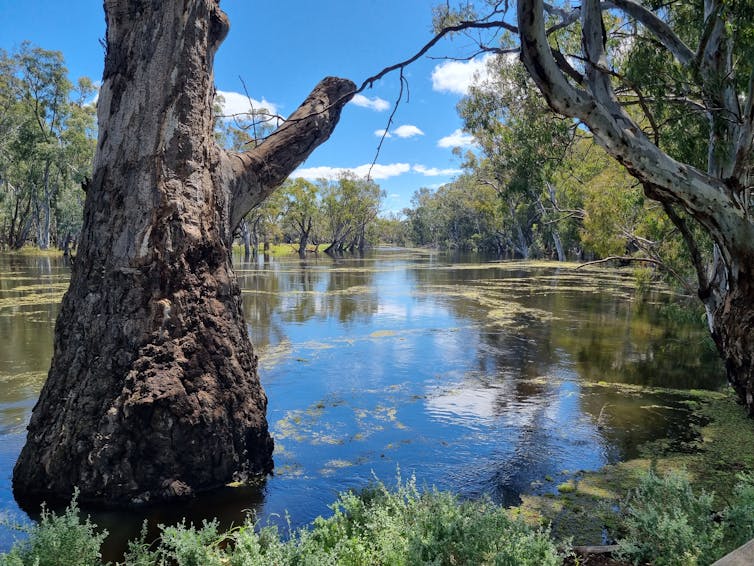
Hundreds of billions of litres of water that were supposed to have been reallocated to the environment are still missing. The latest federal budget describes the lack of water recovery for the environment as an unquantified “fiscal risk”.
Waving a big stick, Labor has allocated initial funding for meeting the environmental water targets in the plan. The amount of the funding has not been disclosed. It could involve purchasing water entitlements from farmers who volunteer to sell them – a move deeply opposed by the state governments and the irrigation industry.
The budget also funds repairs to other broken elements of the basin’s water governance. After a decade of cuts, the now Department of Climate Change, Energy, the Environment and Water will have funding restored to, among other goals, improve “the health of our rivers and freshwater ecosystems”.
There is also money to start work on re-establishing a National Water Commission, and to reform the much criticised water trading markets to make them more transparent and robust.
Finally, the budget allocates $40 million to begin addressing the appalling dispossession of water from Indigenous peoples, who now hold just 0.17% of surface water entitlements in the basin. It’s a small but important first step for water justice.![]()
Jamie Pittock, Professor, Fenner School of Environment & Society, Australian National University
This article is republished from The Conversation under a Creative Commons license. Read the original article.
Dead crustaceans washing up on England’s north-east coast may be victims of the green industrial revolution
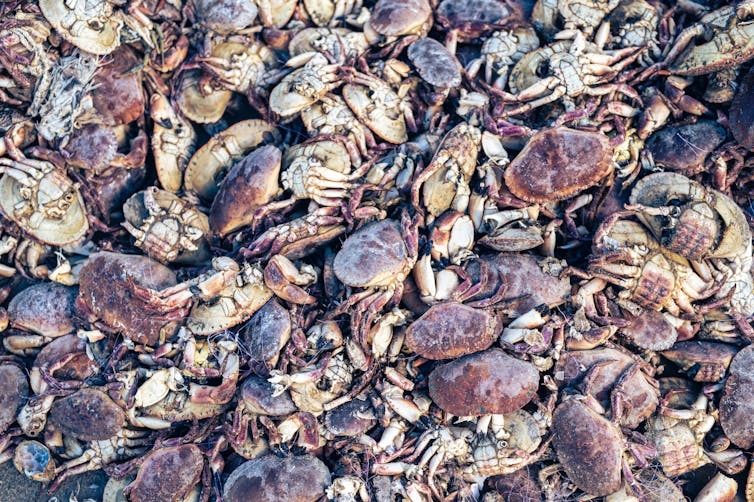
Thousands of dead and dying crabs and lobsters washed up along a 50km stretch of England’s north-east coast last autumn. Observers reported seeing the animals experience peculiar behaviours including convulsions, before suffering paralysis and death.
An initial investigation conducted by the Department of Environment, Food & Rural Affairs, concluded that a harmful algal bloom was most likely responsible for the deaths. Autumnal phytoplankton blooms are a normal part of temperate marine ecosystems and can produce potent toxins that attack an animal’s central nervous system. But such blooms typically don’t lead to deaths on the scale seen.
The government’s explanation has been contested by local fishermen. They believe recent intensive dredging has released industrial toxins, including pyridine, from the sediment of the River Tees.
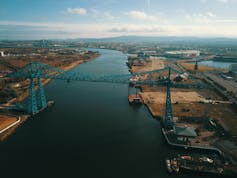
As an industrial solvent, pyridine is used in a wide range of manufacturing processes. It is also a by-product of coking coal, a crucial input for steel production. The Tees area was home to both steel and chemical industries and the discharge of contaminated effluent into the river and surrounding wetlands has been common practice, often with minimal or no treatment.
Attempts to understand what caused these deaths has set traditional coastal industries on a collision course with the region’s green growth aspirations.
I took part in efforts to determine what actually happened and whether pyridine could have caused the death of these crabs and lobsters. Using standard ecotoxicology methods, my research involved monitoring the behaviour, physiology and survival of the crustaceans in carefully controlled pyridine solutions. It became clear to me that pyridine may have played a major role in the death of these animals.
The Redevelopment Of Teesside
As one of the UK’s industrial heartlands, Teesside has been designated as a special economic zone, or freeport. The region will play a key role in the government’s Levelling Up programme and Clean Growth Strategy, including hosting the UK’s first hydrogen transport hub.
To facilitate this, the region’s major sea port is undergoing redevelopment. Teesport’s shipping canal has been widened and deepened and the South Bank quay is being reconstructed. This required dredging. Taking place last autumn, almost 150,000 tonnes of sediment has been displaced from the Tees estuary as part of the project.
The onset of the marine deaths coincided with this dredging campaign. This prompted the Environment Agency to undertake chemical analysis of the dead crabs. Pyridine levels recorded in the dead crabs were substantially higher than in those from outside the impacted area. But there was no existing toxicological data on the impact of pyridine on crabs and other large crustaceans.
My research concluded that pyridine is acutely toxic to crabs at concentrations well below those measured in the dead crabs. Even surviving crabs with very low pyridine doses behaved as if they were partially anaesthetised. A single droplet of pyridine per litre of seawater would be sufficient to kill half of the crab population exposed to it.
Further analysis of biochemical markers showed major spikes in the production of reactive oxygen species in the muscle tissue. This means that the animal’s muscle cells have experienced major stress, with the potential for damage to DNA, proteins and cell membranes, which could lead to cell death.
However, although pyridine was detected in the crabs examined by the government investigation, it was not detected in water samples. As a result, pyridine’s involvement in the deaths has been dismissed by the Environment Agency.
Why Has Pyridine Gone Undetected?
Pyridine is highly water soluble, very volatile and vulnerable to attack and destruction by oxygen. By the time water samples are taken, any pyridine could have been heavily diluted, lost to the atmosphere or destroyed.
Despite this, earlier this year researchers at the University of York still measured trace levels of pyridine in surface sediments both along the River Tees estuary and in the spoil grounds – the areas of the sea where dredged material is deposited. Given the volatility and instability of pyridine in the presence of oxygen, this implies a large pyridine reservoir deep in the sediment of the Tees that is percolating steadily up to the surface.
My colleague at Newcastle University has also undertaken a range of computer simulations. They show that this reservoir, once disturbed by dredging, could have released enough pyridine (among many other chemical contaminants) to account for mortalities on the scale and range of those recorded last autumn. The size of the pyridine reservoir still needs to be verified to ground the models in real-world data.
Research has so far not prevented additional dredging work for the new South Bank quay. But the sediment there contains high levels of long-lasting pollutants, including heavy metals and various industrial chemicals. Should these sediments be dumped at sea, it could render England’s northeast coastline toxic for generations.
Teesside is undergoing rapid redevelopment to hasten the green industrial revolution. But in so doing we have been forced to reconcile with the region’s industrial legacy. It will take a change in current working practises and in the disposal of dredged sediment to ensure this redevelopment can continue without causing more damage to the marine ecosystem.![]()
Gary Caldwell, Senior Lecturer in Applied Biology, Newcastle University
This article is republished from The Conversation under a Creative Commons license. Read the original article.
Indigenous defenders stand between illegal roads and survival of the Amazon rainforest – Brazil’s runoff election Sunday could be a turning point
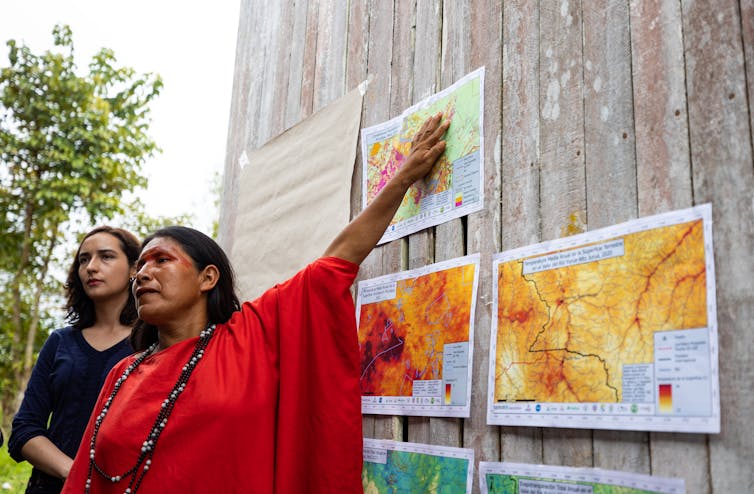
Leer en español ou em português
The Ashéninka woman with the painted face radiated a calm, patient confidence as she stood on the sandy banks of the Amonia River and faced the loggers threatening her Amazonian community.
The loggers had bulldozed a trail over the mahogany and cedar saplings she had planted, and blocked the creeks her community relied on for drinking water and fish. Now, the outsiders wanted to widen the trail into a road to access the towering rainforests that unite the Peruvian and Brazilian border along the Juruá River.
María Elena Paredes, as head of the Sawawo Hito 40 monitoring committee, said no, and her community stood by her.
She knew she represented not just her community and the other Peruvian Indigenous communities, but also her Brazilian cousins downstream who also rely on these forests, waters and fish.

The Indigenous residents of the Amazon borderlands understand that the loggers and their tractors and chainsaws are the sharp point of a road allowing coca growers, land traffickers and others access to traditional Indigenous territories and resources. They also realize that their Indigenous communities may be all that stands in defense of the forest and stops invaders and road builders.
The 2022 elections could be a turning point away from deforestation, unsustainable road building and the targeting of Indigenous lands – or the election results could continue to escalate the pressure. After a closer than expected first-round vote, Brazil’s presidential race is headed for a runoff on Oct. 30.
Explosive Growth Of Illegal Roads As Government Pulled Back
During Jair Bolsonaro’s presidency in Brazil and the COVID-19 pandemic, the Amazon rainforest has witnessed explosive growth in informal and illegal roads.
The Amazonian departments of Ucayali, Loreto and Madre de Dios, Peru, saw road expansion increase by 25% from 2019 to 2020 and 16% from 2020 to 2021. In the Brazilian Amazon, roads are being built at such a rapid pace that researchers are turning to artificial intelligence to map the expansion.
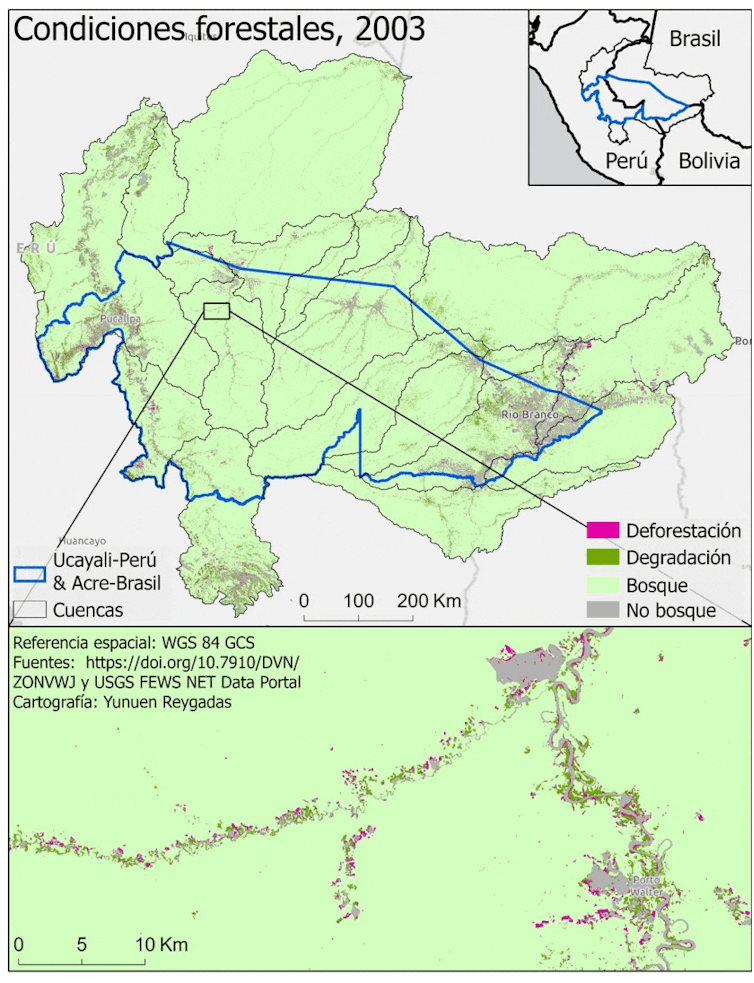
Roads are the most damaging infrastructure in the tropical rainforest, bringing deforestation and a host of related cultural and environmental impacts.
Research shows that Indigenous lands are crucial to safeguarding the forest ecosystems and immense carbon stores. These territories, covering about a third of the Amazon region, act as a buffer against road expansion, reducing both deforestation and fires.
But the Indigenous communities near the border between Peru and Brazil are experiencing an onslaught on their homelands.
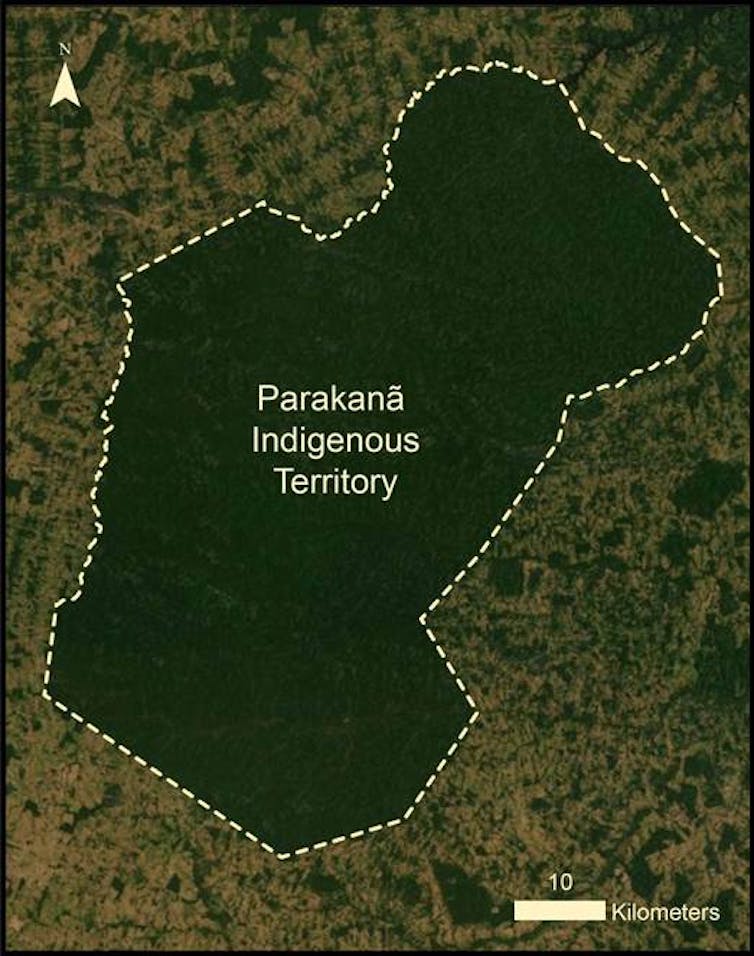
When the pandemic forced governments to reduce monitoring and law enforcement in the remote rainforests, the illegal road builders, loggers, miners and traffickers increased their presence and work rate. The state’s absence gave them a relative respite from law enforcement, and in Brazil, they were goaded on by Bolsonaro’s anti-environment, anti-Indigenous and anti-science rhetoric.
A combination of road-building, climate change-induced forest heating and drying, and related deforestation is pushing the Amazon rainforest toward a tipping point that could turn the world’s largest rainforest and reserve of terrestrial biodiversity into a sparsely wooded savanna in just a few decades.
Elections Could Turn The Tide
A few hours downriver from where she confronted the loggers, Paredes and other Peruvian Indigenous leaders met with their Brazilian counterparts in September 2022 to discuss strategies to stop the invasions. The Brazilian leaders included Francisco Piyako and Isaac Piyako, two Indigenous Ashéninka brothers who ran for election at the federal and state levels but lost amid the southern Amazon’s conservative turn toward agribusiness.
While Brazil’s election included more Indigenous candidates than any in Brazilian history, with the 186 candidates representing a 40% increase over 2018, few of those candidates won.
Two Indigenous women with strong anti-Bolsonaro platforms emerged from the election as federal deputies: Sônia Guajajara in São Paulo state and Célia Xakriabá in Minas Gerais. Marina Silva, a former environment minister and past Green Party presidential candidate, also won election as a federal deputy in São Paulo state. Seven other self-declared indigenous candidates won at various levels, but most didn’t run on pro-Indigenous rights or environment platforms.
These results place the future of the Amazon very much in the hands of Brazil’s national election.
On one side of the presidential election stands Bolsonaro, a populist who has derided Indigenous people, environmentalists and science while weakening environmental and Indigenous agencies and inciting miners, loggers, ranchers and agribusiness leaders to cut down the forest.
On the other side is Luiz Inácio Lula da Silva – commonly called Lula – a former Brazilian president who is arguing for zero deforestation. Da Silva had 48.4% of the first-round vote to Bolsonaro’s 43.2%.
Peru also held elections on Oct. 2 at the regional and municipal levels. In the Ucayali region, 37% of the candidates were Indigenous. But the elected governors in Peru’s Amazonian departments – a coca farmer in Ucayali, a miner in Madre de Dios and a doctor in Loreto who is under investigation by prosecutors – are not Indigenous.
In Maria Elena Paredes’ home district, Yurúa, pro-conservation Indigenous residents did win, providing one of few positive signs for the environment in the Amazon.
Without adequate pro-environment and Indigenous representation, the roads and extractive development will march forward, making the Peruvian side of the forest even more vulnerable. A victory for sustainability, conservation and culture in Brazil could resonate across political borders into Peru and the other seven countries that share the Amazon, just as Paredes’ intervention in Peru stopped the tractors from ruining the forests and streams that flow into Brazil.
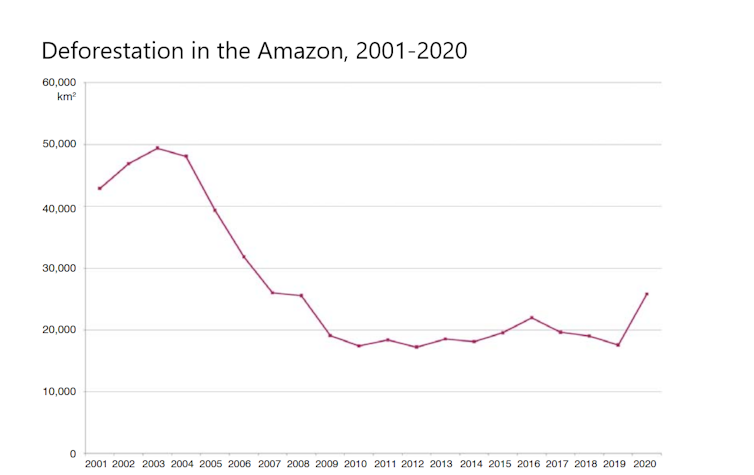
A Dangerous Job: Defending The Amazon
As leaders like Paredes and others defend their forests and people, they are also targets for violence.
In the Amazon borderlands, danger threatens from multiple sides, and justice is rarely served. The killing of journalist Dom Phillips and activist Bruno Pereira in June 2022 was just the latest high-profile attack. Global Witness reported that 200 land and environmental defenders were killed in 2021.
Fifteen years ago, the legendary Indigenous leader Edwin Chota protested the road that Paredes and her community are blocking today. He and three colleagues were later gunned down in 2014 after receiving death threats from loggers and traffickers. The killers remain free in the borderlands.
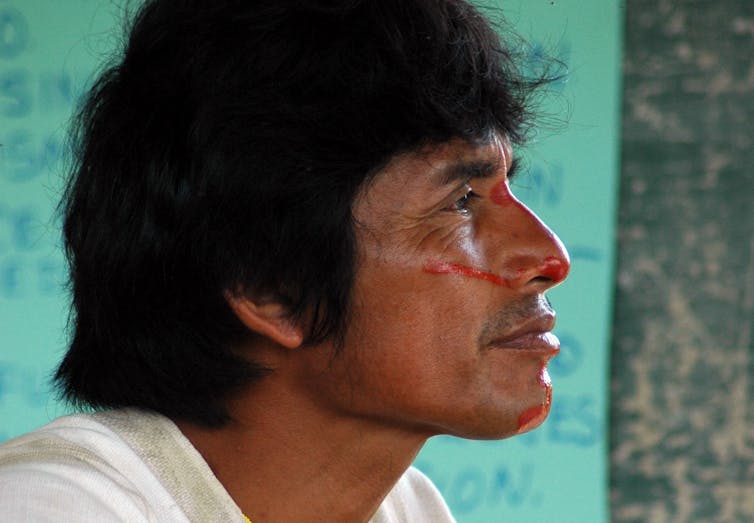

This summer, I visited Chota’s grave with over 20 of the surviving family and community members of the four slain defenders. Most of these families are afraid to return to their beautiful forests in the borderland community of Saweto, and instead remain on the outskirts of the city of Pucallpa, squeezed into dilapidated houses with intermittent electricity and clean water.
Far from their village, the children cannot build their cultural and environmental knowledge in the forest.
Five participants from Saweto were among the 120 Indigenous representatives from 13 ethnicities in the Amazon borderlands who joined our NASA workshop to discuss how they can use satellite imagery to monitor changes to the forest and climate. By integrating Indigenous ecological knowledge and geospatial analysis of the Amazon rainforest and climate, scientists and Indigenous groups can both better track the changing Amazon.
The Indigenous mothers, fathers and children told us they want training and education that will help them to protect their territory, adapt to climate change and build a sustainable future. Our NASA SERVIR project is creating mapping platforms based on satellite imagery analysis that the Indigenous communities, nongovernment organizations and government agencies can use to monitor roads, deforestation and climate change.
Indigenous Defense Is Crucial
All of humanity is feeling the effects of climate change. Our Indigenous colleagues recognize the changes in temperature, the water cycle and the seasons already happening in their communities.
Environmental land defenders like Paredes are working to keep the world’s largest forest standing tall in the face of threats that don’t just harm the Amazon. If the Amazon rainforest becomes a savanna, there will be reverberations in the climates of South America, the Caribbean, North America and across the globe.
Everyone loses if the Indigenous defenders of the Amazon do not have the support and educational opportunities needed to be safe, prosperous and empowered to protect their rainforest home.
This article was updated Oct. 11, 2022, with additional election results.![]()
David S. Salisbury, Associate Professor of Geography, Environment, and Sustainability, University of Richmond
This article is republished from The Conversation under a Creative Commons license. Read the original article.
Orangutans: could ‘half-Earth’ conservation save the red ape?
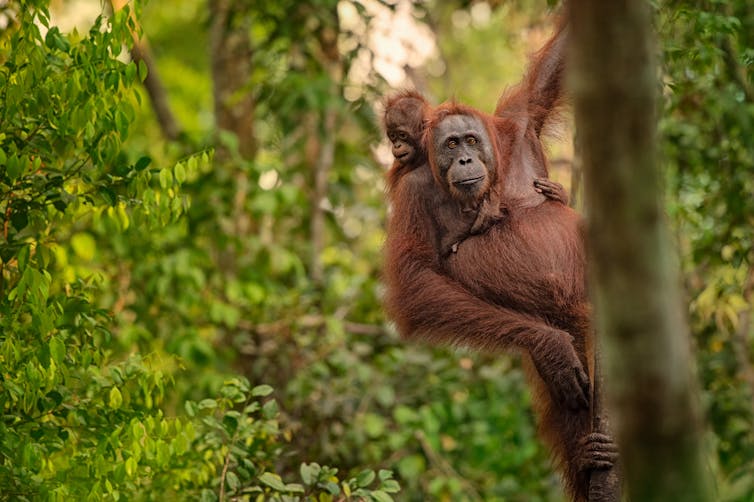
Half-Earth is a proposal by the late naturalist and “father of biodiversity”, EO Wilson. In its original context, it proposes that half of the Earth’s surface should be designated a human-free nature reserve to preserve biodiversity.
The proposal of course raises some pretty big questions. What happens to the people that happen to live in the areas designated to become human free? Would we give up on biodiversity in the other half of Earth? And whose half should be chosen and who decides? Would richer countries continue on their current path and tell poorer nations, especially those in the tropics with relatively intact forests and marine systems, that their part of the world will from now on only be for nature?
Perhaps not unexpectedly, the grand idea of half-Earth has attracted a lot of criticism as being unethical and infeasible. It has even led to a distinct counter-proposal: whole-Earth. Sometimes known as sharing the planet, this proposal focuses on things like equitable land management or finance, as its advocates argue that conservation will only ever work if we change the political and economic systems that are driving today’s crises.
It is difficult to judge the merits of half and whole-Earth without testing what either would mean on the ground. This is what we recently set out to do by applying our interpretations of these two options to the conservation of an animal we have studied for decades – the orangutan.
Expert Predictions
We focused on Borneo, the world’s third largest island (only Greenland is significantly larger) and home of most orangutans. The Bornean orangutan is listed as “critically endangered” as its habitat is being destroyed and many are killed for food, for profit or simply because people fear them (direct killing remains a major problem on a par with deforestation).
We gathered a group of 33 other experts, mostly scientists with a specific track record of estimating orangutan population sizes. They were then asked (confidentially) what would happen to Bornean orangutans in the next decade under half- and whole-Earth conditions (translated as half and whole-Borneo) compared to continuing business-as-usual conservation practices. Our results are now published in the conservation journal Oryx.

The experts predicted that business-as-usual would mean the total population of orangutans on Borneo would decline by around 27% between now and 2032. That is clearly not sufficient to support the protection of the species.
Half-Earth was predicted to strongly reduce orangutan declines. The experts, in fact, concluded that it would be comparatively easy to achieve and would reduce population decline by at least half compared to current management.
However, the experts thought whole-Earth would lead to greater forest loss and ape killing and a 56% population decline within the next decade. Whole-Earth approaches are valuable but may not be workable for the short-term orangutan conservation needs, because of political and economic realities on the ground.
The good news is that the experts predicted that, if orangutan killing and habitat loss were stopped, populations could rebound and reach 148% of their current size by 2122.
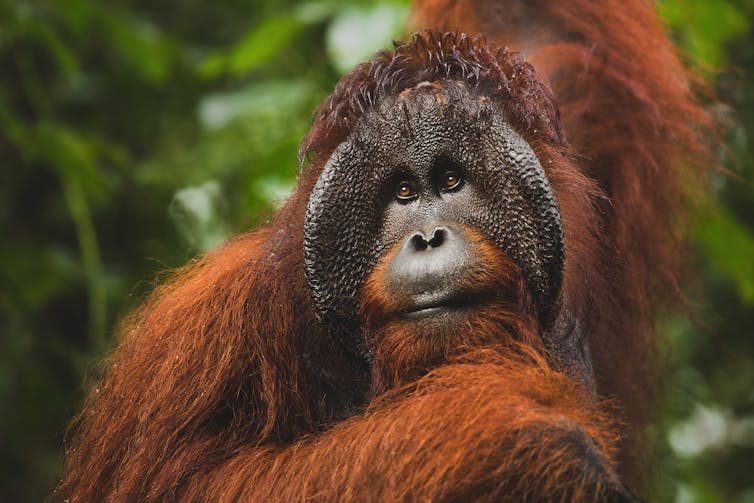
Despite more than 100,000 orangutans lost over the past two decades, the experts now see glimmers of hope. Indonesian and Malaysian deforestation rates are down, as are expansion rates of oil palm and other crops. How should orangutan conservation proceed from here? What are the best strategies?
Protections – On Paper
Interestingly, both the Indonesian and Malaysian governments had more or less reached the objective of legally designating half of the land mass as protected in their respective states of Kalimantan and Sabah.
With 67.1% of Indonesian Borneo designated as state forest, Indonesia already exceeds the half-Earth goal of locking in 50%. Malaysian Sabah has also exceeded the half-Earth goal, with 65% of the state remaining forested.
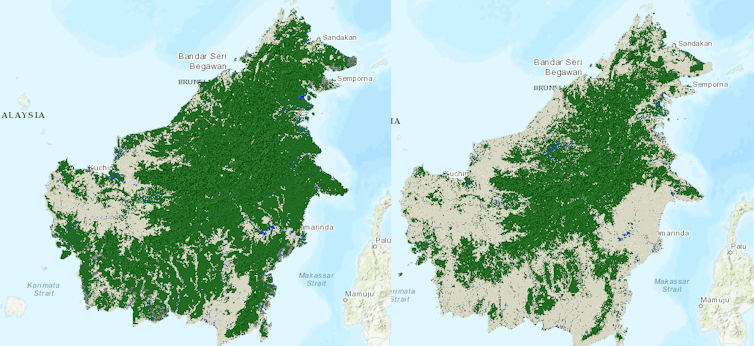
This is all on paper though, and a lot of effective conservation investment and management would be needed to ensure that these orangutan habitats would indeed remain permanently forested, and that the other key threat – killing – is effectively addressed.
This is where elements of the whole-Earth approach are helpful, as it might prompt a more sensitive and equitable engagement with rural communities. Communities need to be given responsibility for coexisting with orangutans and there must be incentives to protect orangutans and their habitats. And companies – logging, mining, or plantations – need to be made legally responsible for ensuring that the protected orangutan can survive and thrive on the lands that they manage. Ultimately, we need to protect both orangutans and humans’ rights and access to their customary lands.
In the case of orangutans, half-Earth seems to be a good idea in the short term, especially with regard to habitat loss. Whole Earth-type approaches might be needed in the longer term to ultimately ensure a reduction in the number of orangutans who are killed or have to be captured and relocated.
Neither approach is likely to provide a silver bullet. Every conservation context is going to be different and will require its own specific solution. It is therefore also important to just get on with conservation and not spend too much time thinking about ideal solutions.
It is not an easy path ahead, but solutions exist that can ensure the long-term survival and even recovery of the Asian red ape.![]()
Erik Meijaard, Adjunct Professor of Conservation, University of Kent and Serge Wich, Professor of Primate Biology, Liverpool John Moores University
This article is republished from The Conversation under a Creative Commons license. Read the original article.
Playing sea soundscapes can summon thousands of baby oysters – and help regrow oyster reefs

Imagine you’re in a food court and spoilt for choice. How will you choose where to eat? It might be the look of the food, the smell, or even the chatter of satisfied customers.
Marine animals do the same thing when choosing a good place to live. Even seemingly simple creatures such as marine larvae use sight, smell and sound as navigational cues. Once we understand these cues, we can use them to help nature recover faster than it would on its own.
In our new research, we amplified the natural sounds of the sea through underwater speakers. We were testing if sound cues would draw baby oysters to swim to the locations where we are trying to regrow oyster reefs. It worked better than we’d hoped. Many thousands more larvae swam to our locations than control areas and settled on the bare rocks.

Why Can’t These Reefs Return Naturally?
Oyster reef restoration is gaining momentum in Australia and globally as a way to restore healthy ecosystems. Reefs of shellfish filter and clean vast volumes of water as they feed, while their shell piles provide habitat for fish. Oysters are also food for many marine species.
These highly productive shellfish reefs once spanned thousands of kilometres of Australian waters, but more than 90% were dredged up for food and or to use their shells as lime for cement during the early colonial years.
When we try to restore these reefs, however, we hit a problem. Free-swimming baby oysters need to find the boulders we drop onto sandy seafloors at our restoration sites.
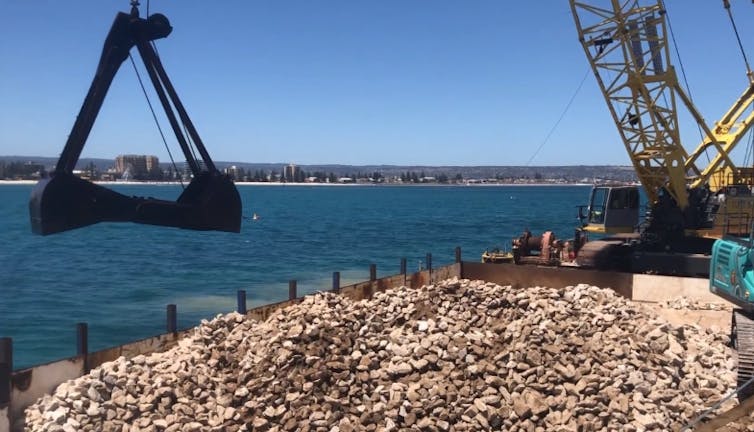
That’s where our siren songs come in. Many marine animals use sound like we use sight on land. Think of whalesong, which lets whales communicate over long distances. Sound is more useful than sight or smell underwater because it can carry information a long way – much further than you can see – and without getting pushed about by ocean currents.
If you’ve snorkelled on a coral or rocky reef, you’ll know healthy reefs are surprisingly noisy. As you float over the reef, you hear a cacophony of sound: crackles and pops from fish as they feed and invertebrates like snapping shrimp.
If this soundscape is present, it tells oyster larvae it’s a healthy habitat. And because sound travels so well, the soundscapes are broadcast a decent distance. That’s why it’s such a useful cue if you’re a baby oyster looking for a rock to settle on and begin growing your shell.
To test if this works outside the laboratory, we recorded sounds from the healthy Port Noarlunga Reef in South Australia. Then we played these sounds underwater near two large reef restoration sites offshore from Adelaide and the Yorke Peninsula.
This attracted up to 17,000 more oysters per square metre to our restoration sites. Not only that, but over the next five months, close to four times more large oysters grew in our test areas, which accelerated habitat growth. By contrast, the areas where we played ambient sound from oyster-free areas produced only stunted habitat with few oysters settling.
Hang On, Oysters Can Hear?
The way we hear is based on the pressure of soundwaves hitting our eardrums. Marine mammals like seals and dolphins hear this way too. But fish and marine invertebrates such as oysters are different.
Oyster larvae are brainless and earless, but they are certainly not clueless. Like fish, they hear by detecting and interpreting the movement of water particles stirred up by soundwaves as they pass. Soundwaves alternately squish and stretch water particles, sending vibrations in the direction the soundwave is moving. Oysters sense this motion with tiny sensory hairs, or with statocysts, sensory organs used for balance and orientation.
Despite being only the width of a human hair themselves, larval oysters use these organs to follow these vibrations back towards the healthy reef producing the sound. In adult oysters, the tiny statocyst is near impossible to find. But swimming oyster larvae project their statocysts out in front of them, presumably to improve navigation and interpret marine sounds.
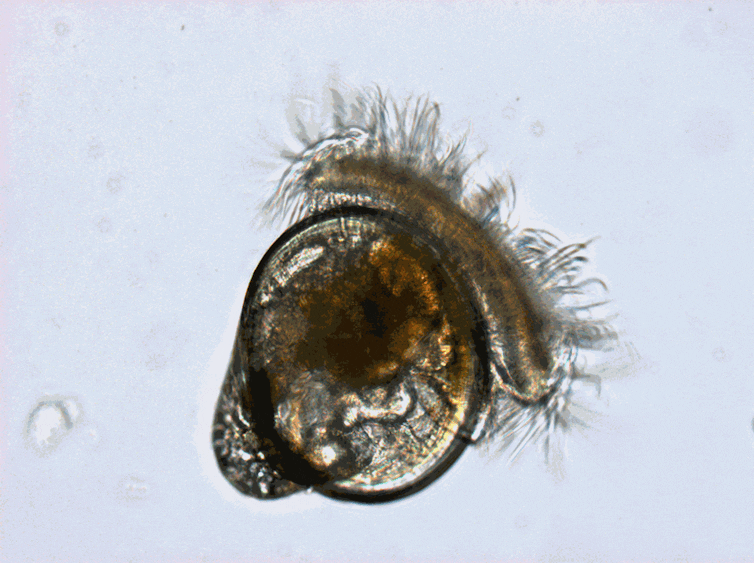
The Reefs Are Alive With The Sound Of Music
Researchers and community groups around the world are launching restoration efforts to repair some of the damage we’ve done. In Queensland, for instance, fishing communities in Moreton Bay offshore from Brisbane plan to restore 100 hectares of oyster reef over the next decade.
While exciting, success isn’t guaranteed. It can be hard to restore ecosystems which haven’t existed for a century. And it can be expensive to get large stocks of larvae.
This technique – and others like it – could help improve how many baby oysters or other keystone species actually make it to their new homes and start the great task of reef-building.
Researchers have discovered fish can be attracted to coral reef sites by playing healthy reef noises, and it has long been known that birds can be drawn to specific nesting sites by playing their social calls.
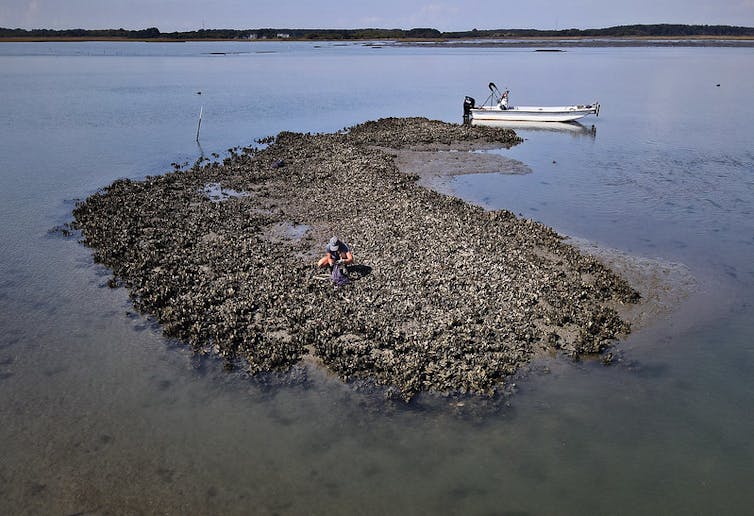
In science, there’s no such thing as a silver bullet and there are potential downsides. It wouldn’t help if we drew all larval oysters to our sites at the expense of others – or if we attracted predators in large numbers.
But if we do this carefully, these techniques could help re-establish the invisible acoustic highways of the sea – and turn the deathly quiet of many coastal waters back into vibrant, noisy and healthy oyster reefs. ![]()
Dominic McAfee, Postdoctoral researcher, marine ecology, University of Adelaide; Brittany Williams, PhD Candidate, University of Adelaide; Lachlan McLeod, PhD Candidate, University of Adelaide, and Sean Connell, Professor, Program Director of Stretton Institute, Program Director of Environment Insitute, University of Adelaide
This article is republished from The Conversation under a Creative Commons license. Read the original article.
Labor’s ‘sensible’ budget leaves Australians short-changed on climate action. Here’s where it went wrong
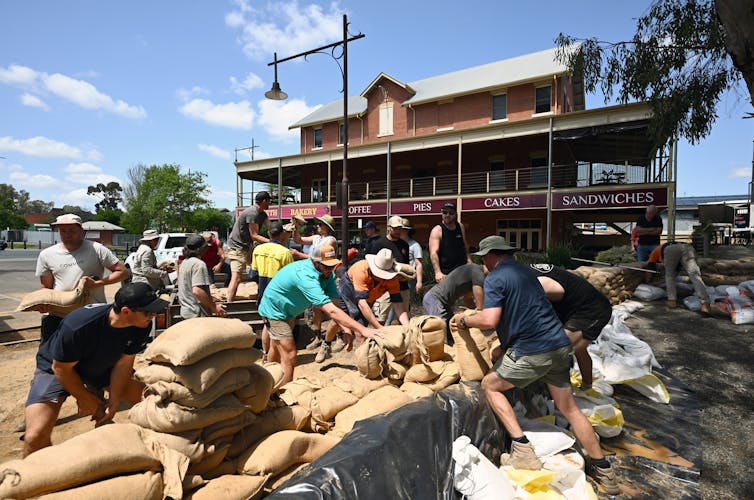
Treasurer Jim Chalmers last night delivered a budget he declared was “solid, sensible and suitable to the times”. But what does a sensible budget look like in a world that is fast running out of time on climate change?
Lowy Institute polling this year suggests most Australians believe immediate and substantial action on climate change is eminently sensible. Some 60% agreed global warming was a serious and pressing problem for which “we should begin taking steps now even if this involves significant costs”. A further 29% want mitigation to occur gradually.
Chalmers unveiled his budget in a precarious economic environment and amid fears of a looming global recession. But while the national conversation is focused on short-term economic pressures, the world is entering unprecedented territory of climate disruption.
This federal budget was Labor’s first opportunity to establish its economic vision for emissions reduction. Even as Chalmers prepared his speech, parts of Australia’s east coast were battling floods, and the summer rain outlook looks grim.
The budget earmarked a suite of worthwhile climate-related measures, but many are relatively piecemeal. As extreme weather events occur at a record-breaking frequency and severity, federal spending on climate action still falls well short.
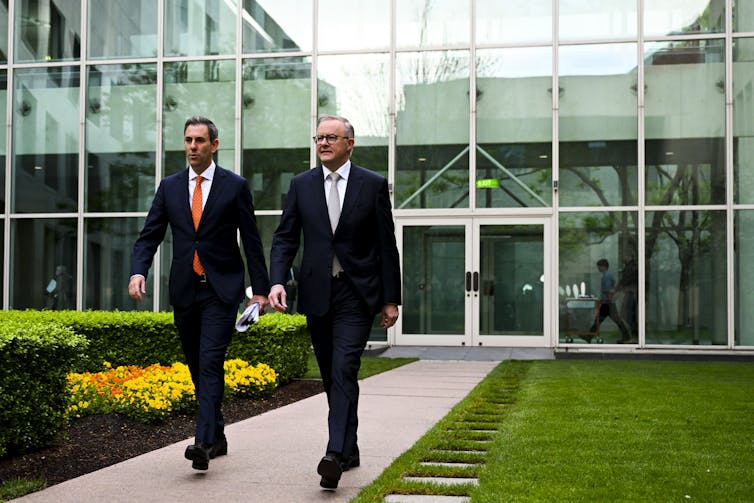
Where’s The Tangible Action?
Over the past few months, Labor has generated significant headlines on climate change.
It’s Climate Change Bill passed parliament last month. It means Australia’s greenhouse gas emissions must fall by 43% (relative to 2005 levels) by 2030, and emissions must reach net-zero by 2050.
Labor on Sunday also announced Australia will sign a global pledge to reduce methane emissions by 30% by 2030.
But setting these targets is just the first step. Limiting climate change to 1.5℃ degrees – the goal of the Paris Agreement – requires immediately reversing the upward trend in global emissions and making significant cuts over the next two decades. That means tangible actions must occur right now.
But looking at the budget papers released last night, it’s hard to see how Australia’s climate targets will be met.
What’s In The Budget For Climate?
Most budget measures related to climate change and the environment formed part of Labor’s pre-election platform. They include:
A$224 million over four years to fund 400 community batteries, and $100 million for community solar banks
the Rewiring the Nation plan: $20 billion of low-cost finance to improve Australia’s transmission network, and new investments in renewable electricity generation which aren’t yet detailed
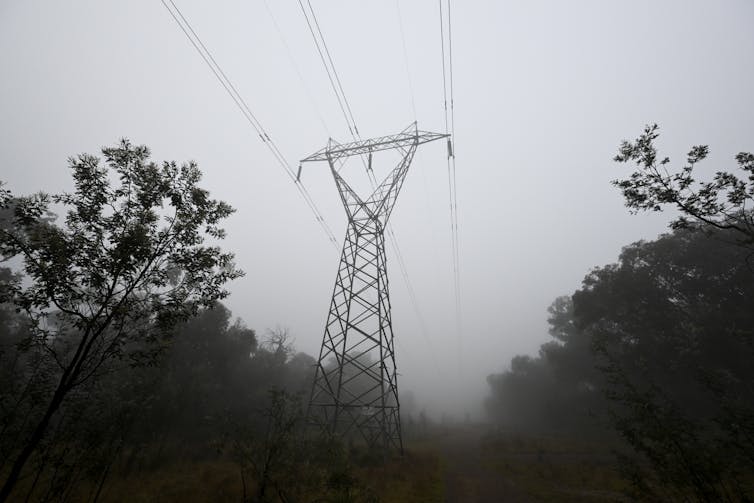
Also worth noting are measures to mitigate the future impact of climate change:
the Disaster Ready Fund to support adaptation measures such as flood levees, sea walls, fire breaks and evacuation centres
$225 million over four years to implement the Threatened Species Action Plan and funding to establish Indigenous Protection Areas and protect heritage places
increased funding to preserve and restore the Great Barrier Reef.
These initiatives are, in part, funded by a $747 million reduction in environment spending over the next four years. The cancelled spending includes projects for gas and carbon capture and storage, funding earmarked for the Murray Darling Basin, and other Morrison government measures.
The budget also contained subsidies and infrastructure investment to support the uptake of electric vehicles. This includes 117 electric vehicle charging stations on highways, exempting electric cars from the fringe benefits tax and removing custom duties on electric car imports.
Electric cars will reduce Australia’s dependence on international oil markets made volatile by Russia’s invasion of Ukraine.
But whether electric cars significantly reduce Australia’s transport emissions depends on the extent to which renewables power the electricity grid. Until coal and gas are phased out, many electric cars in Australia will be powered by fossil fuels.

Is It Enough? No
Chalmers said the budget drives investment in renewable energy and delivers thousands of new jobs. But what’s lacking are mechanisms that encourage or compel companies to reduce their emissions in line with nationally legislated targets.
Of course, it’s hardly the present government’s fault that such mechanisms are not in place. The former Coalition government’s decision to axe Labor’s carbon price left a gaping policy hole that put Australia at the back of the global pack on climate action.
The initiatives outlined in this budget should be applauded. But many Australians who voted for Labor, the Greens or the Teal independents wanted significant action on climate change – and they’re still waiting.
So what climate measures should the government be taking?
Many of the policies at its disposal would require new legislation and would not necessarily appear in the budget. They include ending logging of old-growth forest to reduce forestry emissions, and changes to the safeguard mechanism.
The government has flagged reforms to this policy, a legacy of the previous government that purports to set limits on emissions from big industrial polluters.
Given a price on carbon is politically challenging in Australia, the safeguard mechanism appears the most likely means through which industrial emissions reductions will be curbed.
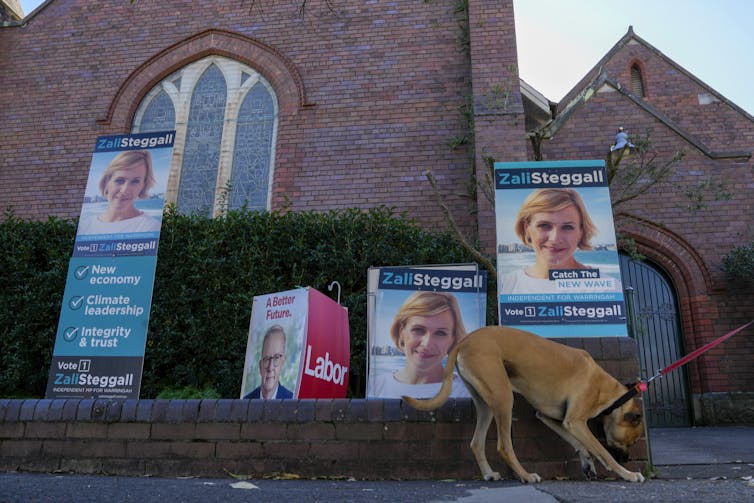
Hopefully other initiatives appear in future budgets, in good haste. They should include:
larger capital investments in renewable electricity generation and battery storage
a very significant funding boost for science and engineering research to produce further technological breakthroughs in low-carbon manufacturing and green steel production
electric vehicle charging stations powered by 100% renewable energy in every city and major highway
taxes on the worst climate offenders such as the beef and dairy industries and other sources of methane emissions.
And then we come to the elephant in the room: the emissions created when Australia exports fossil fuels to countries where it’s burned for energy.
Domestically, Australia is responsible for about 1.5% of global emissions. But factor in our fossil fuel exports and that rises to about 5% – and may jump to up to 12% by 2030.
So perhaps the most significant decisions Labor will make for the climate change aren’t budget initiatives at all – but rather, what fossil fuel exploitation the government allows in coming years.
Let’s Get Started
This budget included, for the first time, a statement on the fiscal impact of climate change.
It outlined the damage climate change can cause to government budgets including the cost of “responding to extreme weather events, which are likely to increase in severity and frequency”.
One thing is clear: Australia must reduce its greenhouse gas emissions and transition away from its reliance on fossil fuel exports. It’s in the nation’s best economic interests – and there’s no better time than now to begin this work in earnest.![]()
Timothy Neal, Senior research fellow in the Department of Economics, UNSW Sydney
This article is republished from The Conversation under a Creative Commons license. Read the original article.
Out of bounds: how much does greenwashing cost fossil-fuel sponsors of Australian sport?

High-profile Australian athletes and supporters across sports such as cricket, netball and Australian Rules football have recently called for their sports to reconsider their partnerships with fossil fuel or mining companies.
Our report, released today, is the first research to quantify the number and value of fossil-fuel sponsorships in Australian sport. It reveals coal, gas and oil companies spend A$14 million to A$18 million each year sponsoring 14 high-profile leagues and sports in Australia.
We identified 51 such partnerships. The major fossil-fuel sponsors of sport include companies such as Santos, Alinta, BHP and Woodside.
The money these sponsors spend on sport is at least partly an investment in “greenwashing” their images. Fossil fuel corporations are major sources of the emissions that drive climate change, but through sports sponsorship they leverage the positive image of sport and fan loyalty associated with teams.
The association of these sponsors’ names and logos with popular sports and athletes can sanitise the image of fossil fuel companies. When sports embrace high-polluting brands, they help normalise those companies’ contributions to the climate crisis.
But many Australian sport organisations are starting to take action to reduce their carbon footprint. They are also leveraging their media profiles to promote environmentally positive behaviours. As they do so, coal, oil and gas sponsorships and partnerships are coming under increasing public scrutiny.
Why Does This Matter For Sport?
Sport is part of the Australian cultural identity. Millions of Australians watch and play sport. Hundreds of thousands volunteer every week to do the work needed to bring community sport to life.
Sport is integral to the social fabric of communities. It provides well-documented mental and physical health benefits as well as social benefits for participants. Sport also contributes around $50 billion a year to the Australian economy.
However, climate change is both an immediate and future threat to sport in Australia.
Increasing heat as a result of climate change is a problem for sport. The viability of iconic sporting events such as cricket’s MCG Boxing Day Test and the Australian Open tennis could be threatened by heatwaves reaching highs of 50℃ by 2040. Extreme heat poses a risk for community sport too.
Higher temperatures are also driving longer and more intense bushfire seasons, exposing athletes and spectators to dangerous air pollution.
In this context, accepting sponsorship from coal, gas and oil corporations creates reputational risks for Australian sport.
Which Sports Are Favoured?
Our report, Out of bounds: coal, gas and oil sponsorship of Australian sports, was prepared by Swinburne University of Technology’s Sport Innovation Research Group for the Australian Conservation Foundation. We identified 51 partnerships (3.5% of all partnerships) between 14 top-tier sporting organisations and coal, gas and oil companies. We found oil and gas companies tend to sponsor Australian Rules football, rugby union and rugby league, while fossil-fuel energy retailers favour partnerships with cricket, soccer and netball.
While not a small level of investment, we suggest these 14 sports could, over time, replace the $14 million to $18 million they receive each year.
The benefits that associating with sport provides to these corporations would be much more difficult for them to replace.
What Can Sports Do?
There is a solution to this challenge for the Australian sport industry. Sport organisations have a history of having to move away from corporate sponsors due to growing public concern about their impact on individual and community health and wellbeing. Tobacco, alcohol and gambling are just some industries that have faced regulation to control their involvement with sport as a promotional platform.
Cricket Australia has already announced it is parting ways with Alinta Energy when its nearly $40 million, five-year sponsorship deal ends in 2023.
The road away from coal, oil and gas company sponsorship of sport, as well as wider environmental approaches, can be either direct or indirect. Directly, organisations or brands can end or reject coal, oil and gas sponsorship. They can also actively advocate or illustrate sports’ role in a more sustainable future.
Indirectly, sports organisations may “signal an intent” by signing a climate-related agreement or join an environmental association as an institutional member. For some sport organisations these commitments appear at odds with their sponsorship partnerships with oil, coal and gas companies.
Global and national concern about the impacts of climate change on human health and the environment is growing. Sports fans are increasingly likely to question sponsorship arrangements with corporations that extract or sell coal, gas and oil.
Sporting competitions and clubs should actively work to avoid such reputational risks. They need to recognise the influence their brand has on society, especially as it relates to the climate crisis that’s also threatening the viability of sport.![]()
Emma Sherry, Professor and Co-director, Sport Innovation Research Group, Swinburne University of Technology; Brian P. McCullough, Associate Professor of Sport Management and Director, Center for Sport Management and Education and the Laboratory for Sustainability in Sport, Texas A&M University, and Olivia Bramley, PhD Candidate, Sport Innovation Research Group, Swinburne University of Technology
This article is republished from The Conversation under a Creative Commons license. Read the original article.
Beyond a state of sandbagging: what can we learn from all the floods, here and overseas?
Penny Allan, University of Technology Sydney; Andrew Toland, University of Technology Sydney, and Martin Bryant, University of Technology Sydney“We are […] sandbagging the state”, New South Wales Emergency Services Minister Steph Cooke declared on Saturday. And so we endure the third La Niña season with this waiting-for-the-next-disaster attitude.
After heavy rain and repeated floods across Australia’s eastern states over the past three years, it’s worth considering what we have and haven’t learned.
A good way to improve flood readiness is to understand how floods work, and then to examine adaptive solutions developed by communities facing similar situations in other countries. Every river behaves differently and responses should site-specific. However, the following approaches may be relevant to local conditions and are likely to improve flood protection.
Work With Nature, Not Against It
Flooding is complex. Factors such as climate variability, soil saturation, loss of vegetation cover in key parts of catchments, the growth of urban areas and their hard surfaces, the failure of early-warning systems, the erosion of community self-reliance, and inadequate governance all influence the risks.
Complex unpredictable conditions call for an integrated suite of responses to manage the risk.
Engineered infrastructure, such as dams and levees, has encouraged us to live on floodplains with little regard for the impacts of climate variability. Dams and levees work within predicted parameters, but we can’t expect that predictability anymore.
And planning regulations that restrict building on floodplains can be useful but are only part of the solution.
Many effective “nature-based” solutions run counter to traditional engineering works. For example, rather than engineer a river channel to make water move more quickly through an area, nature-based solutions modify or multiply river channels to accommodate variable water volumes. These approaches spread out and slow the flow of water and encourage it to soak into the ground before reaching the river.
Overseas, China makes “sponge cities” with urban wetlands and revegetated waterways. The Netherlands has removed dykes and widened river corridors as part of its Room for the River program.
These strategies often require land to be rezoned and buildings removed. That’s a brave move in the face of urban growth pressures.
But these strategies also offer an opportunity to refocus cities, towns or even regions, by reintegrating nature and opening up new spaces for recreation, environmental regeneration and biodiversity. The independent 2022 NSW Flood Inquiry recognised just such an approach. Its report called for floodplains to be thought of as assets serving environmental, recreational and community uses while allowing space for flooding.
In agricultural regions, allowing farmland to flood temporarily can help relieve pressure on urban infrastructure downstream. On the US west coast, for example, wetlands have been incorporated into crop-rotation cycles. In times of flood these farmlands draw down excess water from the river while improving soil quality, fertility and ecosystem health. In the Tisza Valley in Hungary, farmland has been adapted as slow-release wet-season reservoirs.
Agricultural practices that improve soil quality, prevent erosion, slow runoff and encourage water to soak into the ground can also make a difference. These practices include strip cropping – alternating rows of two or more crops – to redirect and dissipate floodwaters, gully planting, and fencing and planting riverbanks.
What Can Communities Do?
Elsewhere, early-warning systems are drawing on citizen science to make communities less vulnerable.
In Jakarta, a low-lying city that regularly floods, Indonesian researchers capitalised on the intensity of flood-related social media posts. They developed an app to integrate and geolocate those posts across the catchment. The app gives residents access to alternative real-time data, allowing them to make their own decisions about timely preparation and evacuation.
The March 2022 floods in Lismore, NSW, show the need for such systems. The Bureau of Meteorology did not consider local rainfall measurements scientific enough to be counted as evidence and some of its data-sensing tools were faulty. This type of communication failure is quite common.
Houses in flood-prone areas can be modified to cope with floodwaters. Typical measures include raising them on stilts and retrofitting interiors using materials that don’t absorb water. They can then be hosed down during clean-up.
Governments can provide support to minimise vulnerability. This might include funding neighbourhood resources such as boats with motors, kayaks and floodproof containers to store valuables. Water and power can be provided to designated local evacuation areas on high ground.
And Then There’s Relocation
If all else fails, there is always managed retreat. This involves relocating a town to high ground.
Recent research reviewing all known cases of managed retreat in the United States over the past 140 years suggests this approach has had mixed results. It’s enormously expensive and exhausting. Typically, the shift benefits developers and government rather than the vulnerable communities.
If communities are to move, another study suggests the move needs to be planned well in advance. It should be done outside the time frame of a flood event when affected communities are already vulnerable.
Draw On All Available Knowledge
In Australia, there have been increasing calls for Traditional Owners to take a leading role in exploring how our policies, planning and practices might better incorporate Indigenous practices of managing land, including catchment and river systems.
Our heavy reliance on sandbagging suggests we really don’t understand the river landscapes we inhabit. Learning to live with floods, especially in the face of the uncertainties of climate change, requires us to learn from our own past as well as the successes and failures of others.
Any suite of solutions will have to be tailored to the unique conditions of a river, its landscape systems, land uses and settlement patterns. A single solution would be nice, but that is never going to be the reality.
UTS is planning an exhibition of flood strategies in Lismore, NSW, in late November.![]()
Penny Allan, Professor of Landscape Architecture, University of Technology Sydney; Andrew Toland, Senior Lecturer, School of Architecture, University of Technology Sydney, and Martin Bryant, Professor, School of Architecture, University of Technology Sydney
This article is republished from The Conversation under a Creative Commons license. Read the original article.
The government hopes private investors will help save nature. Here’s how its scheme could fail
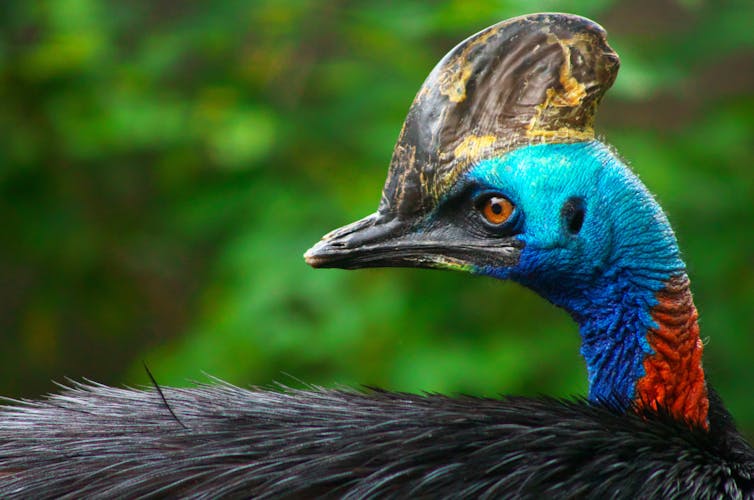
This week’s federal budget reiterated the government’s plan to establish a new scheme for encouraging private investment in conservation, called a biodiversity market (now, rebranded to a “nature repair” market).
A biodiversity market would see landholders granted certificates for restoring or managing local habitats. Landholders could then sell these certificates to, for instance, businesses.
But the effectiveness of such schemes overseas and in Australia can at best be described as mixed. Whether biodiversity markets can actually improve the dire trajectory of our native plants and animals depends heavily on two things:
- whether they reward environmental stewardship, which delivers overall benefits for biodiversity or
- whether they rely on the use of “offsets”, and the loss of biodiversity elsewhere, to generate market demand.
Unfortunately, the government is sending mixed messages on this critical issue. Federal Environment Minister Tanya Plibersek has said while the market “is not designed to be an offset scheme”, companies could still buy certificates to compensate for damage they cause to nature.
In submissions to the recent public consultation on the proposed market, we and other experts argued the scheme should explicitly rule out the use of certificates as compliance offsets for biodiversity damage. Here, we give three major reasons why this is important.
What Sort Of Market?
The term “biodiversity market” refers to a range of approaches that can operate quite differently.
For example, “environmental stewardship schemes” reward land managers who benefit native ecosystems, such as by planting trees and restoring rivers.
“Biodiversity offset schemes” similarly offer financial incentives to land managers, but with a critical difference: on-ground work to benefit nature is used to offset, or compensate for, biodiversity losses elsewhere.
This means offsets don’t usually result in overall improvements to nature, but rather maintain existing declines.
The government hopes voluntary private sector demand will drive this biodiversity market. This is because the government says it cannot afford the A$1-2 billion a year needed to adequately protect Australia’s natural environments and reverse biodiversity decline.
This sounds like a lot, but let’s put $1 billion into perspective.
It’s about one-tenth of the public money spent every year subsiding fossil fuel extraction in this country. It’s about a fifth of the cost of cancelling the submarine contract with France.
And it’s about a 25th of the annual cost of the stage three tax cuts promised in this week’s federal budget.
It is completely unknown, however, whether businesses will want to voluntarily purchase enough biodiversity certificates purely for corporate social responsibility to make the market work.
On the other hand, allowing businesses to use the certificates for legally-required offsets now – or sometime in the future – will certainly generate more immediate market demand. But this would open up the market to a host of problems, and ultimately undermine its very purpose: to improve biodiversity.
Three Reasons To Rule Out Offsets
First, almost all biodiversity offsets in Australia are legally required as conditions of approving new developments, under environmental policies and laws. These policies have strict requirements – and for good reason.
For example, offsets must be “like for like”. In other words, the compensation must be for the same type of biodiversity as the loss.
Such like-for-like requirements limit the number of possible trades in a market, but are crucial to protect Australia’s most threatened species. Otherwise, for instance, allowing replanted koala habitat to count as compensation for the loss of cassowary habitat simply means cassowaries are more likely to become extinct.
The problem is that biodiversity certificates will certify activities (such as tree planting or fencing), rather than specific outcomes (such as increased population size) for particular species or ecosystems.
So it’s not clear how these certificates could be used to compensate for biodiversity losses in line with the national environmental law.
Second, the new biodiversity market is sold as a good news story: willing land managers creating benefits to nature that the private sector wants to support, to help turn around Australia’s atrocious environmental record.
But in practice, offsets have never been a good news story, with scheme failure, misapplication and abuse regularly making headlines. Including offsets in the mix might scare off buyers and sellers.
Third, offsets are legal requirements, so a market that encourages a land manager to supply them achieves no additional benefit for the environment through that trade. It may become cheaper for businesses to acquit their current or future compliance obligations – but it would be a zero sum game for biodiversity.
A Better Way Forward
The proposed biodiversity market is a central response to Australia’s damning State of the Environment report earlier this year.
But previous government attempts to attract private investment to encourage biodiversity have fallen flat, so it would be wise to learn from these experiences.
A better way to stimulate market demand is for the federal government to make an initial public investment in protecting biodiversity to boost private sector confidence. The Queensland government did this in 2020, when it announced a $500 million Land Restoration Fund.
Another source of risk is that the government proposes the Clean Energy Regulator would be responsible for the biodiversity market, as well as for Australia’s carbon credit scheme. It seems wise to await the findings of the current independent review into Australia’s carbon scheme before loading complex new responsibilities onto the carbon market regulator.
We argue that instead, the biodiversity market should be administered by a specialised regulator – such as the proposed new Environmental Protection Agency.
This market is not a silver bullet. It is also no substitute for adequate public investment or law reforms needed to stop nature declining in the first place.
But if it’s carefully designed, with an initial investment from the federal government as a kick-start, a biodiversity market for genuine additional benefits to nature could prove its worth. ![]()
Megan C Evans, Senior Lecturer and ARC DECRA Fellow, UNSW Sydney and Martine Maron, Professor of Environmental Management, The University of Queensland
This article is republished from The Conversation under a Creative Commons license. Read the original article.
What makes a great footpath? The answer is key to our happiness and wellbeing as we age
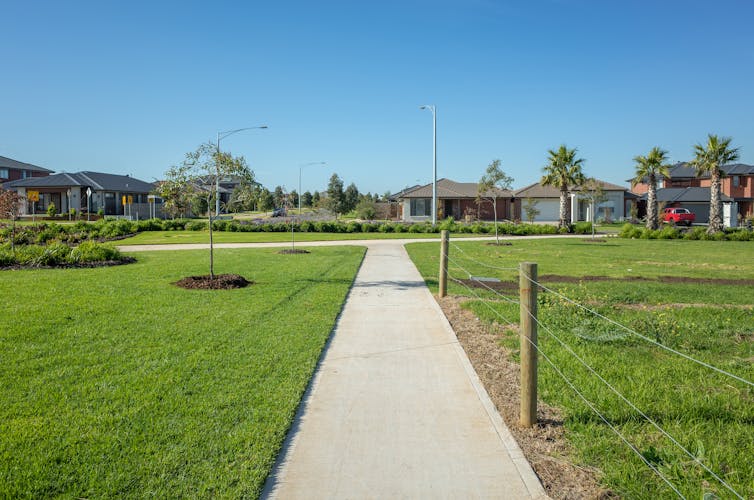
As people age, they often become less confident about walking. Fear of falling can limit the activity of older people, leading them to become isolated.
So what, exactly, makes for a great footpath to walk on?
My colleagues and I explored this question in a recent paper. We used an evidence-based tool to measure the walkability of urban roads – assessing not just the footpath itself, but the features around it.
The results can help urban designers make our cities more walkable, especially for older people.
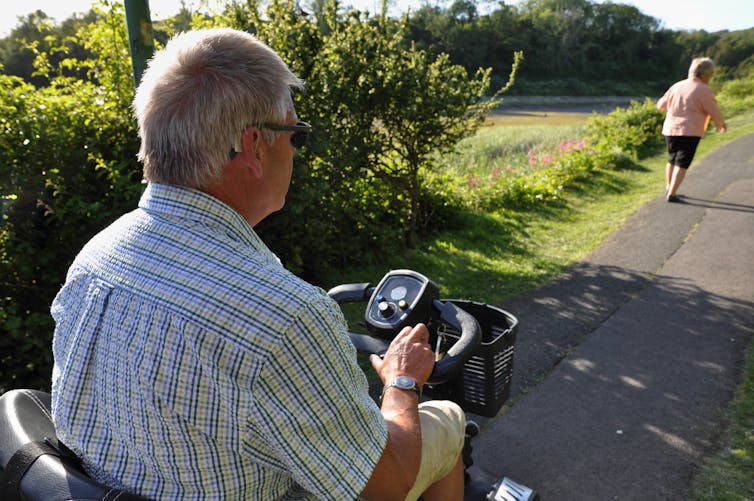
What Makes A Footpath ‘Walkable’?
Only about 42% of people in Sydney and Melbourne live in neighbourhoods with above-average walkability. This compares poorly with people in Lisbon (99.2%), São Paulo (97%) and Hong Kong (96%).
Generally, features that determine whether a footpath is walkable fall into one of two categories.
Neighbourhood-level features refer to a neighbourhood’s general environment, such as:
how well connected streets are to each other. Do they offer a variety of available routes for daily trips?
how densely dwellings are built and how amenities are distributed. Are there parks, train stations, cafes or shops within walking distance?
Footpath-level features refer to the safety, comfort and attractiveness of a footpath, such as:
- obstacles such as tree roots and short poles
- the width of the path
- convenience of crossing facilities
- green belts (such as grass and shrubs) and fences that separate pedestrians from traffic lanes
- areas of shade
- street furniture
- bicycles travelling along the path
- vehicles parked on the path
- noise from cars and other sources
- diversity of streetscapes such as building facades, trees and grasslands.
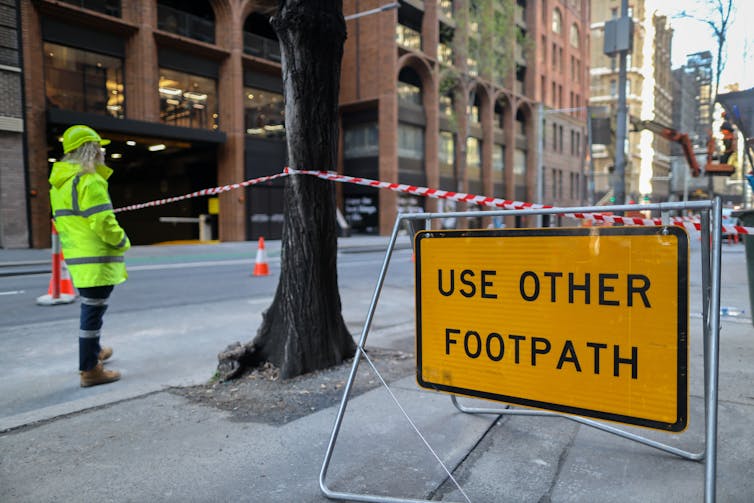
Previous studies on walkability have mixed these two levels of features. But our research separated them, to help urban designers identify which features are most important and which should be improved.
We focused on neighbourhood walkability for senior citizens. By 2050, one in six people in the world will be aged over age 65 – almost double the number in 2015. Australian census data paints a similar picture.
Research shows older adults who perceive their neighbourhood as walkable are happier and more satisfied with life, and less lonely.
Walkable cities help senior citizens – especially those with physical restrictions – be more physically active, and promotes stronger and more regular social connections.
So it’s particularly important to identify how to make our streets more appealing for this age group.
What We Found
Our research focused on the city of Shenzhen in China. Over the past 40 years, Shenzhen has grown into a megacity, and urban planners have historically prioritised the needs of motorised traffic over pedestrians and cyclists.
Among the methods involved in our study, we asked 256 senior citizens to rate footpath features to help us understand how much each one affects their walking.
Respondents told us bikes on footpaths and vehicles parked on footpaths were the biggest factors in reducing walkability. They reported that cars parked on footpaths made the space too crowded and increased the risk of being injured by bikes travelling on the footpath.
Convenient crossing facilities were rated as the second most important feature of footpath walkability. This includes formal crossings – such as zebra crossings and underpasses – as well as informal crossings such as quiet streets.
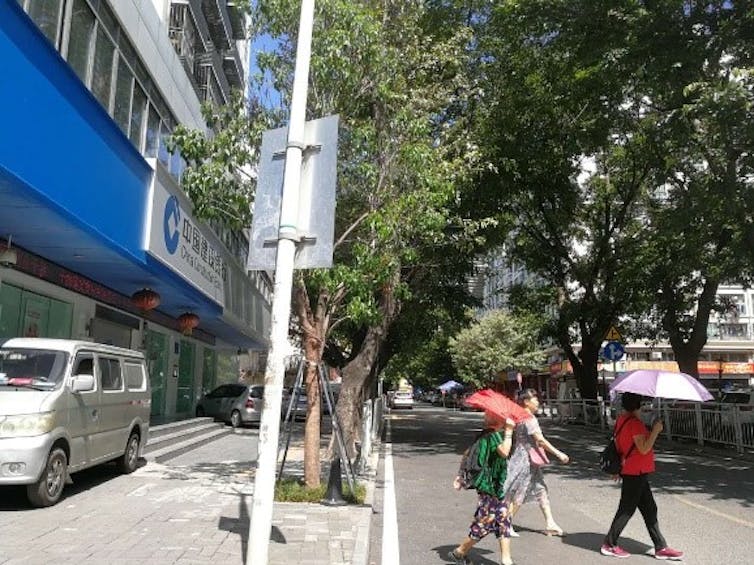
We employed two auditors to quantify how well each feature appears in 11 sample footpaths. The results showed that the way researchers quantify the quality of a footpath can differ to the views of senior citizens.
For example, we measured the quality of a green belt based on the ratio of the length of the belt to the length of the footpath. But for the pedestrians we spoke to, no matter how wide a green belt is, it’s effective as long as it separates them from traffic lanes.
We Need Walkable Neighbourhoods, Too
Our research shows what makes a good footpath, but neighbourhood walkability is also important. If people don’t have destinations to walk to, or streets are not well connected, then they will be deterred from walking even if the footpath is good quality.
And we must remember, people experience footpaths differently. An able younger adult may consider a footpath walkable when a senior citizen or a younger child struggles to navigate it.
Every citizen has an equal right to use and enjoy public space – and footpath design should reflect this.![]()
Fatemeh Aminpour, Associate Lecturer, School of Built Environment, UNSW Sydney
This article is republished from The Conversation under a Creative Commons license. Read the original article.
Australia is poised to be a world leader in offshore wind, but any potential risks to marine life remain poorly regulated
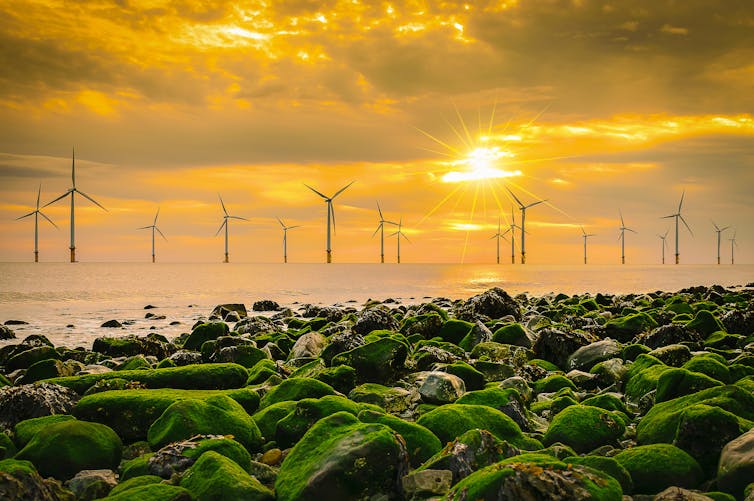
The strong winds blowing over Australia’s rugged coastlines will soon power many of our homes, as offshore wind farms are poised to begin construction. But our new research highlights the need to ensure any potential risks to marine life is properly mitigated.
The federal government has recently made a string of announcements as part of its A$20 billion Rewiring the Nation Plan, ahead of last night’s federal budget. This includes $1.5 billion to fast-track the development of offshore wind farms and renewable energy zones in Victoria, as well as funding for the Marinus link (an electricity cable connecting Tasmania and Victoria), and pumped hydro developments.
By embracing what the energy world calls the “big three” – offshore wind, solar power and onshore wind power – Australia’s renewable energy exports alone could be worth $333 billion each year. That’s almost triple what we currently get from fossil fuels.
Our research calls for Australia to put marine spatial planning processes into offshore wind regulation. This considers how infrastructure and ecosystems can co-locate, by mapping out the best sites for generating the most electricity with the least environmental impact.
With effective regulation, Australia’s offshore wind industry can be a leader in ecologically sustainable development.
Why Is Offshore Wind Important?
Over the past decade, the costs to build offshore wind infrastructure have decreased by 50% worldwide. It is poised to become a key ingredient in Australia’s energy mix, as the Global Wind Energy Council estimates a massive 4,963 gigawatts of offshore wind potential in Australia.
In fact, if all of Australia’s proposed offshore wind projects were built, their combined energy capacity would be greater than all Australia’s coal-fired power stations.
Victoria is leading the way with a target of reaching 2 gigawatts of offshore wind by 2032, and 9 gigawatts by 2040. This means some 20% of Victoria’s energy mix will come from clean, affordable and reliable offshore wind within the next ten years.
Despite our rich wind resources, there is currently no large-scale offshore wind project operating in Australia, due to a lack of legal framework that commenced operation in 2022. Australia also does not currently hold a federal offshore wind target.
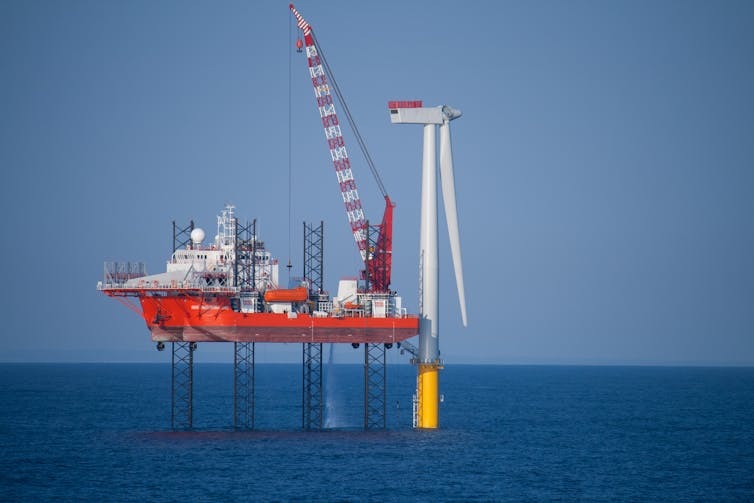
Australia’s Lack Of Regulation
Australia has lack of clear offshore renewable energy planning goals. This has led the Global Wind Energy Council to call for “a clear, transparent, and streamlined leasing and permitting process” in Australia.
The environmental protections currently in place are generic and need greater refinement on the needs of offshore wind.
Before an Australian offshore wind project can start and be granted a commercial licence, the developer must make several important assessments and proposals, including a management plan, to the Offshore Infrastructure Registrar.
This management plan must adhere to Australia’s national environment law, which is designed to promote ecologically sustainable development.
Yet, Australia’s environment law – called the Environment Protection and Biodiversity Conservation (EPBC) Act – has been widely criticised for failing to achieve this aim, particularly following a major independent review in 2021.
How Offshore Wind Farms Can Impact Marine Life
Marine spatial planning can provide clear ecological, social and environmental conservation objectives, while mapping important ecological zones to protect.
Research is still emerging on the extent offshore wind farms may impact marine ecosystems. A European Environment Agency report this year points to a few potential impacts, although these are documented in Europe rather than Australia.
This includes underwater noise during construction, which can displace some species, cause auditory injury to nearby mammals and fish, and interfere with the echolocation of animals such as porpoises.
Research has also shown that during operation, some seabird species became either displaced or attracted to the turbines (though collision rates are low).
On the other hand, depending on its design, offshore wind turbines can provide habitat for some marine species, such as with artificial reefs on their foundations.
These pressures can be managed by effective marine spatial planning. Australia holds marine spatial planning processes for other areas, such as the Great Barrier Reef Marine Park and parts of Victoria.
But we are yet to create any requirements for them in the legal framework for offshore wind at the federal level.
Countries Doing It Better Than Us
Several countries have enacted marine spatial planning policies and regulations for their offshore wind sectors.
The European Union has led the way, as 22 coastal member states have adopted marine spatial planning processes. This strong policy framework has enabled the EU to reach 28.4 gigawatts of offshore wind capacity while ensuring environmental protections are in place.
The Netherlands have an ambitious offshore wind target of 70 gigawatts by 2050. This is double what the entire EU has already installed.
The Netherlands is using marine spatial planning to sustainably meet this target. It is supported by the Dutch Ecological Offshore Wind Energy Programme, which is generating baseline scientific knowledge about how to protect sensitive marine environments in assessments determining new project sites.
One Piece Of The Puzzle
Marine spatial planning is crucial for integrating offshore wind with other ways we use the ocean, such as for fishing and preserving traditional Sea Country. At the same time, it should preserve ecosystems and promote energy justice, where all members of society are granted access to clean energy. Marine spatial planning can strike this balance.
Formulating marine spatial planning objectives in consultation with the offshore wind industry, communities, and other stakeholders is crucial to ensure its success, and building an equitable ocean economy.
Much more must be done to ensure we continue a successful transition away from fossil fuels and avoid the worst impacts of climate change. Offshore wind is just one, exciting piece of the puzzle. ![]()
Madeline Taylor, Senior Lecturer, Macquarie University
This article is republished from The Conversation under a Creative Commons license. Read the original article.
Excessive water extractions, not climate change, are most to blame for the Darling River drying
Quentin Grafton, Crawford School of Public Policy, Australian National University; Gilad Bino, UNSW Sydney; John Williams; Long Chu, Australian National University, and Richard Kingsford, UNSW SydneyYou may recall when, at the height of summer in 2019, more than a million fish floated to the surface of the Darling River’s Menindee Lakes. Iconic Murray cod and silver perch were among the dead.
A couple of months later, an expert investigation concluded excessive upstream water extractions, compounded by the ongoing drought, were to blame.
In another investigation in 2020, the Murray-Darling Basin Inspector-General reported he was informed that water theft, lack of compliance, unsustainable water extraction rules, and floodplain harvesting were driving the northern basin’s declines in stream flow – the measured volume of water flowing in a river or stream over a given period of time.
And yet, there appears to be a widely held view that we can place most of the blame of drying rivers on climate change. So what’s the truth? And why does it matter?
Our new research investigated the effects of climate change and water resource development on the Darling River over the past 40 years. We found much of the recent decline of river (stream) flow has not been because of climate change, but almost certainly a result of increased water extractions.
This is important, because naming climate change as the primary culprit for drying rivers may let water managers, ministers and irrigation lobbyists off the hook for failing to effectively control water consumption.
Our point isn’t that climate change is not happening – it’s here, it’s now and it’s global in its devastation. But, our research shows climate change shouldn’t be used as a “get out of jail free” card to excuse bad decision-making and poor planning decisions.
What We Found
The Darling river is also known as the Baaka by the Barkindji, whose Country includes Menindee Lakes.
The Baaka-Darling River has nine major headwater dams and tributaries with a total storage capacity in excess of 4,500 billion litres, about equal to nine Sydney harbours. For decades, it has had high rates of water extraction, provided by 15 main channel weirs and more than 1,000 small weirs along its 1,000 kilometre or so length.
Our analyses looked back at 40 years of meteorological trends and water extractions data, then separated the effects of each on declining river flows.
We found between 1981 and 2020, the northern Murray-Darling Basin has become drier (11 millilitres less rainfall per decade, on average) and hotter (by 0.26℃ per decade, on average) – a trend consistent with climate change projections.
These trends reduced stream flows on the nearby, pristine Paroo River by 28%. The Paroo River has had virtually no water extractions in the last 40 years, which means that lower rainfall and higher temperatures completely explain its decline in river flows.
But this is not true for the Baaka-Darling River. We found stream flows declined by 53% at the Baaka-Darling River. Less than half of this decline could be explained by meteorological trends. This means the rest – more than half of the decline in stream flows – was almost certainly due to other factors: namely, increased water extractions.
Further peer-reviewed evidence in support of our conclusion can be drawn from the large, unmetered, and possibly increasing, water extractions associated with floodplain harvesting. This harvesting may be in the order of hundreds of billions of litres per year in the northern Basin, some of which may be illegal.
This is coupled with much smaller increases in metered water extractions along the Baaka-Darling River and its tributaries over the period 2014-15 to 2017-18.
What This Means For Wildlife
Reduced river flows are profoundly damaging to the ecosystems of the Murray Darling Basin, and its harms accumulate over time. A key pillar of these ecosystems are waterbirds, such as herons, spoonbills, ibis and kingfishers.
Our research investigated the abundance of waterbirds on the Paroo and Baaka-Darling rivers. We found they were more resilient on the Paroo River wetlands than at Menindee Lakes along the Baaka-Darling River.
In 40 years, the average decline in waterbird abundance on the Paroo River Wetlands was 50%, compared to 75% at Menindee Lakes.
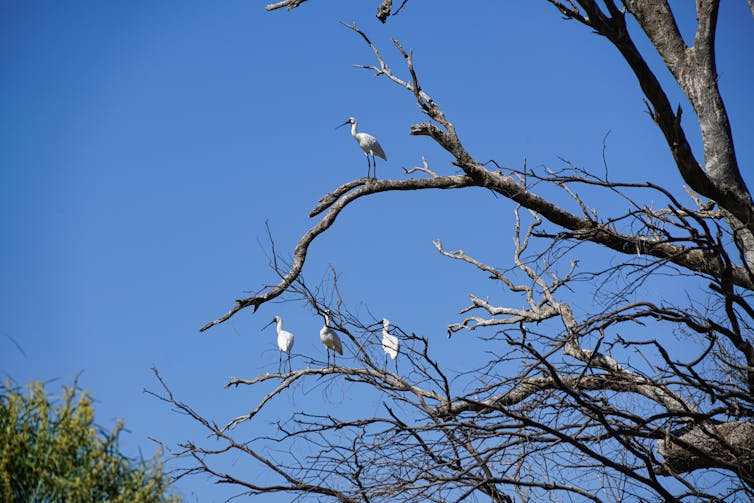
We also simulated what would happen if water were to be reallocated from irrigation to increase the flow in the river, during a drought. Our results suggest the resilience of waterbird numbers at Menindee Lakes and nearby could be improved.
Increases in river flows during drought (relative to business as usual) also supports people, as it improves the availability and quality of drinking water in downstream communities, such Wilcannia and Menindee. And it’s crucial for the habitats of fish, wetland plants, trees, mammals, frogs, and reptiles.
Based on our calculations, the annual cost would be around 1.3% of estimated total irrigation profits if 100 gigalitres per year of water were reallocated to increased stream flows. It would be 4% of estimated total irrigation profits if 300 gigalitres per year of water were reallocated to increased stream flows.
Understanding River Flows
Understanding why our rivers are getting drier helps us to respond to both the problem of climate changes and to water mismanagement. Fundamental to water management is knowing how much water is in the entire system, where it is, where it goes, and what value it brings. The measurement technologies to answer these questions are available.
If we are to meet the key objects of the Water Act and the Basin Plan, we need to reduce water extractions and to reallocate water on this iconic river to ensure minimum river flows for downstream communities and for critically important environments.
This task is urgent if Australia is to achieve the goal of the Murray-Darling Basin Plan a decade ago: to create and maintain healthy sustainable working rivers.
The last thing Australia needs in a climate change crisis is for water ministers and their advisers to bury their heads in the sand, about what can, and must, be done to ensure a much more sustainable water outcome for all.![]()
Quentin Grafton, Australian Laureate Professor, Crawford School of Public Policy, Australian National University; Gilad Bino, Senior lecturer, UNSW Sydney; John Williams, Adjunct Professor; Long Chu, Associate Professor, Crawford School of Public Policy, Australian National University, and Richard Kingsford, Professor, School of Biological, Earth and Environmental Sciences, UNSW Sydney
This article is republished from The Conversation under a Creative Commons license. Read the original article.
You might think solar panels have been perfected – but we can still make them even better and cheaper
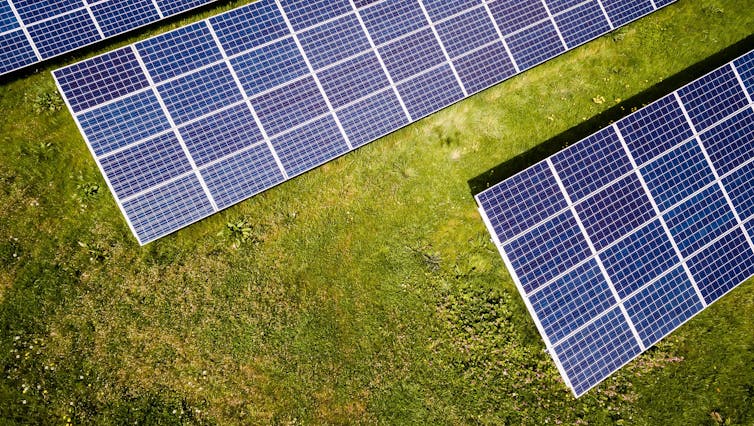
The cost of turning sunlight into electricity has fallen more than 90% over the last decade. Solar is now the cheapest form of newly built energy generation.
Job done? Not quite. Right now, solar works well at cost-competitive prices and can help us cut emissions significantly. But with less than 5% of the world’s electricity delivered by solar, we are just at the start.
The solar panels of 2022 are like the chunky mobile phones of the 1990s. Much more is possible with the same underlying technology.
Australia is likely to play a key role in global progress. For decades, we’ve been at the forefront of solar technology development and deployment. We’ve held the performance record for silicon solar cells for 30 of the last 40 years. We now have more solar deployed per capita than any other OECD country, meeting close to 15% of our electricity needs. More than 80% of the world’s new solar panels rely on the PERC cell, a technology developed in Australia.
So what’s next for solar? Hundreds of researchers across Australia are focused on two goals: cutting costs even further and generating the most electricity possible out of incoming sunlight.
Why Does Solar Need To Improve?
Solar has the potential to transform our industries, transport and the way we live – if we push the technology as far as it can go.
Ultra-cheap electricity unlocks huge possibilities, from turning water into green hydrogen to serve as energy storage or to use in industrial processes, through to electrifying transport, energy systems and everything else we use fossil fuels for.
Last year, Australia’s renewable energy agency laid out its vision for ultra low-cost solar. The goal is ambitious but achievable.
By 2030, the agency wants commercial solar cells to hit 30% efficiency, up from 22% today. It wants large scale full system costs (panels, inverters and transmission) to fall by 50% to 30 cents per watt.
It will take intensive research. More than 250 Australian researchers are working towards these goals at the Australian Centre for Advanced Photovoltaics, a collaboration between six universities and the CSIRO.
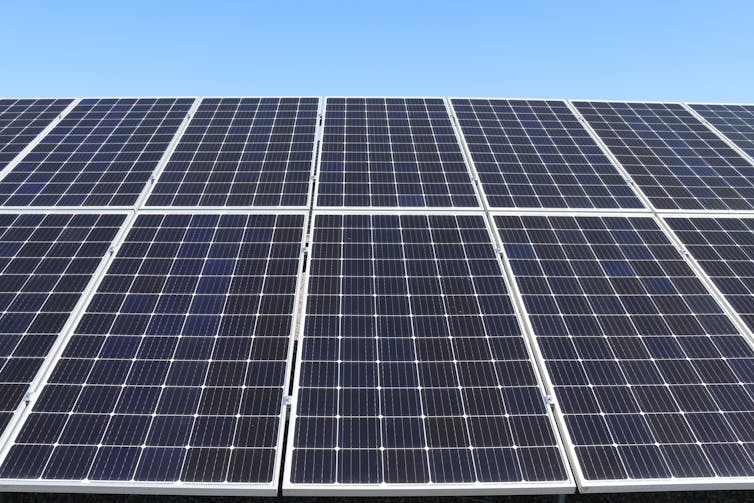
Can Silicon Really Keep On Giving?
Solar cells convert sunlight into electricity with no moving parts. When sunlight hits silicon – the material commonly used in solar cells – its energy frees up an electron able to move within the material, just as electrons move in wires or batteries.
The solar panels on your roof probably began as desert sand, melted down to silica, refined into silicon and refined again to form 99.999% pure polysilicon. For decades, this versatile material has been at the heart of solar’s success. Importantly, it’s scaleable – from the size of a pin head to arrays covering square kilometres.
But to get the absolute maximum out of sunlight falling on these panels, we need to go beyond silicon. We can’t reach efficiencies of 30% with silicon alone.
Meet the tandem cell – a solar sandwich. Because silicon can only absorb a maximum of 34% of visible light, researchers are focused on adding layers of other materials to capture different wavelengths of light.
Perovskites are one option. This family of materials can be printed or coated from a liquid source, making them cheap to process. When we stack this material atop silicon, we see a major jump in the solar cell efficiency.
While promising, there are still problems to iron out – specifically, ensuring perovskites can last the 20 plus years we’ve come to expect from silicon panels.
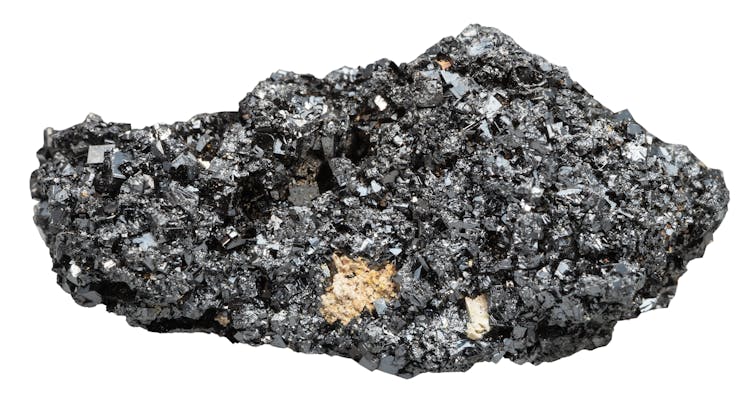
Researchers are also looking at other materials, such as polymers and chalcogenides, a group of common minerals including sulfides which have shown promise in thin, flexible solar cells.
Any new material must not only work well at converting sunlight to electrons, but be abundant in the earth’s crust, available at low cost and stable enough to ensure long lifetimes. Chalcogenides, for example, are made of common elements such as copper, tin, zinc and sulphur.
If we can get to 30% efficiency, it would pay enormous dividends. The costs of establishing a large solar farm would be slashed. With more efficient solar cells, you need fewer panels and less land for the same power output.
It would also make fossil fuels even less competitive. Coal-fired power and car engines are around 33–35% efficient, meaning most of the energy embodied in fossil fuels is actually lost as heat and noise. You also have to pay to continuously supply the fuel. Solar and wind come at no cost once you’ve established the plant.
How Can We Cut Costs Further?
At present, the cost of power from new solar in Australia is A$50 per megawatt hour. (Black coal is around $100/Mwh.) That’s according to the CSIRO’s 2021–22 assessment of energy costs.
By 2030, our renewable energy agency wants to slash that to just $15/Mwh, or 1.5 cents per kilowatt hour. Solar energy at this cost – coupled with storage – would deliver low-cost, reliable power 24/7.
Costs will come down as we increase efficiency of the solar cells, as the modules last longer, and as we come up with more cost effective ways to manufacture and deploy the solar technologies.
Ultra-low-cost solar electricity will be transformative, allowing Australia to build new capability in current and emerging industries, such as turning hydrogen and ammonia into fuel sources, the green processing of steel and aluminium and even the processing of silicon itself, so we can make more solar panels.
Even with today’s technology, demand for solar is expected to double and double again in the next ten years. That means there will also be a need to figure out how the solar industry can grow sustainably – and how to recycle solar panels as early solar panels reach the end of their useful lifetimes and need renewing.
Australian innovation kickstarted the solar boom. As climate change intensifies – and the need for clean, locally produced energy grows – the sun-drenched country may once again be able to help speed up the world’s transition away from fossil fuels. ![]()
Renate Egan, Professor, UNSW Lead, Australian Centre of Advanced Photovoltaics, UNSW Sydney
This article is republished from The Conversation under a Creative Commons license. Read the original article.
No, signing the global methane pledge won’t end the backyard barbecue – it’ll strengthen Aussie industries

Australia has just joined 122 other nations in signing a pledge to reduce methane emissions by at least 30% from 2020 levels by 2030. It was a long time coming: Australia, under the Morrison government, refused to commit when the pledge was first announced at the COP26 climate summit last year.
Methane has caused almost half the net rise in global average temperature since the pre-industrial era. The atmospheric concentrations of methane are now almost triple pre-industrial levels, and rising swiftly. Cutting it back would significantly help limit climate change.
Nationals leader David Littleproud claims signing the pledge will threaten the backyard barbecue, as most of Australia’s methane emissions come from the agriculture industry (in the form of livestock emissions) followed by coal and gas mining.
Meeting the methane pledge in full will indeed require substantial investment to change these key emitting industries. Doing so will help position those industries to address climate change, increase their sustainability and boost profits.
How Methane Affects Global Warming
As a potent greenhouse gas, methane acts to prevent some radiative heat from the Earth escaping out into space. Every emission of methane makes the planet warmer, regardless of whether it arises from fossil fuel or biological sources.
A kilogram of methane has 27 to 29.8 times the warming effect over a 100-year period than a kilogram of CO₂. But unlike carbon dioxide, which can stay in the atmosphere for many decades, methane is relatively quickly removed from the atmosphere by chemical reactions, having a lifespan of about 12 years.
The recent rapid increases in atmospheric methane concentrations of over 100 parts per billion in the last decade appear to be caused by a worrying positive feedback.
Rising global temperatures increase both the methane emissions from warming wetlands and more frequent and larger fires. At the same time, they lengthen the life of methane in the atmosphere, further increasing temperatures.
The 30% reduction in methane emissions takes us about halfway to the reductions needed to meet the Paris Agreement temperature goals of limiting global warming to between 1.5℃ and 2℃ above pre-industrial levels this century.
Where Australia’s Methane Emissions Come From
The agriculture sector is Australia’s biggest methane source, emitting about 60 million tonnes of CO₂-equivalent per year. This is followed by fugitive emissions (mostly leakage from coal and gas mining), which is responsible for about 34 million tonnes of CO₂-equivalent.
Coming in equal third are landuse-change and forestry, and waste each with about 12 million tonnes. Energy production, transport and industrial processes each emit small amounts.
Methane from agriculture arises mostly through the fermentation of feed during digestion of ruminant animals (such as cattle, sheep and goats) and from animal manure. Small amounts come from rice production and crop waste burning.
As a result, emissions tend to go down with droughts (when there are fewer animals, each eating less) and up in the good years.
Thankfully, there has been a long-term decline in agricultural methane emissions of about 15% since 2000, largely reflecting a decline in sheep numbers and improved animal and feed management.
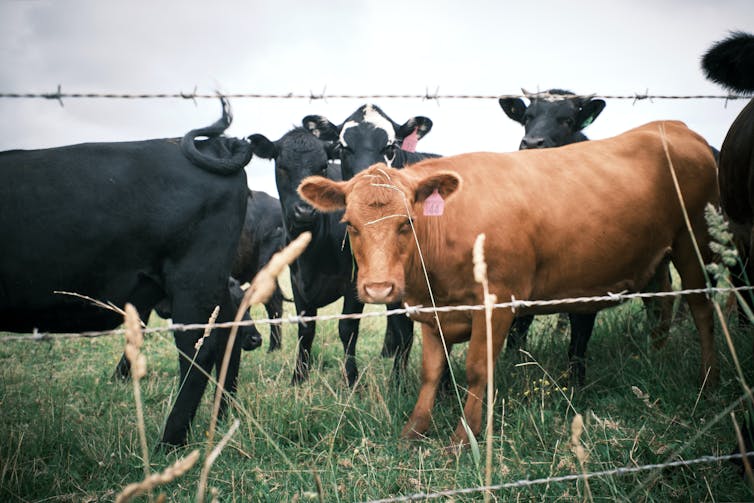
Likewise, emissions from landuse-changes have also reduced, reflecting steep declines in land-clearing since about 2007. So have emissions from the waste sector, due to improvements in waste collection and management, and methane capture. Both sectors have shown about a 30% reduction over the past two decades.
The amount of fugitive emissions, however, are subject to some dispute. The International Energy Agency earlier this year revised the national numbers upwards for fugitive emissions, based on satellite analysis and on-ground measurement. It effectively doubled the estimates of annual emissions from this source.
The revised numbers put fugitive emissions on par, or ahead of, agriculture. Of the mines assessed, open pit mines show the largest emissions.
Australia needs more direct measurements and effective integration of satellite and other analyses of fugitive emissions from such mines. This will improve our emissions assessments, better target any emission-reduction activities and evaluate their effectiveness.
How The Pledge Could Impact These Industries
The methane pledge is voluntary and includes a global reduction target, so there won’t likely be direct sanctions applying to specific national industries if they don’t achieve this target.
However, reducing methane emissions may become critical if some nations include agriculture in any carbon border adjustment mechanisms, which place taxes on high-emitting imports. From this perspective, near-term action may be strategically sensible.
Additionally, emissions reduction is aligned with good practice in most major emitting industries.
In livestock, for example, methane emissions constitute a loss of about 6% of the feed energy consumed and sometimes more. Reducing these losses is expected to increase animal performance. There are several existing ways to bring such emissions down, as well as emerging options.
These include improved feed quality, dietary oils and fats, feed supplements and, potentially, vaccines. But existing options alone will be hard-pressed to deliver overall 30% methane emission-reductions, while maintaining historical levels of productivity.
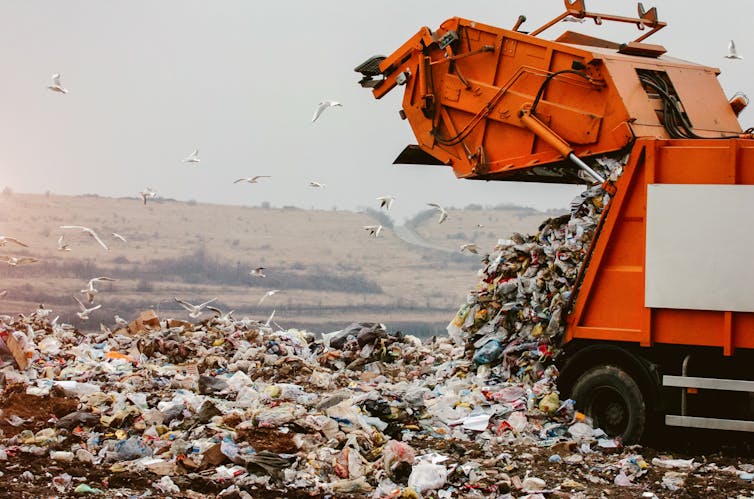
In landfill, methane emissions can be profitably captured and used to either generate electricity or potentially be cleaned and fed into the natural gas supply system.
Programs that separate food scraps from general waste and then use the scraps in biogas generators could significantly increase the efficiency of capture, producing valuable fertiliser in the process.
The coal and gas industries often capture and burn fugitive methane emissions (flaring) to try to convert them into the less-harmful carbon dioxide. However, this practice is often ineffective, and causes air pollution and problematic health outcomes.
There are alternative options, such as using fugitive emissions to generate electricity, but these need broader adoption. Additionally, there is a further incentive to reduce leaking methane (natural gas) from distribution networks, as it results in both financial losses and potential danger in some situations.
Sectors such as agriculture and mining are clearly vulnerable to climate change. By undertaking effective and rapid action to reduce methane emissions, they will be exposed to lower risks and will have reduced climate adaptation costs.
What This Means Ahead Of COP27
Signing the methane pledge bodes well for Australia at the upcoming COP27 climate change summit in Egypt next month.
It aligns Australia with most of our trading partners and will enable discussions to move on to other pressing international climate change issues.
It reduces somewhat the spectre of challenging border-adjustment mechanisms. And it will likely encourage building the international research and development coalitions to deliver the next tranche of methane emission reductions: 60% reductions by 2050.
Lastly, it’s likely to help Australians realise that, in most cases, reducing methane emissions is just good business, now and for the future.![]()
Mark Howden, Director, ANU Institute for Climate, Energy and Disaster Solutions, Australian National University
This article is republished from The Conversation under a Creative Commons license. Read the original article.
A green trifecta: how a concrete alternative can cut emissions, resource use and waste

Building materials and construction generate about 20% of global greenhouse gas emissions. Much of these emissions are due to the environmentally unfriendly process of producing ordinary Portland cement, which is widely used in construction materials such as concrete and mortar.
Portland cement production generates about 2.6 billion tonnes of carbon dioxide (CO₂) a year – more than 7% of annual global emissions. Cement emissions have doubled in the past 20 years. And over the next 40 years, construction is expected to double the building floor area worldwide.
Every tonne of cement produced also uses about 1.6 tonnes of raw materials, including fuels and other resources. Concrete production also uses large amounts of aggregate such as sand and gravel. This requires energy-intensive quarrying operations that deplete non-renewable natural resources – the world is running out of building sand.
The problems of emissions and resource depletion mean suitable substitutes for Portland cement and natural aggregate are required. Our research shows it is possible to develop more sustainable construction materials, reinforced using natural fibres. Industrial byproducts and waste materials can be used to replace cement binder and aggregate, reducing emissions, resource depletion and waste.
Recycling Cuts Waste
Recycling waste materials in construction can help reduce the environmental impacts of concrete and mortar production and the disposal of waste materials in landfills.
These materials include industrial byproducts (fly ash and blast furnace slag), waste glass and lead slag. Fly ash comes from coal-fired power stations. Blast furnace slag is a byproduct of iron and steel production.
A new type of eco-friendly material, geopolymer, has received significant attention as a replacement for conventional concrete. A geopolymer is a hard and durable human-made substance. Geopolymer production produces up to 90% less CO₂ emissions than conventional concrete.
The properties of waste glass and lead slag make them suitable for use in making geopolymer.
Natural Fibre Reinforcement Is Sustainable
Steel or other synthetic fibres have been widely used as reinforcement material to improve the mechanical properties of geopolymer. However, steel fibres are expensive and corrode in harsh environments.
The synthetic alternative, mineral fibres, such as polyvinyl alcohol and polypropylene, are produced using antioxidants and amines. This process makes these fibres a non-eco-friendly material.
Natural fibres obtained from plants are a viable alternative to non-renewable, corrosive and expensive synthetic fibres. Natural fibres are renewable, eco-friendly, non-corrosive, cheap and abundant. These properties make natural fibres a sustainable material.
What Did The Study Find?
Any substitutes for the concrete and mortar used today should at least match their engineering properties, such as strength and durability. Our study evaluated the production and performance of geopolymers made with waste glass and lead slag instead of natural sand. We used a combination of fly ash and granulated blast furnace slag as binders instead of Portland cement.
These geopolymers were reinforced with different types of natural fibres such as coir, ramie, sisal, hemp, jute and bamboo fibres.

Our experimental results showed geopolymers containing waste glass sand have higher strength and absorb less water than those containing lead slag and natural sand. Water absorption reduces the durability of concrete.
Geopolymers prepared with lead slag show a lower drying shrinkage than geopolymers made with waste glass sand and lead slag. Drying shrinkage also reduces durability, as it leads to cracks in the concrete before it bears any kind of load.
We found that geopolymers with 1% ramie, hemp and bamboo fibre have greater compressive and tensile strengths than unreinforced geopolymers. This means the reinforced geopolymer resists breaking when squeezed (under compression loading) and when pulled apart (under tension loading). The higher strength of natural fibre-reinforced mixes is because of the bridging effect of the fibres inside the geopolymer.
Our study also shows that ramie, hemp and bamboo fibre-reinforced geopolymers shrink less than unreinforced geopolymers.
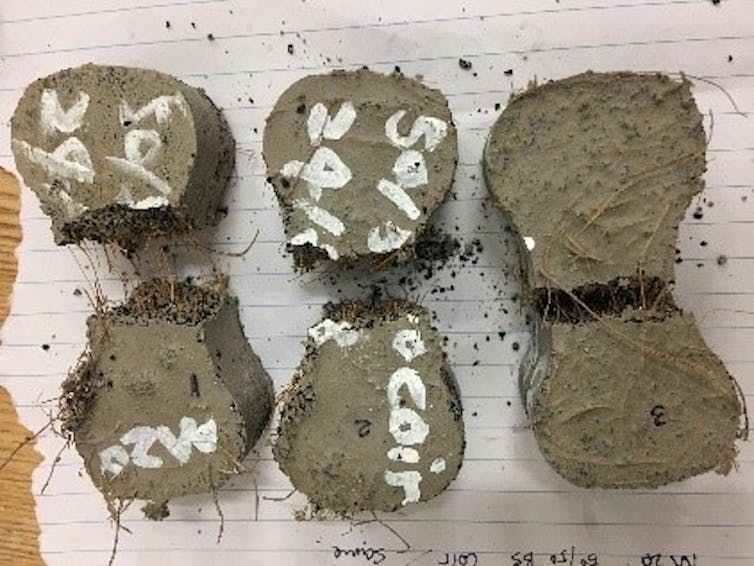
What Next?
The next steps in this research would include study of:
the use of recycled aggregates obtained from construction and demolition waste, which has grown to 27 million tonnes a year in Australia – 44% of all waste
treating the natural fibres to modify their properties before using in the geopolymer
the possibility of using the developed geopolymer in 3D printing for automated construction.
Developing sustainable concrete will provide us with a next-generation construction material that greatly improves the sector’s resource efficiency while reducing its emissions and other environmental impacts.![]()
Aliakbar Gholampour, Senior Lecturer in Civil and Structural Engineering, Flinders University
This article is republished from The Conversation under a Creative Commons license. Read the original article.
Using the ocean to fight climate change raises serious environmental justice and technical questions
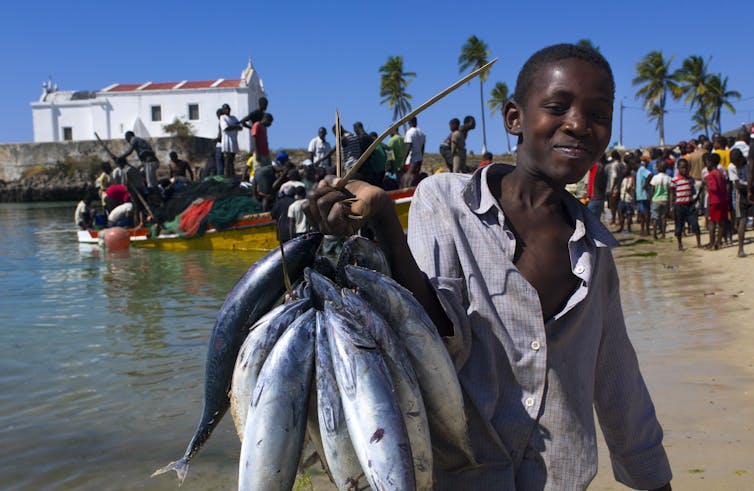
Heat waves, droughts and extreme weather are endangering people and ecosystems somewhere in the world almost every day. These extremes are exacerbated by climate change, driven primarily by increasing emissions of greenhouse gases that build up in the atmosphere and trap heat at the Earth’s surface.
With that in mind, researchers are exploring ways to pull carbon dioxide out of the atmosphere and lock it away – including using the ocean. But while these techniques might work, they raise serious technical, social and ethical questions, many of which have no clear answers yet.
We study climate change policy, sustainability and environmental justice. Before people start experimenting with the health of the ocean, there are several key questions to consider.
Ocean Carbon Dioxide Removal 101
The ocean covers about 70% of the planet, and it naturally takes up carbon dioxide. In fact, about a quarter of human-produced carbon dioxide ends up in the ocean.
Ocean carbon dioxide removal is any action designed to use the ocean to remove even more carbon dioxide from the atmosphere than it already does and store it.
It spans a wide range of techniques – from increasing the amount and vitality of carbon dioxide-absorbing mangrove forests to using ocean fertilization to stimulate the growth of phytoplankton that absorb carbon dioxide to building pipelines that pump liquid carbon dioxide into formations under the seabed, where it can eventually solidify as carbonate rock.
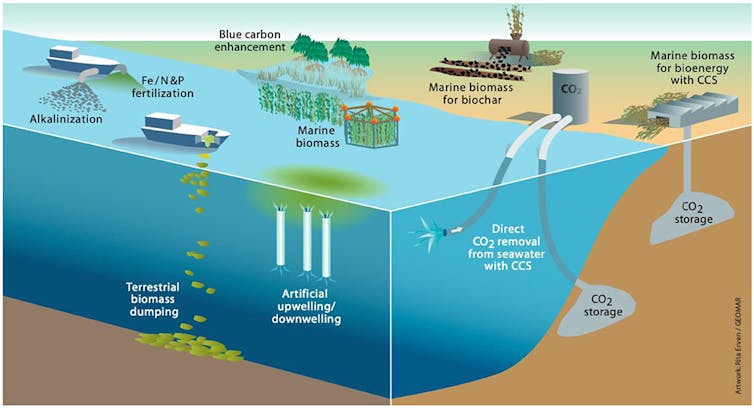
There are other forms of carbon dioxide removal – planting trees, for example. But they require large amounts of land that is needed for other essential uses, such as agriculture.
That’s why interest in using the vast ocean is growing.
Would These Methods Store Enough Carbon?
The first crucial question is whether ocean carbon dioxide removal techniques could significantly reduce atmospheric carbon dioxide and store it long term, beyond what the ocean already does. Greenhouse gas emissions are still increasing globally, which means that ocean carbon dioxide removal would need to keep carbon dioxide out of the atmosphere for a long time, at least until greenhouse gas emissions have fallen.
Initial evidence suggests that some forms of ocean carbon dioxide removal, such as those that rely on short-lived biomass like kelp forests or phytoplankton, may not keep captured carbon stored for more than a few decades. That’s because most plant tissues are quickly recycled by decay or by sea creatures grazing on them.
In contrast, mechanisms that form minerals, like the interaction when carbon dioxide is pumped into basalt formations, or that alter the way seawater retains carbon dioxide, such as increasing its alkalinity, prevent carbon from escaping and are much more likely to keep it out of the atmosphere for hundreds or thousands of years.
Ecological Risks And Benefits
Another key question is what ecological benefits or risks accompany different ocean carbon dioxide removal approaches.
Research shows that some options, such as supporting mangrove forests, may promote biodiversity and benefit nearby human communities.
However, other options could introduce novel risks. For example, growing and then sinking large amounts of kelp or algae could bring in invasive species. Dissolving certain types of rock in the ocean could reduce ocean acidity. This would enhance the ocean’s ability to store carbon dioxide, but these rocks could also contain trace amounts of metals that could harm marine life, and these risks are not well understood.
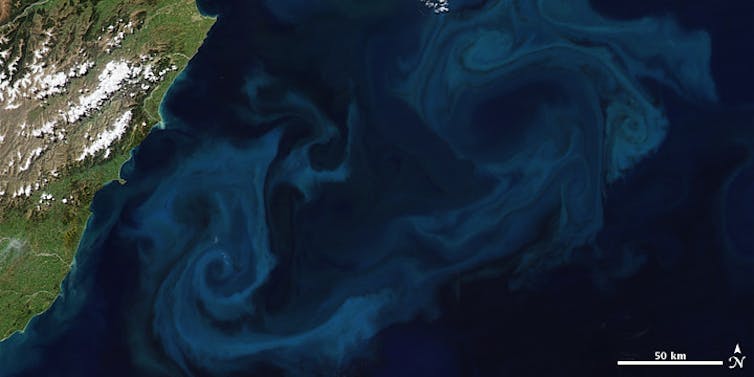
Each process could also release some greenhouse gases, reducing its overall effectiveness.
Interfering With Nature Is A Social Question
The ocean affects everyone on the planet, but not everyone will have the same relationship to it or the same opportunities to have their opinions heard.
Much of the global population lives near the ocean, and some interventions might impinge on places that support jobs and communities. For example, boosting algae growth could affect nearby wild fisheries or interfere with recreation. People and communities are going to evaluate these risks differently depending on how they are personally affected.
In addition, people’s trust in decision-makers often shapes their views of technologies. Some ways of using the ocean to remove carbon, such as those close to the shore, could be governed locally. It’s less clear how decisions about the high seas or deep ocean would be made, since these areas are not under the jurisdiction of any one country or global governing body.
People’s perceptions will likely also be shaped by such factors as whether or not they see ocean carbon dioxide removal as interfering with nature or protecting it. However, views of what is acceptable or not can change. As the impacts of climate change increase, tolerance for some unconventional interventions seems to be growing.
It’s Also An Ethical Question
Ocean carbon dioxide removal also raises a variety of ethical questions that do not have straightforward answers.
For example, it forces people to consider the relationship between humans and nonhumans. Are humans obliged to intervene to reduce the impact on the climate, or ought we avoid ocean interventions? Do people have the right to purposefully intervene in the ocean or not? Are there specific obligations that humans ought to recognize when considering such options?
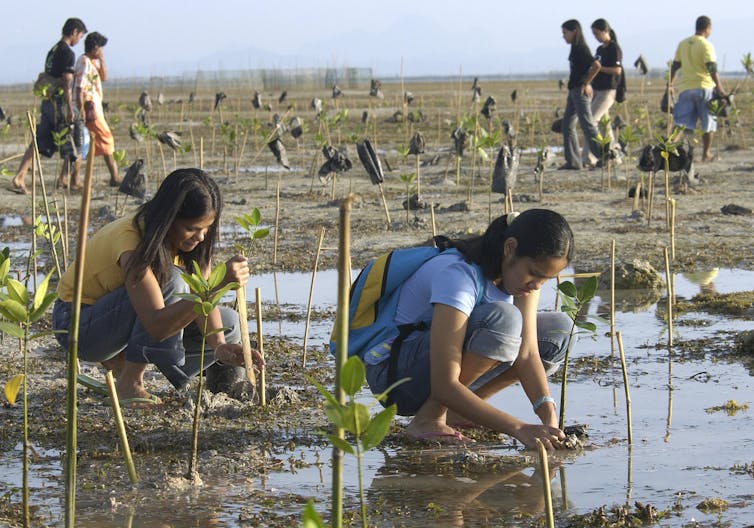
Other ethical questions revolve around who makes decisions about ocean carbon dioxide removal and the consequences. For example, who should be involved in decision-making about the ocean? Could relying on ocean carbon dioxide removal reduce societies’ commitment to reducing emissions through other means, such as by reducing consumption, increasing efficiency and transforming energy systems?
Who Pays?
Finally, ocean carbon dioxide removal could be very expensive.
For example, mining and then adding rocks to reduce the ocean’s acidity has been estimated to cost between US$60 and $200 per ton of carbon dioxide removed. To put that into context, the world produced more than 36 billion metric tons of carbon dioxide from energy alone in 2021.
Even macroalgae cultivation could be in the tens of billions of dollars if done at the scale likely necessary to have an impact.
These methods are more expensive than many actions that reduce emissions right now. For instance, using solar panels to avoid carbon emissions can range from saving money to a cost of $50 per ton of carbon dioxide, while actions like reducing methane emissions are even less expensive. But the harm from continued climate change has been estimated to be in the hundreds of billions annually in the United States alone.
These costs raise more questions. For example, how much debt is fair for future generations to carry, and how should the costs be distributed globally to fix a global problem?
Ocean carbon dioxide removal could become a useful method for keeping global warming in check, but it should not be seen as a silver bullet, especially since there isn’t an effective global system for making decisions about the ocean.
Sarah Cooley, a former research scientist at Woods Hole Oceanographic Institution and director of climate science at the Ocean Conservancy, contributed to this article.![]()
Sonja Klinsky, Associate Professor and Senior Global Futures Scientist, Arizona State University and Terre Satterfield, Professor of Culture, Risk and the Environment, University of British Columbia
This article is republished from The Conversation under a Creative Commons license. Read the original article.
Pittwater Reserves: Histories + Notes + Pictorial Walks
A History Of The Campaign For Preservation Of The Warriewood Escarpment by David Palmer OAM and Angus Gordon OAM
America Bay Track Walk - photos by Joe Mills
An Aquatic June: North Narrabeen - Turimetta - Collaroy photos by Joe Mills
Angophora Reserve Angophora Reserve Flowers Grand Old Tree Of Angophora Reserve Falls Back To The Earth - History page
Annie Wyatt Reserve - A Pictorial
Avalon's Village Green: Avalon Park Becomes Dunbar Park - Some History + Toongari Reserve and Catalpa Reserve
Bairne Walking Track Ku-Ring-Gai Chase NP by Kevin Murray
Bangalley Headland Bangalley Mid Winter
Banksias of Pittwater
Barrenjoey Boathouse In Governor Phillip Park Part Of Our Community For 75 Years: Photos From The Collection Of Russell Walton, Son Of Victor Walton
Barrenjoey Headland: Spring flowers
Barrenjoey Headland after fire
Bayview Baths
Bayview Wetlands
Beeby Park
Bilgola Beach
Botham Beach by Barbara Davies
Bungan Beach Bush Care
Careel Bay Saltmarsh plants
Careel Bay Birds
Careel Bay Clean Up day
Careel Bay Playing Fields History and Current
Careel Creek
Careel Creek - If you rebuild it they will come
Centre trail in Ku-ring-gai Chase National Park
Chiltern Track- Ingleside by Marita Macrae
Clareville Beach
Clareville/Long Beach Reserve + some History
Coastal Stability Series: Cabbage Tree Bay To Barrenjoey To Observation Point by John Illingsworth, Pittwater Pathways, and Dr. Peter Mitchell OAM
Cowan Track by Kevin Murray
Curl Curl To Freshwater Walk: October 2021 by Kevin Murray and Joe Mills
Currawong and Palm Beach Views - Winter 2018
Currawong-Mackerel-The Basin A Stroll In Early November 2021 - photos by Selena Griffith
Currawong State Park Currawong Beach + Currawong Creek
Deep Creek To Warriewood Walk photos by Joe Mills
Drone Gives A New View On Coastal Stability; Bungan: Bungan Headland To Newport Beach + Bilgola: North Newport Beach To Avalon + Bangalley: Avalon Headland To Palm Beach
Duck Holes: McCarrs Creek by Joe Mills
Dunbar Park - Some History + Toongari Reserve and Catalpa Reserve
Dundundra Falls Reserve: August 2020 photos by Selena Griffith - Listed in 1935
Elsie Track, Scotland Island
Elvina Track in Late Winter 2019 by Penny Gleen
Elvina Bay Walking Track: Spring 2020 photos by Joe Mills
Elvina Bay-Lovett Bay Loop Spring 2020 by Kevin Murray and Joe Mills
Fern Creek - Ingleside Escarpment To Warriewood Walk + Some History photos by Joe Mills
Iluka Park, Woorak Park, Pittwater Park, Sand Point Reserve, Snapperman Beach Reserve - Palm Beach: Some History
Ingleside
Ingleside Wildflowers August 2013
Irrawong - Ingleside Escarpment Trail Walk Spring 2020 photos by Joe Mills
Irrawong - Mullet Creek Restoration
Katandra Bushland Sanctuary - Ingleside
Lucinda Park, Palm Beach: Some History + 2022 Pictures
McCarrs Creek
McCarr's Creek to Church Point to Bayview Waterfront Path
McKay Reserve
Mona Vale Beach - A Stroll Along, Spring 2021 by Kevin Murray
Mona Vale Headland, Basin and Beach Restoration
Mount Murray Anderson Walking Track by Kevin Murray and Joe Mills
Mullet Creek
Narrabeen Creek
Narrabeen Lagoon Catchment: Past Notes Present Photos by Margaret Woods
Narrabeen Lagoon State Park
Narrabeen Lagoon State Park Expansion
Narrabeen Rockshelf Aquatic Reserve
Nerang Track, Terrey Hills by Bea Pierce
Newport Bushlink - the Crown of the Hill Linked Reserves
Newport Community Garden - Woolcott Reserve
Newport to Bilgola Bushlink 'From The Crown To The Sea' Paths: Founded In 1956 - A Tip and Quarry Becomes Green Space For People and Wildlife
Pittwater spring: waterbirds return to Wetlands
Pittwater's Lone Rangers - 120 Years of Ku-Ring-Gai Chase and the Men of Flowers Inspired by Eccleston Du Faur
Pittwater's Parallel Estuary - The Cowan 'Creek
Resolute Track at West Head by Kevin Murray
Resolute Track Stroll by Joe Mills
Riddle Reserve, Bayview
Salvation Loop Trail, Ku-Ring-Gai Chase National Park- Spring 2020 - by Selena Griffith
Seagull Pair At Turimetta Beach: Spring Is In The Air!
Stapleton Reserve
Stapleton Park Reserve In Spring 2020: An Urban Ark Of Plants Found Nowhere Else
Stony Range Regional Botanical Garden: Some History On How A Reserve Became An Australian Plant Park
The Chiltern Track
The Resolute Beach Loop Track At West Head In Ku-Ring-Gai Chase National Park by Kevin Murray
Topham Track Ku-Ring-Gai Chase NP, August 2022 by Joe Mills and Kevin Murray
Towlers Bay Walking Track by Joe Mills
Trafalgar Square, Newport: A 'Commons' Park Dedicated By Private Landholders - The Green Heart Of This Community
Tranquil Turimetta Beach, April 2022 by Joe Mills
Turimetta Beach Reserve by Joe Mills, Bea Pierce and Lesley
Turimetta Beach Reserve: Old & New Images (by Kevin Murray) + Some History
Turimetta Headland
Warriewood Wetlands and Irrawong Reserve
Whale Beach Ocean Reserve: 'The Strand' - Some History On Another Great Protected Pittwater Reserve
Wilshire Park Palm Beach: Some History + Photos From May 2022
Winji Jimmi - Water Maze

New Shorebirds WingThing For Youngsters Available To Download
A Shorebirds WingThing educational brochure for kids (A5) helps children learn about shorebirds, their life and journey. The 2021 revised brochure version was published in February 2021 and is available now. You can download a file copy here.
If you would like a free print copy of this brochure, please send a self-addressed envelope with A$1.10 postage (or larger if you would like it unfolded) affixed to: BirdLife Australia, Shorebird WingThing Request, 2-05Shorebird WingThing/60 Leicester St, Carlton VIC 3053.

 Shorebird Identification Booklet
Shorebird Identification Booklet
The Migratory Shorebird Program has just released the third edition of its hugely popular Shorebird Identification Booklet. The team has thoroughly revised and updated this pocket-sized companion for all shorebird counters and interested birders, with lots of useful information on our most common shorebirds, key identification features, sighting distribution maps and short articles on some of BirdLife’s shorebird activities.
The booklet can be downloaded here in PDF file format: http://www.birdlife.org.au/documents/Shorebird_ID_Booklet_V3.pdf
Paper copies can be ordered as well, see http://www.birdlife.org.au/projects/shorebirds-2020/counter-resources for details.
Download BirdLife Australia's children’s education kit to help them learn more about our wading birdlife
Shorebirds are a group of wading birds that can be found feeding on swamps, tidal mudflats, estuaries, beaches and open country. For many people, shorebirds are just those brown birds feeding a long way out on the mud but they are actually a remarkably diverse collection of birds including stilts, sandpipers, snipe, curlews, godwits, plovers and oystercatchers. Each species is superbly adapted to suit its preferred habitat. The Red-necked Stint is as small as a sparrow, with relatively short legs and bill that it pecks food from the surface of the mud with, whereas the Eastern Curlew is over two feet long with a exceptionally long legs and a massively curved beak that it thrusts deep down into the mud to pull out crabs, worms and other creatures hidden below the surface.
Some shorebirds are fairly drab in plumage, especially when they are visiting Australia in their non-breeding season, but when they migrate to their Arctic nesting grounds, they develop a vibrant flush of bright colours to attract a mate. We have 37 types of shorebirds that annually migrate to Australia on some of the most lengthy and arduous journeys in the animal kingdom, but there are also 18 shorebirds that call Australia home all year round.
What all our shorebirds have in common—be they large or small, seasoned traveller or homebody, brightly coloured or in muted tones—is that each species needs adequate safe areas where they can successfully feed and breed.
The National Shorebird Monitoring Program is managed and supported by BirdLife Australia.
This project is supported by Glenelg Hopkins Catchment Management Authority and Hunter Local Land Services through funding from the Australian Government’s National Landcare Program. Funding from Helen Macpherson Smith Trust and Port Phillip Bay Fund is acknowledged.
The National Shorebird Monitoring Program is made possible with the help of over 1,600 volunteers working in coastal and inland habitats all over Australia.
The National Shorebird Monitoring program (started as the Shorebirds 2020 project initiated to re-invigorate monitoring around Australia) is raising awareness of how incredible shorebirds are, and actively engaging the community to participate in gathering information needed to conserve shorebirds.
In the short term, the destruction of tidal ecosystems will need to be stopped, and our program is designed to strengthen the case for protecting these important habitats.
In the long term, there will be a need to mitigate against the likely effects of climate change on a species that travels across the entire range of latitudes where impacts are likely.
The identification and protection of critical areas for shorebirds will need to continue in order to guard against the potential threats associated with habitats in close proximity to nearly half the human population.
Here in Australia, the place where these birds grow up and spend most of their lives, continued monitoring is necessary to inform the best management practice to maintain shorebird populations.
BirdLife Australia believe that we can help secure a brighter future for these remarkable birds by educating stakeholders, gathering information on how and why shorebird populations are changing, and working to grow the community of people who care about shorebirds.
To find out more visit: http://www.birdlife.org.au/projects/shorebirds-2020/shorebirds-2020-program
Aussie Bread Tags Collection Points

You Are Invited: Youth Congress This November
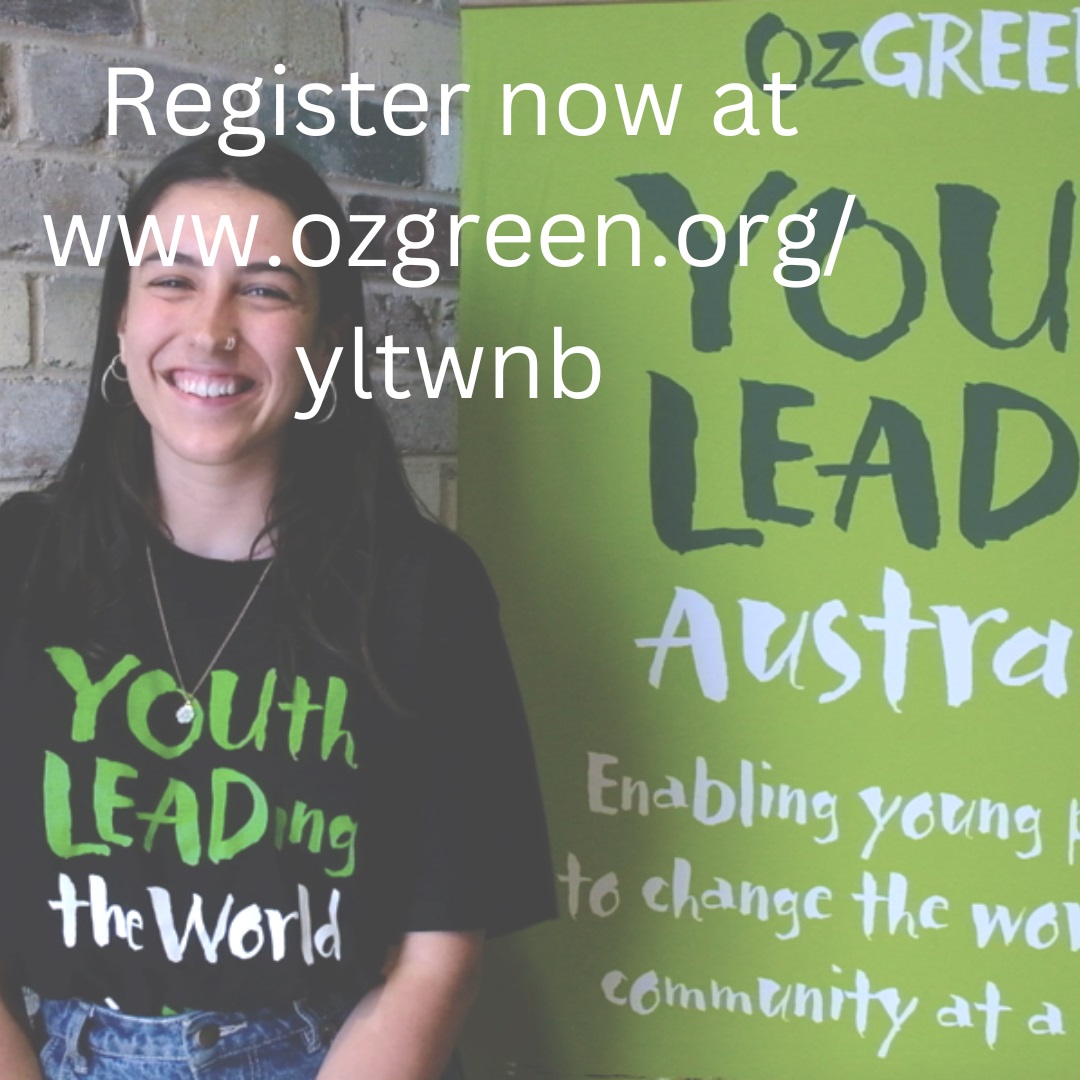
Comedy Wildlife Photography Awards 2022 - Have Your Vote!
It's that time of year again - thank goodness! We have just released the amazing 2022 Finalists to the media and hopefully you have managed to catch them and they made you smile A LOT. It's been a brilliant competition so far with some cracking entries, and it's going to be really, really hard to pick the winners. Yep, this is where we need your help!
Once again, the incredible team at Affinity Photo are sponsoring the People's Choice Award. You can enter via the website www.comedywildlifephoto.com, have fun voting for your favourite finalist, (which in itself is a great way to spend a few minutes with a brew and a biscuit) and you might win the prize draw and a tip top £500 in cash!! Just think what you could do with that?!
What are you waiting for? Terms and conditions apply. Voting closes on November 27th
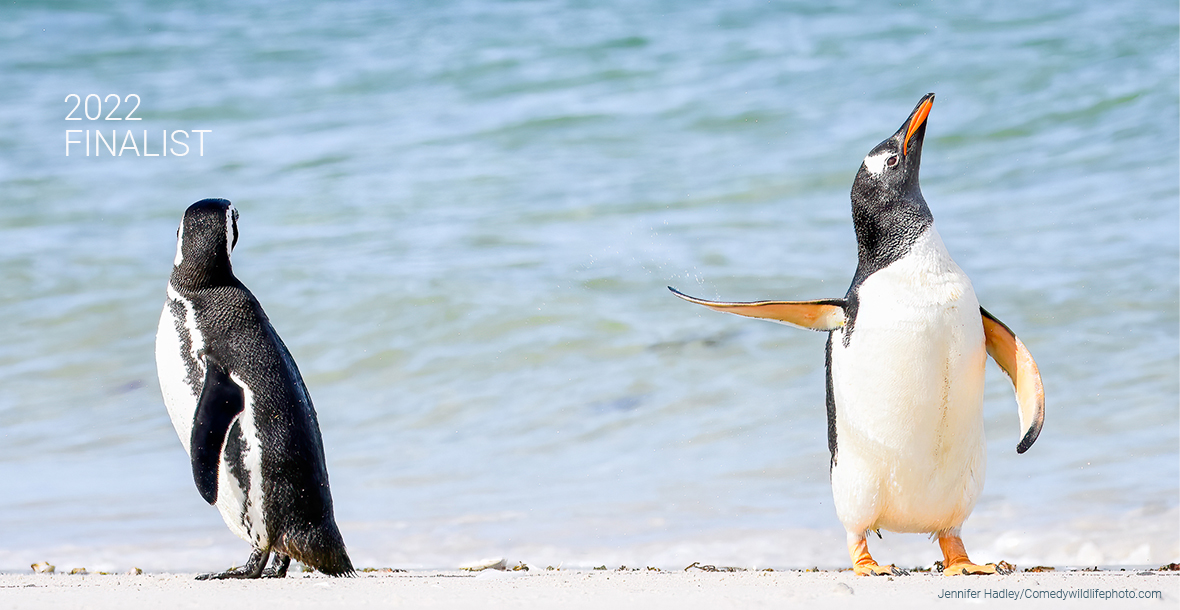

School Leavers Support
- Download or explore the SLIK here to help guide Your Career.
- School Leavers Information Kit (PDF 5.2MB).
- School Leavers Information Kit (DOCX 0.9MB).
- The SLIK has also been translated into additional languages.
- Download our information booklets if you are rural, regional and remote, Aboriginal or Torres Strait Islander, or living with disability.
- Support for Regional, Rural and Remote School Leavers (PDF 2MB).
- Support for Regional, Rural and Remote School Leavers (DOCX 0.9MB).
- Support for Aboriginal and/or Torres Strait Islander School Leavers (PDF 2MB).
- Support for Aboriginal and/or Torres Strait Islander School Leavers (DOCX 1.1MB).
- Support for School Leavers with Disability (PDF 2MB).
- Support for School Leavers with Disability (DOCX 0.9MB).
- Download the Parents and Guardian’s Guide for School Leavers, which summarises the resources and information available to help you explore all the education, training, and work options available to your young person.
School Leavers Information Service
- navigate the School Leavers Information Kit (SLIK),
- access and use the Your Career website and tools; and
- find relevant support services if needed.
HSC Online Help Guides
Stay Healthy - Stay Active: HSC 2022

Self-compassion is the superpower year 12 students need for exams … and life beyond school

This week, year 12 students in New South Wales will begin their final exams, with students in other states soon to follow.
This can be one of the most stressful times in a students’ life. It can also be very stressful for parents trying to support their children.
But there is a superpower in the arsenal of every year 12 student that can be harnessed to manage this stress. This superpower fuels resilience, not only for exams, but for any difficult situation they may be faced with across their lifespan. It’s called self-compassion.
I am a clinical psychologist who specialises in self-compassion. This is how you can use it, both for yourself and for your kids.
What Is Is Self-Compassion?
The most enduring relationship we have is the the one we have with ourselves.

This relationship shapes how we think, feel and behave to such an extent that often we are not even aware of it. We may think being hard or critical on ourselves pushes us to achieve results. But research shows this can lead to self-doubt, avoidance of hard tasks, higher risk of psychological illness and poor resilience.
In contrast, self-compassion encourages us to feel comfortable in our own skin. It allows us to generate our own feelings of warmth, reassurance, soothing and liking who we are.
What Does It Look Like?
Difficult moments, like an unexpected exam question, are a ripe breeding ground for self-criticism. You may be familiar with thoughts like, “I’m not good enough, I can’t do this, I should have worked harder, I’m going to fail, I am a failure.” These self-critical thoughts are almost addictive – when they pop up it is easy to fixate on them and spiral into panic or avoidance.
In contrast, picture a friend sitting the same exam and getting the same unexpected question. This is a good friend who you really care about. If you could say something to them in that moment, it’s probably easy to think of supportive words. Such as,
I know this is hard, but you can do this. Your best is good enough. This one exam will not define your life, even if you get this wrong. I still think you’re a wonderful person.
Self-compassionate responses are more likely to make us feel confident, safer and therefore resilient. If we’re feeling this way, it will likely be easier to at least attempt the question rather than give up. It it is easy to draw on compassionate wisdom for our friends. But why don’t we say these things to ourselves?
Our Tricky Brains
We don’t because we have a “tricky brain”.
We like to think of ourselves as sensible and rational, but the brain is actually a faulty piece of machinery. The brain is hardwired, through evolution, to focus on threat.
Noticing threat, and triggering the flight or fight response, is what kept our ancestors alive when they were faced with an aggressive cave man or attack from a sabre tooth tiger.
Today, threats tend to be less extreme: like not getting the score we want in a test or not having the career pathway we might like. But our mind and body still react in the same way as if we are facing a sabre tooth tiger, flooding our body with adrenaline and the stress hormone cortisol.
The (Many) Advantages Of Self-Compassion
Treating ourselves with the same kindness and support as we would a good friend comes with a plethora of mental health benefits.

It is associated with greater psychological well-being and a lower risk of developing symptoms of poor mental health.
It leads to better stress-management and boosts motivation to study for exams, often contributing to better grades. Self-compassion gives us the bravery to try things we may fail at, because we can take bigger chances if we know we won’t beat ourselves up if we fall short. And sometimes, as with more study, these chances and extra effort pay off.
Self-compassion can also weaken the link between perfectionism and depression. Perfectionism involves high standards and high levels of self-criticism and which can lead to depressive symptoms, especially when we fall short of our goals. But self-compassion may enable perfectionists to have high standards and be motivated to do well, without experiencing the mental health cost.
For example, in the lead up to an exam, having high standards and wanting to achieve can motivate us to study. But during and after the exam, this perfectionism can turn into self-criticsm which places us at risk of feeling low and unmotivated.
If we are compassionate with ourselves, we can normalise how tough exams are, and show unconditional positive regard for ourselves no matter the outcome. These compassionate ways of thinking can help protect us from depression symptoms.
How Can We Learn And Teach Self-Compassion?
Some of us tend to be more self-compassionate than others. But if you’re not naturally a very self-compassionate person, there is good news. Research suggests you can learn to do it.
Here are some ways to approach it, both for yourselves and your kids:
Check yourself: before talking with your child about self-compassion, consider how you treat yourself when under stress. Do you notice when your self-critic is triggered? It is hard to be genuine when encouraging someone else to be self-compassionate if you are not.
Model self-compassion: when you make an error, try replacing “I’m so stupid I let this happen” with “I’m upset about this and that’s okay – anyone would feel this way in this situation”. Talk to yourself in a soft, calm tone. Whether you say it aloud or even just think it, your behaviour in that moment will change, and your kids will see this
Talk about it: start a conversation with your child about their relationship with themselves. You could start with: “what do you tend to say to yourself or feel about yourself during exams?” or “what effect does this have on you?”
Help them spot self-criticism: encourage your child to notice when self-criticism pops up. Give the self-criticsm a name such as “Voldemort” or the “angry voice”. Say, “When you notice Voldemort is hanging around, gently ask yourself, what would you say to a good friend or a ten-year-old version of yourself in this situation?” This simple question is a powerful way to tap into the compassionate wisdom we all carry
Give yourself a hug: to help calm yourself, give yourself a hug. Either wrap your arms around yourself or hold your hand on your heart or chest and notice the warmth. Research tells us we get a flood of oxytocin - the body’s “love drug” – and relax when we are hugged by someone we trust. Our brain and body has an almost identical reaction when we hug ourselves. Use as a this short-cut to trigger some feelings of self-compassion.
And Don’t Forget This
Self-compassion is not something you master once, and then move on from. It is a lifelong journey of practising and learning. Sometimes, especially when we are busy or stressed, it will drop off and we may need reminding of it’s superpower.
As a self-compassion researcher, I talk, write, think, debate and practice self-compassion daily. Yet I still find myself listening to Voldemort at times. This is part of living with a “tricky brain”. But there is a more self-compassionate option. And if we take it, the science says we will be more resilient and more likely to accomplish our goals.![]()
Madeleine Ferrari, Clinical Psychology Lecturer , Australian Catholic University
This article is republished from The Conversation under a Creative Commons license. Read the original article.
2023 Year 12 School Scholarship Program Now Open: DYRSL

Securing A Brighter Future For Disadvantaged Youth
Be The Boss: I Want To Be An Information Technology Administrator
- Business/IT alignment
- IT governance
- IT financial management
- IT service management
- Sourcing
- IT configuration management
- IT infrastructure
- Aptitude for technical activities
- Good communication skills
- Able to quickly understand complex problems and devise effective solutions
- Willing to maintain and update own knowledge of IT content
- Able to work independently
- Able to direct and oversee the work of others
- Nationally Recognised Training
- Traineeship Allowed
- On campus, Combination, Online, Virtual classroom on campus, Virtual classroom off campus
- Full Time, Part Time
- Study Online
- Fully government-subsidised
- JobTrainer
- Talk with managerial, administrative and technical staff to determine information needs, data flows and systems definitions
- Establish and control systems' access and security
- Coordinate protocols for operation within multi-user IT networks that provide voice, data and text transmission
- Check systems in order to optimise performance and initiate recovery action after system failures
- Implement regular housekeeping procedures, including data backup
- Manage the distribution and retention of data on various storage devices
- Coordinate system updates and replacement of outdated versions
- Maintain data dictionaries
- Provide day-to-day advice to users on data structures and terminology
- Provide assistance with testing new equipment and systems
- Prepare technical reports on the operation of systems
- Prepare systems' cost estimates and cost-benefit analyses
- Coordinate the work of support staff
- Provide training in systems use and access.
- Testing database systems and upgrades, such as debugging, tracking, reproduction, logging and resolving all identified problems, according to approved quality testing scripts, procedures and processes.
- Continually surveying the current computer site to determine future network needs and making recommendations for enhancements in the implementation of future servers and networks.
- Troubleshooting and providing service support in diagnosing, resolving and repairing server-related hardware and software malfunctions, encompassing workstations and communication infrastructure.
- Implementing and administering database documentation, guidelines, policies and procedures.
- Performing the operational establishment and preventive maintenance of backups, recovery procedures, and enforcing security and integrity controls.
- Ensuring that the design of computer sites allows all components to fit together and work properly, and monitoring and adjusting the performance of networks.
- Liaising with security vendors, suppliers, service providers and external resources; analysing, recommending, installing and maintaining software security applications; and monitoring contractual obligations, performance delivery and service level agreements.
- Accepting responsibility for the processes, procedures and operational management associated with system security and disaster recovery planning.
- Designing and maintaining database architecture, data structures, tables, dictionaries and naming conventions to ensure the accuracy and completeness of all data master files.
- Preparing and maintaining documentation, policies and instructions, and recording and detailing operational procedures and system logs.
.jpg?timestamp=1666993504469)
Also Available:
- Be The Boss: I Want To Be An Architect
- Be The Boss: I Want to Be a Marine Electrician
- Be The Boss: I want To Be A Cabinet Maker
- Be The Boss: I Want To Be An Automotive Mechanic
- Be The Boss: I Want To Be A Biotechnologist
- Be The Boss: I Want To Be A Pilot
- Be The Boss: I Want To Be A Music Producer
- Be The Boss: I Want To Be A Gardener
- Be The Boss: I Want To Be A Builder
- Be The Boss: I Want To Be A Confectioner
- Be The Boss: I Want To Be A Ship's Captain
Word Of The Week: Holus-Bolus
adverb
1. all at once. 2. in one lump. 3. altogether
First Known Use of holus-bolus; 1840-1850
Word origin
[1840–50; mock-Latin rhyming compound based on phrase whole bolus. See whole, bolus]
This word is first recorded in the period 1840–50. Other words that entered English at around the same time include: dope, flan, layout, organizer, warmup
Holus-bolus originated in English dialect in the mid-19th century and is believed to be a waggish reduplication of the word bolus. Bolus is from the Greek word bōlos, meaning "lump," and has retained that Greek meaning. In English, bolus has additionally come to mean "a large pill," "a mass of chewed food," or "a dose of a drug given intravenously." Considering this "lumpish" history, it's not hard to see how holus-bolus, a word meaning "all at once" or "all in a lump," came about.
from: Unknown. Possibly of Ancient Greek origin, from ὅλος (hólos, “whole”) and βόλος (bólos, “a throw with a casting net”), or βῶλος (bôlos, “lump”). May have been Latinized (i.e., -us ending as in masculine singular in Latin, as opposed to -os ending for masculine singular in Greek).
David Bowie - Heroes
Fleetwood Mac - Landslide
Youssou N'Dour - 7 Seconds Ft. Neneh Cherry (1994)
Massive Attack - Safe From Harm (1991)
David Bowie - Queen Bitch From The Life Aquatic With Steve Zissou: End Credits
Japan’s ‘waste not, want not’ philosophy has deep religious and cultural roots, from monsters and meditation to Marie Kondo’s tidying up

The word “waste” is often frightening. People fear not making the most of their time, whether at work or at leisure, and failing to live life to the fullest.
Warnings against waste run especially deep in Japanese culture. Many Americans are familiar with the famous decluttering technique of organization guru Marie Kondo, who wrote “The Life-Changing Magic of Tidying Up.” Travelers to Japan may hear the classic expression “mottainai,” which means “don’t be wasteful” or “what a waste.” There are even gods, spirits and monsters, or “yokai,” associated with waste, cleanliness and respect for material goods.
As a scholar of Asian philosophy and religions, I believe the popularity of “mottainai” expresses an ideal more than a reality. Japan is not always known for being environmentally conscious, but its anti-waste values are deeply held. These traditions have been shaped by centuries-old Buddhist and Shinto teachings about inanimate objects’ interconnectedness with humans that continue to influence culture today.
Soot Sprites And Ceiling Lickers
The idea of avoiding waste is closely tied to ideas of tidiness, which has a whole host of spirits and rituals in Japanese culture. Fans of the famous animator Hayao Miyazaki may recall the cute little soot sprites made of dust in his films “My Neighbor Totoro” and “Spirited Away.” Then there’s the ceiling licker, “tenjōname”: a tall monster with a long tongue said to eat up the filth that accumulates in hard-to-reach places.
“Oosouji,” or “big cleaning,” is an end-of-year household ritual. Previously known as “susuharai” or “soot sweeping,” it is more than a chance to tidy up. The rite is believed to expel the negativity of the previous year while welcoming the Shinto god Toshigami: a major deity, considered grandson of the gods who created the islands of Japan – and who brings good luck for the new year.
Out with the defiled and old, in with the purified and new.

Revenge Of The Tools
There are countless varieties of monsters in Japanese folklore, including “yokai.” As Japanese folklore scholar Michael Dylan Foster points out, the category “yokai” is nearly impossible to define, because the meaning is ever-changing – and many yokai themselves are shape-shifters.
For instance, “yurei” are truly terrifying, vengeful ghosts. But another category of yokai is the living, shape-changing “bakemono” – including the mischievous “tanuki,” a raccoon dog, and “kitsune,” or fox, often depicted in statues guarding shrines.
One special class of yokai is known as “tsukumogami,” referring to animated household objects. This concept originates in Shinto, which literally translates as “the way of the gods,” and is Japan’s native folk religion. Shinto recognizes spirits, or “kami,” as existing in various places in the human world: from trees, mountains and waterfalls to human-made objects.
It is said that when an object becomes 100 years old it becomes inhabited by a Shinto spirit and comes to life as a tsukumogami. The “Tsukumogami-ki,” or “Record of Tool Specters,” is a text written sometime between the 14th and 16th centuries. It tells the story of how just such objects, already 100 years old and possessed by kami, were cast out in the trash after the annual housecleaning ritual. These animated household objects took offense at their casual disregard after years of loyal service. Angered at the perceived disrespect, the tool specters went on a rampage: drinking, gambling, even kidnapping and killing humans and animals.

Despite the Shinto elements, this is not a Shinto story but a Buddhist one. The animated household objects’ frenzy comes to an end when Buddhist priests intervene – meant to convince the audience that Buddhist practices were more powerful than local spirits associated with Shinto. At the time, Buddhism was still cementing its influence in Japan.
Laying Objects To Rest
If the “Tsukumogami-ki” is Buddhist propaganda, it is also a cautionary tale. The cast-aside objects lash out in anger for being treated without a second thought.
Reverence for objects has persisted throughout Japanese history in many forms. Sometimes this is for practical reasons, and sometimes more symbolic ones. The samurai sword known as the “katana,” for example, was often considered the soul of the warrior, symbolizing devotion to the way of the warrior, or “bushido.” In a more everyday example, cracked teapots are not discarded but rather repaired with gold in a process called “kintsugi,” which adds an asymmetrical beauty like a golden scar.

This reverence also persists in the form of funerary services for a host of objects considered deserving of respect, such as doll-burning ceremonies performed at Shinto shrines and Buddhist temples. No-longer-wanted but not-unloved dolls are collected so that the spirits within can be honored and released before the end of their lives. A similar practice exists for artisans’ sewing needles, which are put to rest with a memorial service.
Karma And Clutter
The roots of these attitudes toward material things are therefore religious, practical and psychological. As a Japanese philosophy of waste, “mottainai” keys into Zen Buddhism’s emphasis on emptiness: minimalism to empty the mind and bring insight.
This desire to show respect also stems from Buddhist beliefs that all things, living or not, are interconnected – a teaching called “pratītyasamutpāda.” It’s closely tied with conceptions of karma: the idea that actions have consequences, especially moral consequences.
In short, Buddhism acknowledges that things shapes people, for better or worse. Unhealthy attachment to objects can manifest in different ways, whether it be the perceived need to buy an expensive car or reluctance to let go of unneeded items.
But that does not necessarily mean throwing away everything. When we are done with material goods, we don’t need to simply cast them into the trash to fill up landfills or pollute the air and water. They can be given a dignified send-off, whether through reuse or responsible disposal.
Failing that, the story in the “Record of Tool Specters” warns, they may come back to haunt us.
Now, that’s scary.![]()
Kevin C. Taylor, Director of Religious Studies and Instructor of Philosophy, University of Memphis
This article is republished from The Conversation under a Creative Commons license. Read the original article.
Fred Williams is known for his landscapes. But his drawings are little pockets of explosive expressive energy

Review: Fred Williams: The London Drawings, The Ian Potter Centre: NGV Australia
When Fred Williams died on April 22 1982, aged 55, Australia lost one of its most significant landscape artists of the second half of the 20th century. Williams reinterpreted the landscape within a modernist framework and taught Australians a new way of seeing their natural environment.
Williams had studied art in Melbourne at the National Gallery School and took classes in George Bell’s more progressive private school. He subsequently spent almost five years in London studying drawing at the School of Art at the Chelsea Polytechnic and took an etching course at the Central School of Arts and Crafts.
He returned to Australia late in 1956. It was then he announced that he would paint the gumtree.
This exhibition of 160 drawings, 12 gouaches and 30 etchings examines Williams’s work before he turned to the gumtree – his figurative work during his London years where he examined the human figure, animals in the zoo and the rich cross-section of theatre life and of life on the streets.
Many of these drawings have never been seen before and are part of a generous gift made to the National Gallery of Victoria by the artist’s widow, Lyn Williams, and family.

Quickfire Sketches
Fred Williams: The London Drawings shows Williams as few have seen him before, with rapid sketches of models posing at the art school, glimpses of comic scenes on the music hall stages the artist caught from his dimly lit perch in the gods, and faces that he encountered in the street.
He seems to have taken great pleasure in sketching elephants and the big cats in the zoo, as well as images of people at the framing business where he worked, portraits of friends and rural scenes from his occasional trips into the English countryside.

What is fascinating is not so much the subject matter that caught the attention of this artist in his 20s, but his manner of execution.
Williams, the landscape artist, was certainly an impulsive worker with his idiosyncratic dabs, blobs and dribbles punctuating the surfaces of the canvases, gouaches and etchings.
In the London drawings, Williams appears to be assembling this repertoire of marks with the curious quickfire sketches of random profiles, tumbling arrested action and spectacular and unexpected compositional arrangements.

Throughout many of the drawings, the desire is to achieve a maximum expressiveness, where his line flirts with caricature, not so much to achieve comic intent but to capture a memorable gesture. The exhibition is studded with little pockets of explosive expressive energy.
A Solitary And Unconventional Artist
Williams frequently worked alongside other Australian artists then resident in London, for example, Francis Lymburner with whom he drew at the zoo.
Lymburner was a virtuoso draughtsman. His animal sketches wonderfully convey the wholeness of the creature depicted with an exquisite lucidity of line.
Williams, working next to him, appears not interested in articulating a rhinoceros, elephant, giraffe or lion, but sets out to capture their expressive essence. The viewer is swept along by the power of the drawing – the emotional impact – and not by the articulation of its overall form.

Subsequently, Williams was to employ a similar strategy to the Australian landscape when he returned. In the early Nattai River landscapes and the first Mittagong series in 1957-58, apart from restructuring the picture plane and titling forward the surface, the expressive vibrancy of the images stems from the expressive expressionistic mark making.
Williams was an unusual and outstanding draughtsman who was obsessive, inventive and enthused by what he discovered in London. Apart from the community of expats that surrounded and to some extent supported him, he was also a solitary and unconventional artist.
From the evidence presented in this extensive exhibition, Williams was not swept along by fashionable trends that inspired the British art world. The artists who appear to have most inspired him at this time were Rembrandt, Daumier, Whistler, Degas and some of the Renaissance masters.
Complete Dedication
From the outset, Williams exhibited a complete dedication to his art and a very measured approach.
He did suffer bouts of melancholy, common to many young artists, but for him art was a process that was not to be hurried. He was prepared to spend a dozen years training in art schools in Melbourne and London before launching on a solo career.

The London drawings were an apprenticeship, a training that was to set him up for the challenges that he was to face on his return to Australia. One inevitably wants to speculate whether Williams could have been something more than a landscape painter.
In my discussions with the artist in the final years of his life, it appeared to me that Williams felt that he had mastered the landscape and was ready to return to the grand human narrative. Death ultimately robbed him of that opportunity.
Fred Williams: The London Drawings is at The Ian Potter Centre: NGV Australia until January 29. ![]()
Sasha Grishin, Adjunct Professor of Art History, Australian National University
This article is republished from The Conversation under a Creative Commons license. Read the original article.
Elon Musk is wrong: Research shows content rules on Twitter help preserve free speech from bots and other manipulation

Elon Musk’s acquisition of Twitter on Oct. 27, 2022 has triggered renewed debate about what it means for the future of the social media platform, which plays an important role in determining the news and information many people – especially Americans – are exposed to.
In addition to expanding Twitter’s features, Musk has said he wants to make it an arena for free speech. What that means has fueled much speculation and raised concerns about the effect the acquisition will have on the 2022 midterm elections – and use of the platform by politicians more generally going forward. Musk sought to allay fears the day the acquisition closed in a message to advertisers saying he recognized that the platform cannot become “a free-for-all hellscape.”
As a corporation, Twitter can regulate speech on its platform as it chooses. There are bills being considered in the U.S. Congress and by the European Union that address social media regulation, but these are about transparency, accountability, illegal harmful content and protecting users’ rights, rather than regulating speech.
Musk’s calls for free speech on Twitter focus on two allegations: political bias and excessive moderation. As researchers of online misinformation and manipulation, my colleagues and I at the Indiana University Observatory on Social Media study the dynamics and impact of Twitter and its abuse. To make sense of Musk’s statements and the possible outcomes of his acquisition, let’s look at what the research shows.
Political Bias
Many conservative politicians and pundits have alleged for years that major social media platforms, including Twitter, have a liberal political bias amounting to censorship of conservative opinions. These claims are based on anecdotal evidence. For example, many partisans whose tweets were labelled as misleading and downranked, or whose accounts were suspended for violating the platform’s terms of service, claim that Twitter targeted them because of their political views.
Unfortunately, Twitter and other platforms often inconsistently enforce their policies, so it is easy to find examples supporting one conspiracy theory or another. A review by the Center for Business and Human Rights at New York University has found no reliable evidence in support of the claim of anti-conservative bias by social media companies, even labeling the claim itself a form of disinformation.
A more direct evaluation of political bias by Twitter is difficult because of the complex interactions between people and algorithms. People, of course, have political biases. For example, our experiments with political social bots revealed that Republican users are more likely to mistake conservative bots for humans, whereas Democratic users are more likely to mistake conservative human users for bots.
To remove human bias from the equation in our experiments, we deployed a bunch of benign social bots on Twitter. Each of these bots started by following one news source, with some bots following a liberal source and others a conservative one. After that initial friend, all bots were left alone to “drift” in the information ecosystem for a few months. They could gain followers. They acted according to an identical algorithmic behaviour. This included following or following back random accounts, tweeting meaningless content and retweeting or copying random posts in their feed.
But this behaviour was politically neutral, with no understanding of content seen or posted. We tracked the bots to probe political biases emerging from how Twitter works or how users interact.
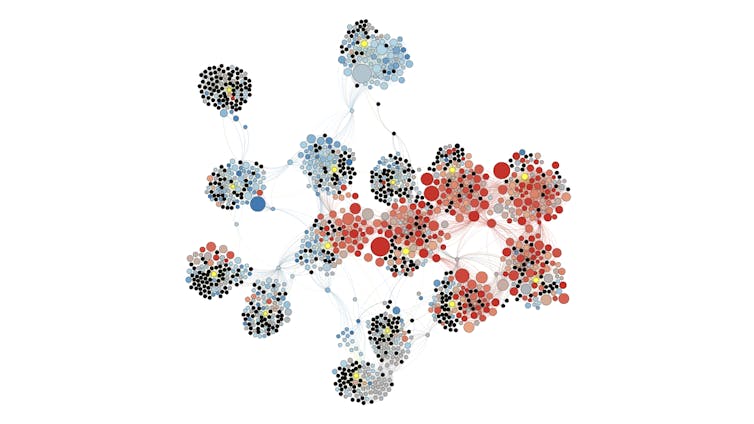
Surprisingly, our research provided evidence that Twitter has a conservative, rather than a liberal bias. On average, accounts are drawn toward the conservative side. Liberal accounts were exposed to moderate content, which shifted their experience toward the political center, while the interactions of right-leaning accounts were skewed toward posting conservative content. Accounts that followed conservative news sources also received more politically aligned followers, becoming embedded in denser echo chambers and gaining influence within those partisan communities.
These differences in experiences and actions can be attributed to interactions with users and information mediated by the social media platform. But we could not directly examine the possible bias in Twitter’s news feed algorithm, because the actual ranking of posts in the “home timeline” is not available to outside researchers.
Researchers from Twitter, however, were able to audit the effects of their ranking algorithm on political content, unveiling that the political right enjoys higher amplification compared to the political left. Their experiment showed that in six out of seven countries studied, conservative politicians enjoy higher algorithmic amplification than liberal ones. They also found that algorithmic amplification favors right-leaning news sources in the U.S.
Our research and the research from Twitter show that Musk’s apparent concern about bias on Twitter against conservatives is unfounded.
Referees Or Censors?
The other allegation that Musk seems to be making is that excessive moderation stifles free speech on Twitter. The concept of a free marketplace of ideas is rooted in John Milton’s centuries-old reasoning that truth prevails in a free and open exchange of ideas. This view is often cited as the basis for arguments against moderation: accurate, relevant, timely information should emerge spontaneously from the interactions among users.
Unfortunately, several aspects of modern social media hinder the free marketplace of ideas. Limited attention and confirmation bias increase vulnerability to misinformation. Engagement-based ranking can amplify noise and manipulation, and the structure of information networks can distort perceptions and be “gerrymandered” to favor one group.
As a result, social media users have in past years become victims of manipulation by “astroturf” causes, trolling and misinformation. Abuse is facilitated by social bots and coordinated networks that create the appearance of human crowds.
We and other researchers have observed these inauthentic accounts amplifying disinformation, influencing elections, committing financial fraud, infiltrating vulnerable communities and disrupting communication. Musk has tweeted that he wants to defeat spam bots and authenticate humans, but these are neither easy nor necessarily effective solutions.
Inauthentic accounts are used for malicious purposes beyond spam and are hard to detect, especially when they are operated by people in conjunction with software algorithms. And removing anonymity may harm vulnerable groups. In recent years, Twitter has enacted policies and systems to moderate abuses by aggressively suspending accounts and networks displaying inauthentic coordinated behaviors. A weakening of these moderation policies may make abuse rampant again.
Manipulating Twitter
Despite Twitter’s recent progress, integrity is still a challenge on the platform. Our lab has found new types of sophisticated manipulation, which we presented at the International AAAI Conference on Web and Social Media in June 2022. Malicious users exploit so-called “follow trains” – groups of people who follow each other on Twitter – to rapidly boost their followers and create large, dense hyperpartisan echo chambers that amplify toxic content from low-credibility and conspiratorial sources.
Another effective malicious technique is to post and then strategically delete content that violates platform terms after it has served its purpose. Even Twitter’s high limit of 2,400 tweets per day can be circumvented through deletions: We identified many accounts that flood the network with tens of thousands of tweets per day.
We also found coordinated networks that engage in repetitive likes and unlikes of content that is eventually deleted, which can manipulate ranking algorithms. These techniques enable malicious users to inflate content popularity while evading detection.
Musk’s plans for Twitter are unlikely to do anything about these manipulative behaviors.
Content Moderation And Free Speech
Musk’s likely acquisition of Twitter raises concerns that the social media platform could decrease its content moderation. This body of research shows that stronger, not weaker, moderation of the information ecosystem is called for to combat harmful misinformation.
It also shows that weaker moderation policies would ironically hurt free speech: The voices of real users would be drowned out by malicious users who manipulate Twitter through inauthentic accounts, bots and echo chambers.
This article has been update to include the completion of Elon Musk’s acquisition of Twitter.![]()
Filippo Menczer, Professor of Informatics and Computer Science, Indiana University
This article is republished from The Conversation under a Creative Commons license. Read the original article.
Zombie worlds: five spooky planets orbiting dead stars

All stars, including the Sun, have a finite lifetime. Stars shine by the process of nuclear fusion in which lighter atoms, such as hydrogen, fuse together to create heavier ones. This process releases vast quantities of energy which counteracts the ever-present inward pull of the star’s gravity. Ultimately, fusion helps stars to resist gravitational collapse.
This balance of forces is called “hydrostatic equilibrium”. However, there will come a time when the supply of fuel in the core of a star starts to run out and it eventually dies. Stars with more than about eight times the mass of the Sun will typically burn through their fuel in less than 100 million years. Once fusion ceases, the star collapses – generating a massive instantaneous final burst of nuclear fusion which causes the star to explode as a supernova.
Supernovas release enough energy to outshine the entire galaxy in which they occur. What’s left afterwards are collapsed, dead stellar cores called neutron stars or, if the progenitor star was massive enough, a black hole. Any planets orbiting a star when it goes supernova would be obliterated. Mysteriously though, a handful of “zombie planets” have been detected orbiting neutron stars. And they are some of the weirdest worlds in the cosmos.
Neutron stars are extremely dense, containing as much mass as the Sun squashed into a sphere only a few miles across. Some neutron stars emit beams of radio waves into space – and it is around these “pulsar” stars that planets have been found. As the pulsar spins, its radio beams sweep through space generating regular radio flashes. Pulsars were discovered in 1967 – you can listen to the sounds of the radio emission from some of them here.
The regularity of these radio pulses make pulsars ideal for hunting nearby planets. If a pulsar has a planet, they will both orbit a shared gravitational centre. This means the radio emission will be periodically stretched and compressed in a predictable fashion – allowing us to detect the planet.
Phobetor, Draugr And Poltergeist
Some 2,300 light years from Earth lies the pulsar PSR B1257+12. It flashes 161 times per second and has been nicknamed “Lich” after an undead creature in western folklore. It is orbited by three rocky, terrestrial planets named Phobetor, Draugr and Poltergeist.
These planets hold a special place in the history of astronomy, as they were the first beyond our Solar System (exoplanets) to be discovered back in 1991. A few years ago, Nasa released this “zombie worlds” poster of them:

Their discovery challenged ideas about planetary formation, which normally takes place as a new star forms. In contrast, these planets must have formed after the dying star’s supernova. It is not yet known with certainty how this happened. Material in a disk of debris orbiting the pulsar may have coalesced into planets after the supernova.
Draugr, named after an undead creature in Norse mythology, is the innermost of the three. It has about twice the mass of the Moon and is the least-massive planet currently known, orbiting Lich every 25 days. Its larger cousins, Poltergeist and Phobetor, orbit every 67 and 98 days respectively, and are each about four times the mass of Earth.
Pulsars have powerful magnetic fields which may allow electric currents to arc through space between the pulsar and an orbiting planet. So if any of these planets have atmospheres, they might constantly be bathed in the unearthly light of powerful aurora (similar to our northern lights).
If you were to stand on the surface of one of these zombie worlds, you would see, through the powerful hue of the aurora, the incandescent Lich in the sky projecting two powerful and tightly confined beams of light outwards in opposite directions into the blackness of space. Neutron stars can be extremely hot, carrying the residual heat left over from the supernova. Lich is nearly 30,000°C and the innermost of these worlds, Draugr, is likely to only be a few degrees below freezing at its surface.
Diamond World
Planet PSR J1719−1438b orbits a pulsar some 4,000 light years away, hurtling around its host in just over two hours. It is the densest planet yet discovered – so dense, in fact, that it is thought to be composed largely of diamond.
This “diamond world” is the remnant core of a dead star called a white dwarf. These are known to have a high carbon content (diamond is made of carbon) – but this particular white dwarf has lost 99.9% of its original mass, consumed by the powerful gravity of its nearby host pulsar.
This sphere of diamond is about half the size of Jupiter, and orbits PSR J1719-1438 at a distance of 600,000km (just 1.5 times further away than our Moon is from Earth). At such a close distance from its host pulsar, it is likely that this world has a very hot surface.
Methuselah
Orbiting the Milky Way (and many galaxies) are globular star clusters – spherical groups of up to a million stars each. These are some of the oldest stars in the universe.
The globular star cluster Messier M4 lies about 5,600 light years away and contains some 100,000 stars. Among these is a planet nicknamed Methuselah, after the son of Enoch in the Book of Genesis who supposedly lived for 969 years.
At the centre of the M4 star cluster is a pulsar and a white dwarf orbiting about their shared gravitational centre every 161 days. Given the short-lived nature of high-mass stars, the pulsar would have formed shortly after the formation of Messier 4 itself.
Methuselah also orbits this centre, but at a much more leisurely pace of once every 100 years or so, at a distance similar to that at which Uranus orbits our own Sun. It is a giant gas planet around 2.5 times the mass of Jupiter. Methuselah is believed to have formed as a normal planet around a Sun-like star within the first billion years of the formation of the universe. It was then captured into orbit around the host pulsar, which it has orbited ever since.
The high density of stars in globular clusters makes the chances of two stars having a close encounter quite high – and likewise the exchange of planets. Methuselah is the oldest known planet in the cosmos, having formed an estimated 12.7 billion years ago along with all the stars in M4.
Pulsar planets are worlds of extremes, yet even they may not be the most bizarre. A small number of theoretical studies have proposed the existence of planets orbiting black holes. So far, however, none have been found.![]()
Gareth Dorrian, Post Doctoral Research Fellow in Space Science, University of Birmingham
This article is republished from The Conversation under a Creative Commons license. Read the original article.
If you want your child to be more resilient, get them to join a choir, orchestra or band
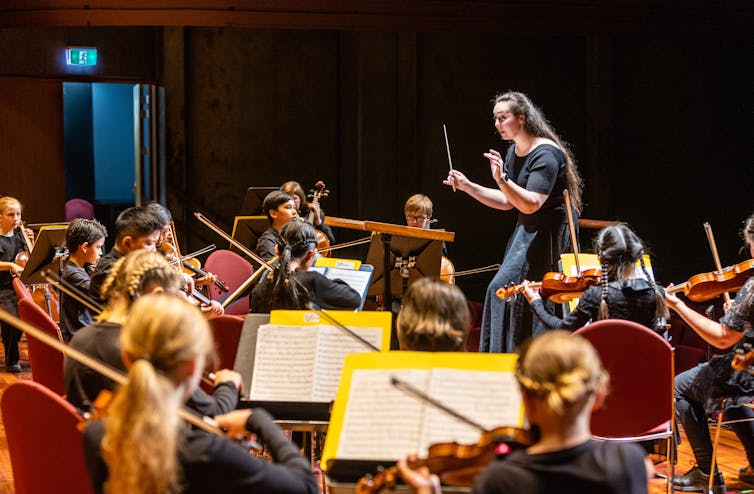
One of the most important qualities for a young person to develop is resilience. This involves their ability to overcome adversity.
Resilience is perhaps more important now than ever. Today’s young people have been facing adversity on a mass-scale, thanks to COVID and all the disruptions to their education and social, home and working lives.
The good news is, resilience is not just something you are born with. It can be learned from our experiences and interactions with others.
Parents may not be aware that one way to develop resilience is through group music making, such as in a school or community choir, orchestra or band.
Our Research
We wanted to investigate how group music making can develop skills beyond just learning to play an instrument or sing.
Our study is based on the Tasmanian Youth Orchestras, which include accomplished musicians aged from 14 to 25. This includes the state youth orchestra as well as two other orchestras, specialist ensembles and two choirs.
For our project, we collected comments from players, managers and conductors/teachers on a closed Facebook site and then did eight follow-up interviews.
Our findings show how qualities like teamwork, empathy and grit – all components of resilience – can be developed through group music making.
Teamwork
In order for a group of players to make a piece of music work, they have to work together.
People have to listen to each other, understand what is happening around them, and be prepared to change how they play something (slow or fast, loud or soft) depending on how the group is performing. You need to be able to value the contributions of other people, not just your own.
So, we found if you are playing in a band, you are learning team work skills. As David*, a conductor told us:
After a while, players realised that they were ultimately responsible to the other players not to the conductor.
Empathy
Players also need to be able to understand others in a group and share their feelings.
In a choir or orchestra, the music making is a shared creative experience – that involves the whole body. And this is where empathy comes in.
Empathy, like teamwork, can be cumulative, growing over time through rehearsals and performances, as players and teachers support one another. As brass player Tom said,
I have to understand that I am not always going to be the main focus of a piece.
Another player, Simon, told us about his realisation that other people were also having to work hard (and it wasn’t just about him).
You certainly aren’t the only person having to practise your doubles [playing two notes at once] for that piece.
Grit
It is important for young people to develop a “growth mindset”, where they understand effort makes them stronger and learning is a long-term commitment.
This is where grit also comes in: pursing a goal and sticking with it even if it takes a lot of work or gets difficult.
It can take many months to learn a piece of music up to performance standard. And learning an instrument requires practice every day. So commitment is a key part of learning music.
Lawrence, a player, told us about participating in his school musical:
There were many points throughout the year which I felt like giving up […] but it was something I had committed to […]. I kept working on playing the music to the best of my ability, even if it felt like I couldn’t do it.
Tory, a choir conductor, described performance as both “safe and unsafe”. Young people in a choir learn to deal with the unexpected as part of performance. And this takes a kind a bravery.
You’ve got safety in numbers, to some extent, but you are still stepping into the unknown every time you walk on stage to do a thing. You can rely on each other, because you’ve rehearsed, but stuff does go pear shaped. Stuff happens […] It’s an incredibly useful life skill to be able to go, ‘well, that sucked’ […] and go, all right ‘let’s [go again]’.
Why Music?
But what is so special about music in fostering resilience? Young people also work in sporting teams or academic assignments. They can also work together while playing games.
Playing music provokes activity in many different parts of the brain at the same time. Listening to music that we like triggers the pleasure/reward centre of the brain. Dopamine and serotonin are released, resulting in that “feel good” sensation, and providing an incentive to keep engaging with music.
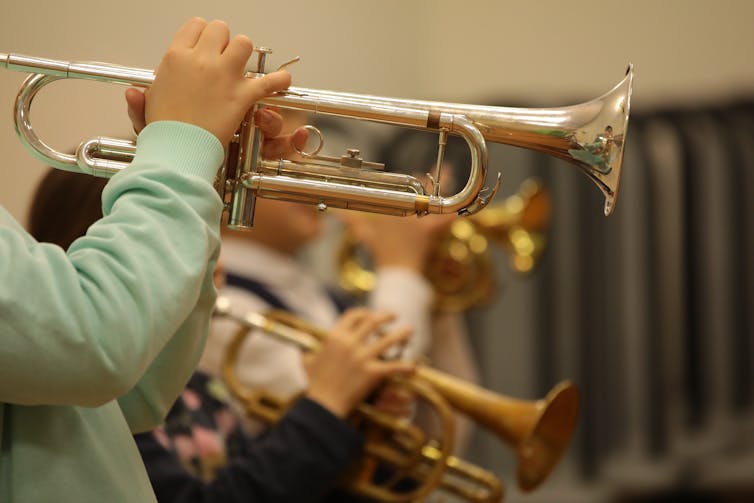
Learning a musical instrument also strengthens connections in the brain, linking the auditory cortex to parts of the brain involved in the processing of complex information. This link has been shown to improve memory, motor functions and learning in other subject areas.
Making music with others also affects levels of the bonding hormone oxytocin, supporting a sense of togetherness, while reducing levels of the stress hormone cortisol, and boosting immune function.
For young people, music can provide valuable respite from study and daily life, and help manage and express their emotions.
So, if you want your child to be a team player who is empathetic and shows grit, our research suggests that joining a music group could be the answer.
*names have been changed![]()
William James Baker, Senior Lecturer, School of Education, University of Tasmania; Anne-Marie Forbes, Associate Professor and Discipline Lead, Creative Arts and Health, University of Tasmania, and Kim McLeod, Senior Lecturer in the School of Social Sciences, University of Tasmania
This article is republished from The Conversation under a Creative Commons license. Read the original article.
TikTok is teaching the world about autism – but is it empowering autistic people or pigeonholing them?

A quick look at some TikTok stats shows more than 38,000 posts under the hashtag #Autism, with more than 200 million views. The hashtag #ActuallyAutistic (which is used in the autism community to highlight content created by, and not about, autistic people) has more than 20,000 posts and 40 million views.
TikTok is one of the world’s leading social platforms, and has exploded in popularity at a time when other social media megaliths have struggled. It has become an important channel for expression for its young usership – and this has included giving autistic people a voice and community.
It’s a good start. In some ways TikTok has helped drive discussions around autism forward, and shift outsiders’ perspectives. But for real progress, we have to ensure “swipe up” environments aren’t the only spaces where autistic people are welcomed.
But First, What Is Autism?
Autism is not an illness or a disease. It’s a lifelong developmental condition that occurs in about one in 70 people. Characteristics of the condition occur along a spectrum. This means there is a wide range of differences among people with autism, all of whom have unique challenges and strengths.
A 2017 survey conducted by myself and my colleagues found more than half of autistic people and their family members felt socially isolated. And 40% said they sometimes felt unable to leave the house because they were worried about negative behaviours towards them.
Many Australians have little knowledge about autism and limited interaction with autistic people. Generally, public attitudes will be shaped by news coverage, online articles and mainstream movies and shows. While media portrayals of autism can positively influence public knowledge, they can also contribute to misunderstanding and increase stigma. It seems the results are mixed.
Studies have found media representations of autism can contribute to stereotypes of what it means to be autistic. For instance, shows such as The Good Doctor and Atypical present autism as a condition of “high functioning, socially deficient, emotionally detached, and heterosexual males from middle-class white families”.
As an autistic person, one of the most disturbing things for me is how marginalised our voices are in conversations about autism. You will most often find non-autistic people behind autism-related research, books, movies and TV programs. Most autistic characters are also played by non-autistic actors.
A review of autism-related news published in Australian print media from 2016 to 2018 found only 16 of 1,351 stories included firsthand perspectives from autistic people.
My own research into depictions of autism in print news published between 1996 and 2005 found narratives of autistic people as dangerous and uncontrollable, or unloved and poorly treated.
When Autism Met TikTok
TikTok has given many autistic people a much-needed platform to speak about autism in creative ways. Some users such as Paige Layle and Nicole Parish have more than 2 million followers. The opportunity to dispel myths and share the diversity of autistic experiences has not been squandered.
Some of the positives for autistic users include opportunities to:
- connect with others who are similar to us, and feel less isolated and alone
- educate people about some of the lesser known or misunderstood aspects of autism, such as stimming (self-stimulatory behaviour including repetitive or unusual body movement or noises)
- share our passions and interests with others (#SpecialInterest) and
- raise awareness of the prevalence of and different presentation of autism in females (#AutisticGirl).
However, as with all forms of social media, we should exercise caution before labelling TikTok as the solution to autism exclusion.
The Other Side Of It
The most obvious risk is cyberbullying. Many of us will remember the disturbing fad of “faking autism” videos on TikTok. Examples of this included non-autistic people stimming to music (pretending to be autistic), to make people laugh, or because they thought it made them seem cute or quirky.
Turning the autistic experience into a “meme” downplays both our challenges and our strengths. It’s hard to describe just how hurtful it is to see your identity used as a joke to entertain others.
Related to this is the posting of videos of autistic people by others without their consent. Whether this is playground bullies tormenting an autistic person, strangers in a shopping centre filming a “naughty kid”, or a parent having a bad day with their autistic child – these videos can be used, reused and misused by others.
Moderation by TikTik is an additional concern. In 2019, Netzpolitik.org reported TikTok had policies for moderators to suppress certain content by users they thought were “susceptible to harassment or cyberbullying based on their physical or mental condition”.
This included users with “facial disfigurement”, “autism” and “Down syndrome”. A TikTok spokesperson said this was a “blunt and temporary policy” made “in response to an increase in bullying on the app”.
Is the best solution to bullying to silence the voices of potential victims, rather than the bullies?
Algorithmic Influence
TikTok’s algorithm is highly curated to individual users. The app decides what videos to show a user based on: their previous interactions including which videos they watch, like and favourite; video information (such as captions and hashtags); and their device and account settings.
This means users will likely see their own perspectives and beliefs reflected back to them. Autistic people may begin to believe this is the only reality that exists, leading to the creation of a “false reality”.
On TikTok, autistic people see an idyllic world where everyone understands and embraces autism. We forget that outside our “echo chamber” there is a world of people living in their own echo chambers.
If we want to see genuine improvement, we have to make autism acceptance and inclusion a priority across public life. We could start by including more autistic voices in TV shows, movies, books and news, as well as more representation in leadership teams and among policy makers.
Sandra Jones, Pro Vice-Chancellor, Research Impact, Australian Catholic University
This article is republished from The Conversation under a Creative Commons license. Read the original article.
We took away due dates for university assignments. Here’s what we found

As university students around the country finish their final exams and assessments for the year, the idea of removing due dates might seem incredibly appealing.
Being more open-ended about when assignments are submitted may also seem like the logical next step for universities. Even before COVID-19, they have been looking for ways to make learning more flexible. This is generally done by offering units online or in a hybrid model, where some units are in person and some are online. But is it truly flexible if just the place has changed?
An emerging trend in the sector is “self-paced learning,” where students do not have to fit their learning into a university semester and there might be flexible due dates for assessments.
In other words, students with internet access and a laptop can study at a time and place that suits them.
At CQUniversity this is called “hyperflexible learning”. Our university already offers hyperflexible postgraduate units.
We wanted to know what the experience would be like for students and staff if hyperflexible units were offered at undergraduate level.
Our Study
In a 2021 pilot study, we looked at four undergraduate history and communication units. The humanities was a good fit for the pilot because they attract a wide range of students, did not have tests or exams and had fewer restrictions like external accreditation.
We offered the units in the traditional mode and a hyperflexible mode. In the hyperflexible mode, students had access to all the unit content, could self-pace and did not have due dates for their written and oral assessments.

The unit’s content was self-paced, via short recorded videos and interactive learning modules, rather than traditional lectures. There were opportunities for learning with other students (like live Zoom tutorials), but these were not compulsory.
Of the group, 27 students chose to take the hyperflexible option. We interviewed them and three unit coordinators before and after the term about their experiences. We also surveyed all 12 humanities staff about their perceptions of hyperflexible learning.
While the sample size was small, students and staff suggested there are both risks and benefits to this type of study.
‘I Wouldn’t Have Passed’: What Did Students Say?
On balance, the students who took part had a positive experience. One even said:
If it wasn’t hyperflexible I wouldn’t have passed.
Several noted how assessment deadlines were a significant source of stress and relished the freedom to fit study around their life, rather than the other way around. Several said it made it easier to accommodate their work and family commitments.
One student said they were thrilled when they heard about the hyperflexible option because:
I am a very anxious student, and deadlines really, really stressed me out.
Other students suggested the quality of their learning was better in a hyperflexible model as they were able to “go deeper” on a topic that interested them and not have it reserved for one particular week. It was suggested that the hyperflexible unit allowed “study in a more intensive way”.
But students also raised concerns. Several noted it “feels a bit isolating”, “disconnected”, like they are “the only student doing it” and they are not “participating in the university experience”.
Others were worried they might not receive the same level of feedback from staff and there might be a temptation to “leave everything to the last minute”.
Doing Two Jobs: What Did Staff Say?
University staff were generally more cautious about the benefits of hyperflexible learning. Common concerns were students would lose their sense of being part of a group, feel lost or overwhelmed, allow assignments to pile up, and it could ultimately see more students dropping out.
Staff were also concerned no due dates could increase their workload. They noted they would be less free to take leave or attend conferences if they did not have a reasonable expectation when their marking would be due. Even when students were being taught the same content, there were new challenges and as one staff member said:
I feel as though I am managing two cohorts.
Staff members did see benefits in hyperflexible learning also and most said they were willing to experiment with it. Several commented on the potential for motivated students to finish their degrees faster. One staff member noted that having now taught a hyperflexible unit:
I have confidence that most students get there in the end.
What Now?
Our study suggests removing due dates from undergraduate units has potential to make university study more accessible and less rigid, while reducing student stress.
One key issue is how students can maintain a sense of being together in a group, receive support, and feel a connection to their university.

For educators, hyperflexible learning is a distinct form of teaching and staff members would need to be adequately trained and supported. This way of teaching is individualistic and seeks to fit study around the needs of each student. To some extent, this is in conflict with the ideal of university as a learning community.
Although the responses to the pilot program were largely positive, there is still a lot more we need to know about the impact of removing due dates and time pressures. For example, although due dates were removed, students still had to complete their assessments within the semester – due to university and government policies.
Also, while this approach might fit the assessment-focused humanities, we don’t know how this works in disciplines that are more heavily exam-driven (like health and IT).
Ultimately, risks associated with hyperflexible learning and the impact on both staff and students need to be considered carefully before adopting these approaches for undergrads.
So, sorry students – seems like you’ll have to finish that essay this week after all.![]()
Benjamin T. Jones, Senior Lecturer in History, CQUniversity Australia and Amy Johnson, Lecturer, CQUniversity Australia
This article is republished from The Conversation under a Creative Commons license. Read the original article.
Book Of The Month: November 2022 - The Harp In The South By Ruth Park
The Harp in the South is the debut novel by Australian author Ruth Park. Published in 1948, it portrays the life of a Catholic Irish Australian family living in the Sydney suburb of Surry Hills, which was at that time an inner city slum.
The Harp in the South was published, initially, in the Sydney Morning Herald in twelve daily instalments, beginning on 4 January 1947, after winning a competition run by that newspaper. The prize was £2,000, and there were 175 entires.
It was controversial, with readers writing to the newspaper, on the basis of the synopsis, even before the serialisation started. Delia Falconer writes that The Herald published "forty-three responses, a symposium, and a daily tally of pro and con letters (sixty-eight for; fifty-four against)". It was published in book form in 1948 by Angus & Robertson, who baulked at the novel but "had to honour a ‘gentleman’s agreement’ to publish the winner".
It has been translated into 37 languages and never been out of print. Newly married Park and Niland did live for a time in a Sydney slum located in the rough inner-city suburb of Surry Hills and vouched for the novel's accuracy. Sydney slum life recurs in her novel for children, Playing Beatie Bow (1980).
Rosina Ruth Lucia Park AM (24 August 1917 – 14 December 2010) was a New Zealand–born Australian author. Her best known works are the novels The Harp in the South (1948) and Playing Beatie Bow (1980), and the children's radio serial The Muddle-Headed Wombat (1951–1970), which also spawned a book series (1962–1982).
Park built on her initial success with the 1949 publication of a follow-up novel titled the Poor Man's Orange. During the 1950s, despite the demands of raising a family, she wrote tirelessly. According to a 2010 tribute article printed in The Sydney Morning Herald and written by her literary agent Tim Curnow, she produced more than 5,000 radio scripts alone during this decade, as well as contributing numerous articles to newspapers and magazines and penning weightier works of fiction.
She subsequently wrote Missus (1985), a prequel to The Harp in the South, among other novels, and created scripts for film and television. Her autobiographies, A Fence Around the Cuckoo (1992) and Fishing in the Styx (1993), deal with her life in New Zealand and Australia respectively. She also penned a novel set in New Zealand, One-a-pecker, Two-a-pecker (1957), about gold mining in Otago. (It was later renamed The Frost and The Fire.)
Park and Niland had five children, of whom the youngest, twin daughters Kilmeny and Deborah, went on to become book illustrators. (Park was devastated when Niland died in Sydney at the age of 49 from a heart ailment.
Park never remarried. Between 1946 and 2004, she received numerous awards for her contributions to literature in both Australia and internationally. She was made a Member of the Order of Australia in 1987.
From 1974 to 1981 Park dwelt on Norfolk Island, where she was the co-owner of a shop selling books and gifts. Her later years, however, were spent living in the Sydney harbourside suburb of Mosman. She died in her sleep on 14 December 2010, at the age of 93.
Ruth Park Account Of A Storm At Collaroy When Living At ‘Wits End’
Past Profile of the Week and former Warriewood SLSC member Norman Godden writes from New Zealand last week to remind us of the account of Ruth Park of a storm she witnessed at Collaroy Beach in 1945.
Norman says;
‘’I read the amazingly researched article on Narrabeen, Collaroy and Narrabeen Lakes. What was really interesting was the information on the storms over the years which washed away homes along Collaroy Beach. I was aged 8 in 1945 when my Dad took me to Collaroy to have a look at the major destruction along the beach, resulting from an huge storm. The damage was far worse than resulted from later storms, including those which wrecked homes at Fisherman’s Beach at Collaroy. Whole houses had simply disappeared and those left were completely wrecked, some a pile of debris and others skeletons of their former selves. The beach was covered with stoves, toilets, kitchenware, tiles and so on. In those days, the beach was still covered with tank traps, many weighing tons having been moved by the power of the storm.
What might interest you is that two of Australia’s greatest authors, Ruth Park and D’Arcy Niland had to flee the storm from the boarding house “Wits End” where they were living with their young baby. Like most budding authors, they were as poor as Church Mice, living from hand to mouth. The description of that night, as in her autobiography “Fishing in the Styx” (pages 108-112), is terrifying. They ended up standing on Pittwater Road with other refugees from the houses, with some blankets around them which they managed to salvage.
Ruth Park went on to publish 50 books including “Harp in the South” and “Dear Hearts and Gentle People”, and D’arcy Niland many, including the famous “The Shiralee” and “Call me when the Cross Turns Over”. In later years Ruth lived at Balgowlah, quite near us.’’


Thank you for your input sir!
For those interested, in June 2016 John Illingsworth placed these words of Ruth’s in a short film he made about Narrabeen – Collaroy Coastal Erosion, available at and embedded below: https://youtu.be/FJlHH8OJMOI
Photos: Ruth Park holding her cat outside her home in Balgowlah, 10 December 1962By John Aloysius Mulligan courtesy National Library of Australia [nla.pic-an24574247] and cover of “Fishing in the Styx”


Budget October 2022–23: Restoring Dignity To Aged Care The Government States
- The Government will mandate the number of care minutes residents receive – starting with 200 care minutes including 40 nursing minutes from 1 October 2023, and 215 care minutes including 44 nursing minutes from 1 October 2024. Aged care homes will receive more funding to deliver on our promise to provide more care minutes to residents. In addition, from 1 July 2023 all aged care homes must have a registered nurse on site 24/7. These commitments will be met with a combined investment of $2.5 billon.
- Aged care residents will also have access to better food, with the Maggie Beer Foundation funded to educate and train staff to meet new nutritional standards ($5m).
- Older people in care will experience a strengthened and professional aged care workforce. A new national registration scheme for personal care workers will include a code of conduct, ongoing training and English proficiency ($3.6m). Continuity of care will also be improved by requiring providers to preference direct employment.
- Home care administration and management fees will be capped and exit fees will be abolished – ensuring the amount of funds going towards direct care is maximised. This, in additional to newly published data on what aged care providers spend their funding on, will better protect older Australians from neglect, rorts and rip-offs.
- Initiatives to progress in-home aged care reforms will also be funded ($23.1m), including additional consultation, a large scale trial of a new assessment tool, and establishment of a Service List Advisory Body. The Commonwealth Home Support Programme will be extended to the support at home program commencement (30 June 2024), to provide continuity for over 800,000 older people who access the program.
- Individual homes will receive funding to provide better support to older First Nations people, those from diverse communities and those living in regional areas ($26.1m).
- A dedicated Aged Care Complaints Commissioner will ensure complaints are properly and thoroughly dealt with ($9.9m). A new independent Inspector-General of Aged Care will target systemic issues to improve outcomes for older Australians ($38.7m).
- The Strengthening Regional Stewardship measure ($68.5m) will expand the department’s local presence to help improve regional aged care services, including in eight new regional locations.
- Funding will be provided to modernise aged care ICT to enable reform and to reduce the administrative burden for the more than 2,000 providers that interact with the Government’s aged care systems ($312.6m). Funds will also be provided to sustain the existing My Aged Care system operations.
- Our biggest priority in aged care is increasing the workforce because nine years of neglect has left the sector in crisis. In August the Government made a submission to the Fair Work Commission for a needed pay rise for aged care workers. A decision is expected this summer. The Government will provide funding to support any increases to award wages resulting from the FWC decision and it will impact up to 300,000 workers.
Budget October 2022–23: Medicare
Federal Budget Initiatives Welcomed By Older Australians Says COTA
- Higher pay for all aged care staff to follow from the work value case currently before the Fair Work Commission, for which the Government has already made a provision.
- At least 15,000 of the free TAFE training places being reserved for aged care to help address workforce pressures.
- The creation of a dedicated Age Care Complaints Commissioner in the Aged Care Quality and Safety Commission.
- A substantial commitment of over $310 million in the essential upgrading of IT infrastructure and systems to support the new Support at Home program, greater provider transparency and other reform measures.
- Full funding for 24 hour, 7 day nursing in all residential care services from 1 July 2023.
- Increasing the minutes of care for each aged care resident from the new average of 200 minutes (including 40 of nursing) required from 1 July 2023 to 215 minutes from 1 October 2024.
- Implementing a national personal care worker registration scheme and a Code of Conduct.
- Creating an independent Inspector General of Aged Care as recommended by the Royal Commission and getting the Office of the Inspector General started in 2022/23,
- Providing better food services using a four year funded program to support and train the sector.
- Implementation of the new Support at Home program by 1 July 2024, which will require testing and finalisation of the new single assessment service, design of the new service list and the IT systems needed to support greater choice, self-management, and transparency. In the meantime, the government will be moving to cap home care administration fees until unit pricing is introduced.
- Continuation of the Disability Support for Older Australians program from the end of 2022 to the end of 2023 – an essential but still transitional step to fully implementing the Royal Commission recommendation for older Australians with severe disabilities to be treated in an equivalent way to the NDIS.
- Implementing new measures to establish enhanced financial and care service transparency of providers to both the government and older people seeking and using care
- Supporting the new Independent Hospitals and Aged Care Pricing Authority to be ready to recommend independently determined fair and reasonable service pricing by 1 July 2024
Job Vacancies Strengthen Case To Let Pensioners Work
- Freezing deeming rates for pensioners and other payments for two years, regardless of changes to the RBA cash rate
- Increasing the income test threshold used to determine eligibility for the Commonwealth Seniors Health Card so 44,000 more self-funded retirees get access to concessions
- Legislating for a registered nurse on site in aged care homes at all times of the day
- Supporting an increase to aged care workers' wages through the Fair Work Commission
- Lowering the cost of medicines by $12.50 to a maximum cost of $30.
Have Your Say On Strengthening Quality In Aged Care
Freshie Masters Carnival - Saturday 19 November

Tobias Breider & Grace Kim Perform Forgotten Romance

Vitamin D Deficiency Linked To Premature Death
Scams Awareness Week 2022
- Scamwatch Report Form: If you’ve come across a scam you can report it here.
- Scamwatch reporting statistics: Provides up-to-date statistics on scams reported by Australians.
- Targeting Scams Reports: Our yearly report on scam trends and statistics.
- Helping a friend or family member who is a victim to a scam: Useful information if someone close to you has been scammed.
- Be Safe, Be Alert Online: Information on organisations who may be able to help when someone has been scammed.
- Where else to get help: Other organisations who might be able to help when someone has fallen victim to a scam.
- Little Black Book of Scams: Information on identifying a scam (available digitally in a range of languages).
- Protect yourself against scams
- Online shopping and banking
- Helpful apps for your smart device
- How to use home smart technology
- Selling safely online

Bilgola Probus Club Commences

Most older Australians aren’t in aged care. Policy blind spots mean they live in communities that aren’t age-friendly
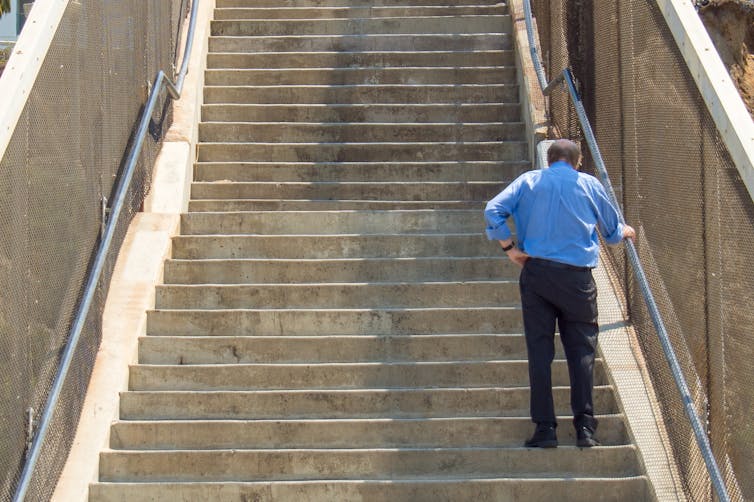
In response to the horror stories of abuse and neglect from the Royal Commission into Aged Care, the new federal Labor government has made legislative changes. Prior to this, Australia’s most recent aged-care reforms were enacted a decade ago. The focus, however, is still largely on residential care homes, so what about older Australians in the broader community?
More older Australians are still living in their own homes. How do our policies and cities support them? We have published an analysis comparing 85 policy documents across all three levels of Australian governments against World Health Organization (WHO) guidelines on age-friendly cities.
We found these policies reflect outdated views of old age. They neglect many important aspects that contribute to happy and fulfilling lives in older age.
The policy focus is overwhelmingly on care and support services. There are decreasing levels of attention to housing, transport, walkability and, least of all, cultural diversity.
WHO Guidance On Making Age-Friendly Cities
The WHO first published its Global Age-Friendly Cities: A Guide in 2007 to support the active ageing policy framework it proposed back in 2002. Described as “the centrepiece of WHO’s age-friendly cities approach”, the guide became a major point-of-reference for age-friendly policymaking around the world.
In 2010, the WHO launched the Global Network of Age-Friendly Cities and Communities. The network aims to help governments and other organisations build age-friendly cities through evidence-based guidance and knowledge exchanges. Australia’s members include two states, 34 local councils and one regional organisation.
Our research, however, found little to no difference between Australian members and non-members in making direct policy references to these guides. For example, more of South Australia’s (a non-member) policy documents referred to the guidelines than Western Australia’s (a member), as the table below shows.
There were also discrepancies between the tiers of government. State and territory governments were more likely to take on such guidance than federal and local governments. Yet local governments are the intended audience of the framework and the guide.
Previous research in Canada blamed this on “the minimal state powers of municipal governments”. In Australia, too, our federated system has left local councils with limited authority and resources.
An Outdated View Of Old Age
In analysing the 85 policy documents, we adopted a “traffic light” system to highlight whether they acknowledged ageing-related challenges and proposed corresponding actions.
Our analysis focused on five policy areas:
care and support services
cultural diversity
housing
transport
walkability.
These areas broadly align with the WHO’s age-friendly domains.
The skewed policy focus is on care and support services. This reflects decades of aged-care reforms in Australia and their take-up at all levels of government. It also potentially reveals a stereotypical view of old age as being a time of frailty, decline and disengagement.
In contrast, many Australian and international movements advocate positive ageing. Their approach recognises the important contributions people make in later life.
Our analysis also reveals a failure to recognise how diverse circumstances impact the ageing processes. The result is a neglect of the broader spectrum of older Australians’ support needs.
This was most obvious in the failure of policies to recognise diverse cultural needs. There is almost a complete blindness to their impacts on ageing and other social determinants of health.
A Mismatch Between Resources And Services
In Australia’s three-tiered government system, each level has its own authority and resourcing ability. Previous Australian research shows local governments have limited ability to raise the resources they need to design and implement policies and programs for their ageing residents as the WHO guidance intended.
Our analysis shows a reliance on national programs instead. These may not be as nuanced in responding to local needs and conditions.
In related work, our fine-level spatial analysis also highlights a mismatch between the growth of ageing populations across Australia and where aged care services are being offered. This is due largely to inequitable eligibility criteria. These effectively favour home owners living in standalone suburban houses over others such as renters.
The latest proposal to revamp a residential aged-care sector that is no longer fit-for-purpose must be applauded. Policy should aim to provide these residents with all the attention and dignity they deserve. But as the population ages, there’s an ever greater need to provide support across all the domains that enable older people to live healthy, fulfilling lives.
People Want Age-Friendly Communities
We must look more broadly, to the many more older Australians who live in the community. It’s an option our governments have long encouraged. And it’s what most people prefer for themselves.
Local authorities would know local residents and their needs most intimately. But our analyses show they are hamstrung in supporting the needs of older people in the community.
Continued reform must aim to ensure local councils have the powers and resources required to serve these needs. This will go some way towards responding better to Australians’ changing needs. Importantly, it will also help to reframe the dialogue of ageing away from frailty and debilitation.![]()
Edgar Liu, Senior Research Fellow, Healthy Urban Environments (HUE) Collaboratory / City Futures Research Centre, UNSW Sydney; Bruce Judd, Professor and Director, Australian School of Architecture and Design, UNSW Sydney, and Mariana T Atkins, Senior Research Fellow, Centre for Social Impact, The University of Western Australia
This article is republished from The Conversation under a Creative Commons license. Read the original article.
Floods and other emergencies can be extra tough for people with dementia and their carers. Here’s how to help

As we write from New South Wales’ Northern Rivers region, other parts of eastern Australia are facing conditions that recall uncomfortable memories from the 2017 floods and those in March this year. Many people are fatigued and still coming to terms with those devastating natural disasters.
We know from previous research people with pre-existing mental health conditions and poorer health are more likely to live in flood zones.
Val, a dementia advocate who has been diagnosed with the neurodegenerative disease, knows this all too well.
My house flooded in March and then I spent a week in a local evacuation centre because I could not get home. My house was covered in mud like so many other houses, and we had to throw out a lot of things. Eight months later, drips of disappointment continue. I still think, I’ll go downstairs and get that but no, it has been tossed out.
Extreme weather events are increasing globally and so are the numbers of people living with or expected to develop dementia. Floods are stressful for everybody – especially Australians living with dementia and those who care for them. But planning and preparation can help.
Stressful Situations
In stressful situations, such as flooding and exposure to other natural disasters, people living with dementia may respond in unexpected ways. This might include disorientation, restlessness, wandering or not being able to recognise people or things.
Symptoms may increase as will the risk of functional decline (a decrease in the daily tasks a person can do independently). All this also adds extra stress for carers.
Dementia Australia gives the following seven tips every carer can use to support people living with dementia:
- look for simple changes to make home life easier, such as prepared meals or cleaning help
- allow extra time and space for the person to do things for themselves as much as possible
- listen without always trying to jump in and problem-solve
- give the person with dementia extra time to search for words they can’t find immediately
- make use of clever technology, such as reminder alerts or safety warnings
- help them plan social activities
- encourage safe active movement and healthy choices.
These principles apply to preparing for, responding to and recovering from an emergency too.
Be Prepared
To simplify the emergency experience for someone living with dementia and engage them in the process, there are several tools to help you prepare for natural disasters. These include the Emergency Preparedness Toolkit for People Living with Dementia or the checklists in Preparing for a Natural Disaster – the Guide to Using RediPlan for Carers of People with Dementia.
Based on our first-hand experiences of working in flood evacuation centres, we know they can be very loud, chaotic and disorienting spaces.
While recognising the practical difficulties of establishing evacuation centres in the middle of a crisis, staff can help provide structural and emotional support for people with dementia and their carers by:
- identifying people with dementia quickly and assessing their needs. A family member or friend may be able to help
- providing quiet, calming spaces within evacuation centres to reduce stress
- prioritising people living with dementia for relocation to safe, stable accommodation rather than remaining for long periods within the unfamiliar centre among unfamiliar faces
- including a component of dementia awareness training for emergency services providers, including volunteers.
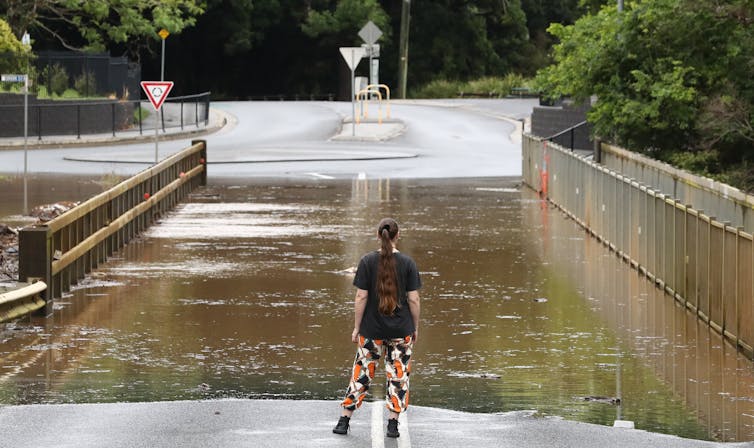
Stay Connected Online
People need digital skills to be able to access information and for communication during disasters. Social media is often used for information exchange and disaster warnings. But access can be a barrier for older people.
However, there is increasing evidence digital technologies, such as mobile phones and computers, can prevent social isolation and loneliness in dementia. We found this in our local community as well.
Last year, Dementia Inclusive Ballina ran a digital training program with 50 carers. We found the number of people who had talked to loved ones in the previous four weeks online had doubled after extra training in the use of Zoom, WhatsApp, and other communication tools.
The federal government’s Be Connected program for older Australians is a network of community organisations who support older Australians to improve their digital literacy.
You can help by teaching people living with dementia and their carers how to access natural disaster information and how to connect during a disaster. These skills are an important part of any digital training program for older people.
Have A Network Of People Around You
The caring role can be an all-consuming one. People living with dementia and their carers are at high risk of being socially isolated. That means they can be hard to reach, especially during disasters.
Carers should be identified and supported to look after their own health. Prioritising carers’ health and living environment enables them to continue to look after their loved ones after a disaster.
You can help them by
- reaching out and asking if you can help. Practical assistance might be cleaning up after the disaster, assisting with shopping, charging phones if there is a power outage, or just lending a helpful ear so carers can debrief
- following up down the track when post-traumatic stress can surface. Care is crucial to support long-term recovery
- taking it a step further and creating a dementia-inclusive community with a group of local people.
Dementia Australia has useful resources to make your community dementia inclusive (in Ballina, for example, we draw on research evidence to connect carers and people with dementia in the region) and there’s an International Standard too.
Emergencies like floods are incredibly stressful for everyone. With preparation, online connections and a strong social network they can show the strength of community and caring, especially for people living with dementia, and their carers. ![]()
Sabrina Pit, Honorary Senior Research Fellow at the University of Sydney, Honorary Adjunct Research Fellow, Western Sydney University; Louise Horstmanshof, Senior Lecturer, Faculty of Health, Southern Cross University, and Robert G Lingard, Adjunct Senior Lecturer, Southern Cross University
This article is republished from The Conversation under a Creative Commons license. Read the original article.
How we found microbes rarer than a ticket to the Moon

You are more likely to take a trip to the Moon than to see a microbe called Legendrea loyezae under a microscope. Nasa’s Apollo programme has sent a total of 24 people to the Moon between 1968 and 1972. Only four people (including us) have ever found Legendrea loyezae from its discovery in 1908 to our recently published study.
Considering the expense, it makes sense that the number of people who journeyed to the Moon would be low. But peeking into the microscopic realm doesn’t require a billion-dollar budget, only a microscope and someone willing to sit in front of it.
Our recent study uncovered 20 new species of microbes as well as 100 rare ones. Each DNA specimen we find gives another piece of the evolution puzzle. Scientists can use this jigsaw to analyse how an organism works. For example, some genes hint about how a being respires. Or it can give information about the organism’s place on the tree of life.
The reason so few scientists have seen these microbes is because undersampling is a major issue. This means most research teams take samples from only a few or even just one location.
Our most recent investigation, which took two years, involved the collection and investigation of well over 1,000 samples. From the lakes and ponds in Warsaw, Poland, to marine sediments in the North Sea, and the Mediterranean off the coasts of Italy and Portugal, to chalk streams in Dorset, UK we searched for microbes. And it paid off: we found more than 500 species, including the rare and new ones.
Microbiology Is Human History
The first life on Earth appeared in water as creatures too small for the human eye to see and stayed that way for billions of years. Microbes live all around us. They can be found in any habitat, from puddles to oceans. But there is still so much we don’t know about them. Some of these microscopic organisms evolved from simple to more complex beings, eventually giving rise to all the visible life around us. Others have hardly changed and kept their minute size.
Microorganisms were the first predators on Earth and their greedy appetites drove the evolution of more complex life in the early ages of Earth’s history. After the evolution of complex life, microbes became the main food source for other creatures such as krill and plankton, which in turn are food for larger species. If the organisms at the very bottom of the food chain disappeared, all other parts above them would collapse too.
The timescale of this is so long it’s hard to grasp. If we squeezed Earth’s 4.5 billion years old history into a single year, life would exist on a microscopic scale until the end of October. Humans would appear on the last 30 minutes of the year, and we would be aware of the existence of the microbes just less than three seconds before the new year.
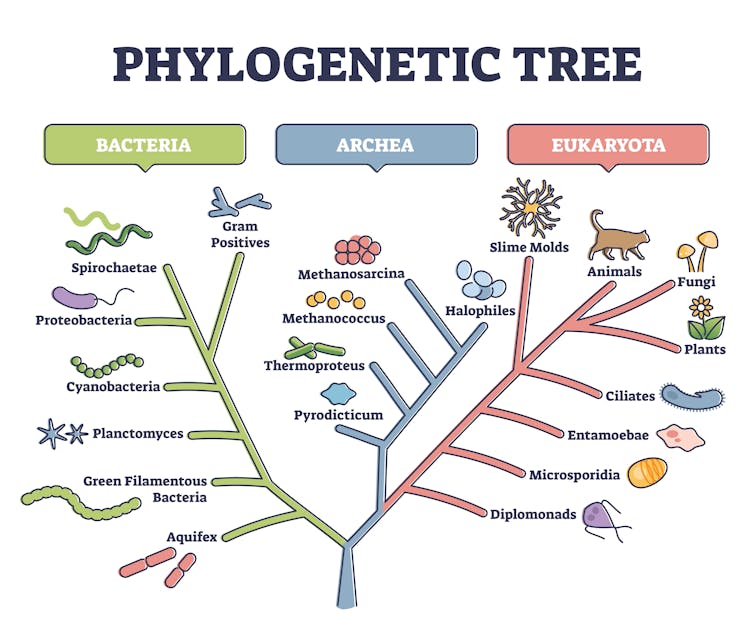
The Tree of Life shows how organisms are related to each other. Looking at it, you can see most life on Earth is still micro scale, with animals, plants and fungi restricted to a small cluster of branches within the eukarya group. In contrast to the other two groups, archaea and bacteria, eukarya members store their DNA in the cell nucleus.
A Microscopic Rarity
Legendrea loyezae is in the ciliates branch of eukarya. Oxygen is lethal for Legendrea loyezae and it has tentacles that stretch and contract to catch prey. Scientists have discovered thousands of ciliate species.
Ciliates live in aquatic environments, thin water films in soils and even places where there is no oxygen. Although their lives depend on water, they can form protective structures to stay dormant until they get wet again. They are composed of only a single cell and yet they are wondrously diverse. Ciliates have interesting hunting strategies – some types specialise in eating filaments of cyanobacteria, which they suck up like spaghetti. They can swim. Others have a sedentary lifestyle, including Vorticella, which has a stalk to attach itself to submerged surfaces.

Some ciliate species form permanent, physical relationships with other groups of organisms, something known as symbiosis. For example, they can harbour green algae inside themselves to eat the sugar the algae produce through photosynthesis. In exchange, they protect the algae from larger algae-grazers and viruses (yes, even algae can get viral infections).

Some ciliate species live in densely populated communities, especially in well-oxygenated environments. But others live in such small numbers that finding them is like searching for a thousand needles in a haystack the size of Mount Everest.
Our goal is to find as many of these rare and unusual species as we can. We use our knowledge of species’ ecology as clues. If we know that a microbe prefers to live in dark, oxygen-free habitats we don’t look for it on the surface of the water where there is plenty of oxygen and light. It took thousands of hours looking through a microscope to find four Legendrea loyezae, not to mention a small fortune on physiotherapy for our cricked necks and aching backs.
Why Microbes Matter
It’s easy to feel detached from the invisible microbes. Most of us will never get to see one magnified enough for our eyesight to pick up. But learning about microbes has helped inform some of the most important scientific discoveries in history. Microbes take life as they inflict animal and plant diseases and develop massive blooms in the sea that wipe out aquaculture farms.
But we couldn’t live without them. Microbes are responsible for the survival of our ecosystems and for their recovery after damage such as pollution or climate change. We can’t grow food without microorganisms. They clean our sewage. Some can produce antibiotics and other drugs, others are involved in the production of food.
So exploring the microbial world is well worth the backache.![]()
Genoveva Esteban, Professor of Microbial Ecology, Bournemouth University and James Weiss, Researcher, Microbiology, Bournemouth University
This article is republished from The Conversation under a Creative Commons license. Read the original article.
Pubs and clubs – your friendly neighbourhood money-laundering service, thanks to 86,640 pokies

Billions of dollars in proceeds of crime are being funnelled through clubs and pubs in New South Wales, according to the NSW Crime Commission. Predictably, the industry is claiming it’s not an issue and solutions are too difficult.
Laundering money through a local club or hotel involves loading cash into one of the state’s 86,640 poker machines, then cashing out and claiming the money as winnings.
This is not a preferred method for most organised criminals, the crime commission says. Sophisticated criminals have other methods. But it is still a sizeable proportion of the estimated $20 billion in criminal proceeds laundered in NSW each year.
In Queensland, you can put only $100 into a poker machine at one time. In Victoria the limit is $1,000. In NSW, newer machines allow $5,000, and older machines up to $10,000. For supposedly harmless suburban fun it’s hard to understand why such sums are allowed.
The findings of the NSW Crime Commission’s inquiry into money laundering via clubs and hotels follow scandalous money-laundering revelations from casino inquiries in NSW, Victoria, Western Australia and Queensland.
Those inquiries found Crown Resorts and Star Entertainment allowed hundreds of millions of dollars to pass through their casinos, in contravention of anti-money-laundering regulations.
Both companies were found not fit to hold their licences. Crown has been fined $80 million in Victoria. Star has been fined $100 million in NSW, and had its licence suspended.
Both have been required to undergo extensive “renewal”. They have agreed to adopt cashless gaming to better protect against money laundering.
It’s therefore unsurprising the NSW Crime Commission’s principal recommendation is to introduce a cashless system for all electronic gaming machines in NSW. Also unsurprising is that the industry is focused on why it shouldn’t.
Cashless Gambling Recommended
The NSW Crime Commission’s report recommends a cashless gambling system for pubs and clubs the same as for casinos – consistent with the identification requirements of Australia’s Anti-Money Laundering and Counter-Terrorism Financing Act.
Electronic gaming cards would record amounts loaded and withdrawn, times, turnover, and losses/wins. The maximum amount of cash able to be loaded on to a player’s account in a single day would be $1,000.

Josh Landis, the chief executive of ClubsNSW (which represents most of the state’s 1,200 licensed clubs) has said that such technology has not been trialled, and was uncosted and unproven.
But Crown Resorts and Star Entertainment are implementing such systems. Similar systems have been operating successfully in Norway since 2009, and in Sweden since 2013.
Victoria has already implemented a card-based precommitment system, incorporating most necessary characteristics. Every poker machine in the state is linked to this system. Its flaw is that it is voluntary, allowing those who wish to clean dirty money, or avoid a limit, to simply opt out.
It’s Not Just About Money Laundering
Money laundering isn’t the only reason to introduce cashless gaming systems.
On any day in NSW, hundreds of thousands of people are experiencing significant gambling harm, mostly using poker machines. Many hundreds of thousands more – partners, children, employers – are also harmed as a consequence.
A pre-commitment system incorporating all the features of the NSW Crime Commission’s cashless model would stop money laundering and also help those struggling to control their gambling. For those who want to stop it would provide a truly effective gambling self-exclusion system.
The Tasmanian government has promised to implement a statewide system by 2024.
A Matter Of Political Commitment
The real test here isn’t technology. It’s political will.
NSW Premier Dominic Perrottet has expressed concern at the exploitation of vulnerable people via gambling. Opposition leader Chris Minns has said the crime commission’s report is concerning but will not commit to a cashless card.
ClubsNSW and the Australian Hotels Association are two of Australia’s most powerful lobby groups. According to an ABC investigation, they have doled out about a third of $40 million in political donations disclosed by gambling-related organisations over the past two decades.
Since 2010, ClubsNSW has signed memorandums of understanding with incoming governments to protect its members interests.
In the first six months of 2022 (the most recent data available), people in NSW lost $4 billion using pokies – $2.4 billion in clubs, $1.6 billion in pubs. This is 23% more than the same period in 2019, before pandemic restrictions.
Yet according to the Australian Hotels Association, the industry is on “on its knees” and being told to introduce “an unproven, untested, un-costed and unnecessary cashless system”.
In NSW, gambling operators are not permitted to donate to state political campaigns. But ClubsNSW (and its member clubs) can because they are “not for profit”.
If this continues, political parties will be open to the allegation that they, like clubs, are benefiting from the proceeds of crime.
Pokie operators have billions of reasons to assert this is no big deal. Politicians should take a different view.![]()
Charles Livingstone, Associate Professor, School of Public Health and Preventive Medicine, Monash University
This article is republished from The Conversation under a Creative Commons license. Read the original article.
Journalists must be protected in police investigations. Here’s our five point plan for reform
Rebecca Ananian-Welsh, The University of Queensland and Jason Bosland, The University of MelbourneAustralia is now 39th in Reporters Sans Frontiers’ World Press Freedom Index, a staggering decline of 20 places since 2018. This reflects a fact acknowledged by both the Morrison and Albanese governments: Australia has a press freedom problem.
The 2019 AFP raids on News Corp journalist Annika Smethurst and the ABC prompted two parliamentary inquiries and as many constitutional challenges. Meanwhile, the prosecutions of whistleblowers David McBride, Witness K and Richard Boyle revealed the potential consequences for those who expose government wrongdoing.
Vast and complex security laws, set against an absence of protections unique in the Western world, have made public interest reporting a risky business for journalists and their sources.
These problems are well known, but we are yet to see actual law reform to support public interest journalism.
A Commitment To Reform
Attorney-General Mark Dreyfus recently assured Australians his government was “going to do something” about press freedom reform.
Specifically, it would act on Parliamentary Joint Committee on Intelligence and Security recommendations made in 2020 and accepted by the Morrison government.
A central pillar of the committee’s report were reforms to federal warrant applications.
It recommended only senior judges have the power to grant warrants relating to journalists and media organisations.
It also said the “interests of public interest journalism” should be represented by a government-appointed “public interest advocate”. Otherwise, warrant applications should remain ex parte (meaning without the knowledge or presence of other parties, such as the affected media organisation).
The government has committed to these reforms. But as several overseas examples show, the proposals go nowhere near far enough to address the deficiencies in press freedom in Australia.
Learning From Our Allies
Under US law, a blanket protection exists to prevent state access to journalistic materials, subject to strictly limited exemptions.
In New Zealand, as in Queensland and Victoria, a journalist cannot be forced to show police materials that would identify a confidential source (unless a judge determines the public interest in the administration of justice outweighs the public interests in source confidentiality and press freedom).
In Canada, only a senior judge may grant police access to information a journalist holds – and only where there is no alternative and access is justified by a robust public interest test.
The most compelling framework is presented by the UK Police and Criminal Evidence Act, which New Zealand is on the cusp of embracing.
UK police cannot get a warrant to see any journalistic materials such as recordings or documents (unless it is necessary to avoid seriously prejudicing an investigation).
Instead, UK law sets up a special process by which police apply for “production orders”, which the media gets a chance to contest.
Access to journalistic material will only be granted if other methods of getting the material have been tried (or would be futile) and if access is in the public interest.
In recognition of journalists’ ethical obligations to protect their confidential sources, police access to confidential journalistic materials is limited to terrorism investigations. Even then, strict limitations and protections apply.
These considerations are not taken lightly. UK courts have emphasised the high bar police must reach to obtain a production order, and the importance of rights to privacy and press freedom.
A Five Point Plan
Australia remains the only liberal democracy lacking a national bill or charter of human rights, with the protections for privacy, speech and press freedom they usually entail.
Something would be better than nothing. But compared to international practice, the Parliamentary Joint Committee recommendations fall short.
Tellingly, Dreyfus and his Labor colleagues on the committee noted the recommendations did “not go far enough” and were “a bare minimum – a starting point – for reform.”
Now Dreyfus is attorney-general and can actually drive reform. There is no need to reinvent the wheel, and Australia could introduce laws shaped by the experience of our closest international partners.
We suggest a five point plan based on comparative research and analysis:
create a special framework of production orders for controlling state access to all journalistic materials, not just confidential source information.
have only senior judges determine access to such material.
create a mechanism by which access can be contested in court prior to being executed.
ensure substantive protection via a clear public interest test. Investigators should only be able to access journalistic material if there is no reasonable alternative source and the public interest in the investigation of crime outweighs the public interest in press freedom.
in exceptional circumstances, police may be able to get a warrant (without the knowledge of the media organisation they’re targeting) instead of a production order.
In these exceptional circumstances referred to in point five, however:
a public interest advocate should be present to represent the public interest in press freedom
the warrant should be drafted as narrowly as possible, and
if a warrant is granted and executed, any seized material should be held by a court so media can challenge police access and, if necessary, for this to be resolved by a court.
Police raids on Australian media have tangible effects on press freedom, but they are not the whole story. Meaningful protections should also:
safeguard journalists’ sources through privacy law
enhance whistleblower protections
limit data surveillance, and
include journalism-based defences to certain criminal offences.
With both sides of politics behind press freedom reforms, now is the time to support democracy. Australia must not slip further down in global standings.![]()
Rebecca Ananian-Welsh, Associate Professor, TC Beirne School of Law, The University of Queensland and Jason Bosland, Associate Professor, Melbourne Law School, The University of Melbourne
This article is republished from The Conversation under a Creative Commons license. Read the original article.
Albanese government’s first budget delivers election promises but forecasts soaring power prices
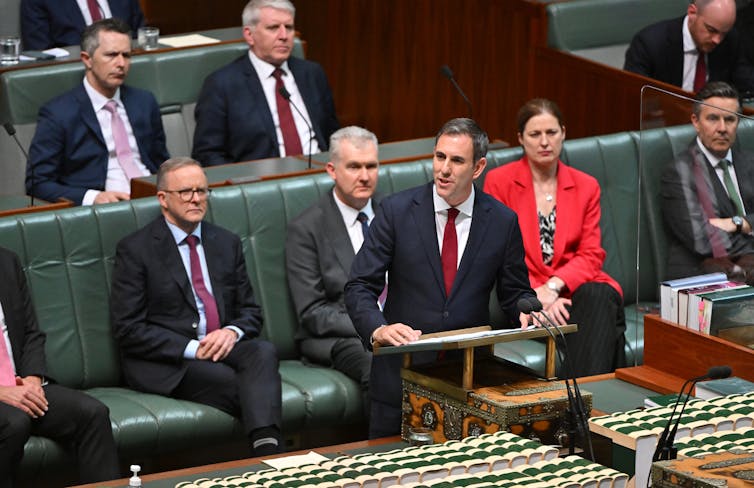
Treasurer Jim Chalmers has brought down a no-surprises budget that delivers Labor’s election promises but warns Australians “hard decisions” are needed for the “hard days to come”.
The government has kept its spending tight, and returned nearly all the substantial revenue upgrade to budget repair, declaring it has put a “premium on restraint”.
New policies have been largely offset across this year and next year to avoid adding to the inflationary problem.
But the budget contains alarming news for households, with its estimates of soaring energy prices.
Treasury has assumed retail electricity prices will rise by an average of 20% in late 2022. These prices are expected to rise by a further 30% in 2023-24.
Retail gas prices are forecast to increase by up to 20% in 2022-23 and 2023-24.
The electricity and gas price rises will contribute an estimated three quarters of a percentage point to inflation in 2022-23 and one percentage point in 2023-24.
The budget, which concentrates on implementing Labor’s election commitments, contains almost nothing that had not been foreshadowed by the government in recent weeks.
Chalmers described its five-point cost-of-living relief package as “responsible, not reckless”. It includes cheaper child care, expanded paid parental leave, cheaper medicines, more affordable housing, and “getting wages moving again”.
A new national “housing accord” between governments, investors and industry aspires to build “one million new, well-located homes over five years from 2024”. The government’s role will be “co-ordinating and kick-starting the investment”.
While most of the supply would come from the market, the budget commits an initial $350 million in additional funding for another 10,000 new affordable homes, extra to existing commitments.
The housing accord and extended paid parental leave to 26 weeks by 2026 are the government’s two budget policy initiatives since the election.
The range of election promises funded in the budget include extra TAFE and university places, the aged care package, and initiatives for women. Women’s safety gets an investment of more than $1.7 billion.
One late and unwelcome addition to spending is $3 billion to respond to the recent floods.
The deficit for this financial year is forecast to be $36.9 billion, rising to $44 billion in 2023-24, $51.3 billion in 2024-25, and $49.6 billion in 2025-26.
Inflation, set to peak at 7.75% in the December quarter, comes in at 5.75% for 2022-23. It then falls to 3.5% in 2023-24, before going down to 2.5% in each of the following two years, which is within the Reserve Bank’s target range.
But the budget papers warn, “Significant risks remain to the inflation outlook”, including from international disruptions and a tight labour market.
The budget forecasts economic growth will fall from 3.25% this financial year to 1.5% in 2023-24, while unemployment is set to rise from 3.75% in 2022-23 to 4.5% in 2023-24. Real wages are not forecast to increase until 2024.
Chalmers said: “The global economy teeters, again, on the edge – with a war that isn’t ending, a global energy crisis that is escalating, inflationary pressures persisting, and economies slowing – some of them already in reverse”.
Australia could avoid the worst of the overseas turbulence, but could not completely escape it, he said.
As part of the budget’s commitment to “restraint”, payments are set to fall in real terms over the next two years, while real spending growth over the forward estimates averages only 0.3% a year.
“Our responsible decisions mean gross debt-to-GDP will be 37.3% in 2022-23, and remain lower over the forward estimates compared to the pre-election forecasts,” Chalmers said.
He said the budget repair package delivered $28.5 billion in improvements over the coming four years.
Some $22 billion had been identified in savings and wasteful or unnecessary spending had been unwound or redirected.
Long term savings include much of the big infrastructure spending proposed in the March budget. The proposed Hells Gates Dam has been cancelled.
The one new tax initiative in the budget is a multinational tax integrity package that raises about $1 billion over four years. The budget also says extending compliance programs for tax avoidance will raise $3.7 billion over four years.
The first “wellbeing” budget statement, “Measuring What Matters” finds Australia did as well as or better than the OECD average on 21 out of 32 indicators. But Australia did worse (and is declining) on women feeling safe, threatened species and household debt.
The opposition said the budget had done nothing to help the family budget.
Shadow treasurer Angus Taylor said the test for the budget was to build on the strong position inherited from the Coalition to address the cost of living crisis.
“Labor has failed this test,” Taylor said.
“Just before the election, the Prime Minister told Australians that they ‘will be better off under a Labor government’. In fact, by Christmas, the typical Australian family will be at least $2,000 worse off.
"There is no credible plan to deal with the source of inflation or to help families deal with immediate cost of living pressures,” Taylor said.
The Business Council of Australia was broadly supportive of the budget, describing it as “a cautious and careful budget that avoids making our inflation problem worse”.![]()
Michelle Grattan, Professorial Fellow, University of Canberra
This article is republished from The Conversation under a Creative Commons license. Read the original article.
Gel-Like Radioactive Tumour Implant Obliterates Pancreatic Cancer In Mice
What are postbiotics and how can they improve our gut health?
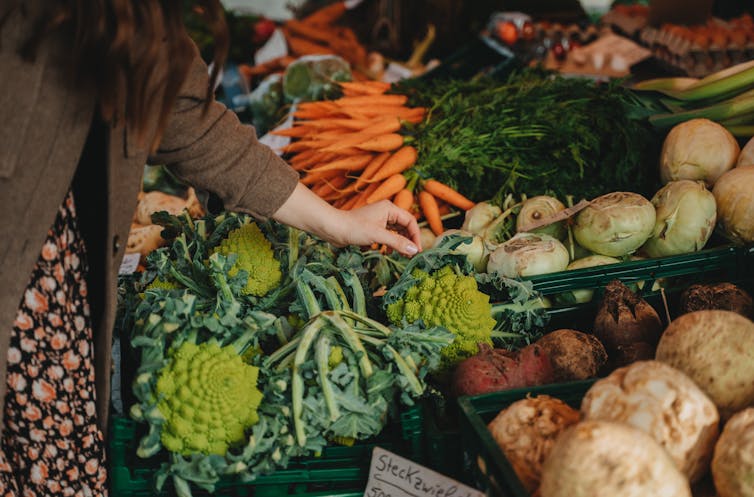
Many of us are familiar with probiotics, such as certain yogurts and fermented foods, full of “good” bacteria that can keep the gut healthy.
You might even have heard of prebiotics, foods rich in complex carbohydrates (dietary fibre) that help foster good bacteria in the large intestine. Popular prebiotic foods include oats, nuts and legumes.
But what about postbiotics? What are they and how do they affect our gut health?
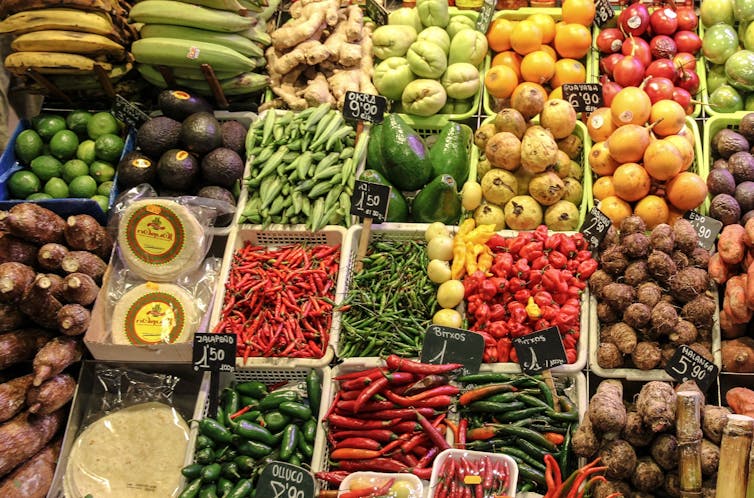
What Is A Postbiotic?
Postbiotics are essentially the by-products of our gut microbiota. In other words, your body produces postbiotics after digesting prebiotic and probiotic foods.
Examples of postbiotics include the short-chain fatty acids butyric acid (or butyrate), acetic acid (or acetate) and propionic acid (or propionate).
These molecules are produced when good probiotic bacteria break down dietary fibre from foods such as fruits and vegetables, grains and legumes.
These postbiotic molecules are important for your gut microbiota. Healthy probiotic bacteria thrive on these short-chain fatty acids in our gut.
And some postbiotics can help suppress “bad” bacteria. For example, probiotic bacteria (such as Lactococcus lactis) produce special chemicals called bacteriocins which can prevent the colonisation of pathogens like E. coli in the gut. This process is known as “colonisation resistance”.
Microbial fermentation is where microbes in the gut break down complex carbohydrates. Microbial fermentation of plant-based diets (which are rich in polyphenols), in particular, leads to the production of the postbiotic phenylacetic acid. This postbiotic can reduce the growth of harmful pathogens in the body.

Not All Postbiotics Are Good
Not all postbiotics are heroes, though.
One type of postbiotic is bile acids, which are produced when we eat too many high-fat foods.
Bile acids have been linked to inflammation and colon cancer.
Staying on a high-protein, low-carbohydrate diet for the long term often means people don’t eat enough fibre, which is linked to a higher risk of colon cancer.
This may be due to the production of hazardous postbiotics like bile acids.
What’s The Link Between Postbiotics And Cancer?
Our recent review (led by my colleague Kayla Jaye at Western Sydney University) found short-chain fatty acids – particularly butyrate – have shown promising results against breast and colorectal cancer cells in previous laboratory studies.
One clinical study showed colorectal cancer patients produced significantly lower levels of short-chain fatty acids in their gut than healthy participants.
Another study found the numbers of bacteria that produce short-chain fatty acids were low in premenopausal breast cancer patients.
Some cellular and animal studies have also reported that the postbiotic butyrate can help chemotherapy work better against breast cancer and regulate the immune system.
As reported in epidemiological studies, a fibre-rich diet, particularly whole grains, can lower the risk of colorectal cancer. This is mainly because fibre-rich diets lead to the production of short-chain fatty acids in the colon.

OK Great, So What Do I Eat To Get More Postbiotics In My Gut?
Dietary fibre is the key.
Women and men should consume at least 25 and 30 grams of fibre, respectively, every day. But few Australians meet this recommendation.
The best way to improve the levels of good postbiotics is to consume more vegetables, fruits, legumes, wholegrain bread, nuts and seeds.
Jerusalem artichokes, garlic, onion, leek and asparagus are fantastic prebiotic vegetables.
A diet rich in fruits and vegetables increases the levels of postbiotics like short-chain fatty acids in the gut. It also helps reduce bile acids.
Gut health is all about diversity, which means eating a variety of fruits, vegetables, legumes and whole grains to support healthy gut microbiota.
You can also include fermented foods like sauerkraut and kimchi in your diet. These fermented foods have both prebiotic fibre and live probiotic bacteria, which can help produce healthy postbiotics in the gut.
Of course, further research is needed. But to ensure good gut health, you should include plenty of fruits, vegetables and legumes in your diet.![]()
Deep Jyoti Bhuyan, Research Fellow in Healthy Ageing, Western Sydney University
This article is republished from The Conversation under a Creative Commons license. Read the original article.
Advanced Genomic Approaches Hold Promise For Marine Conservation
Several Beautiful New Bird Species Found On Remote Indonesian Islands
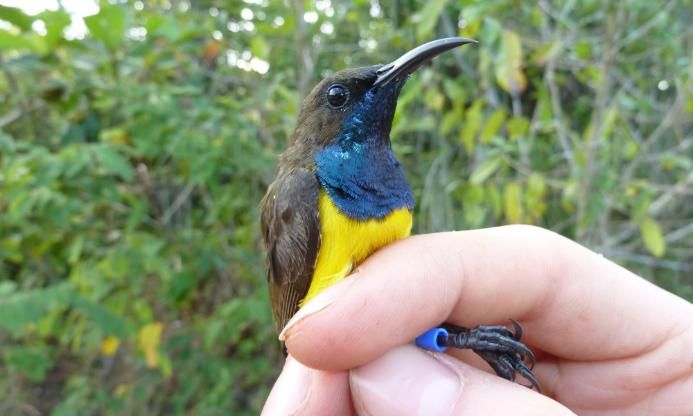
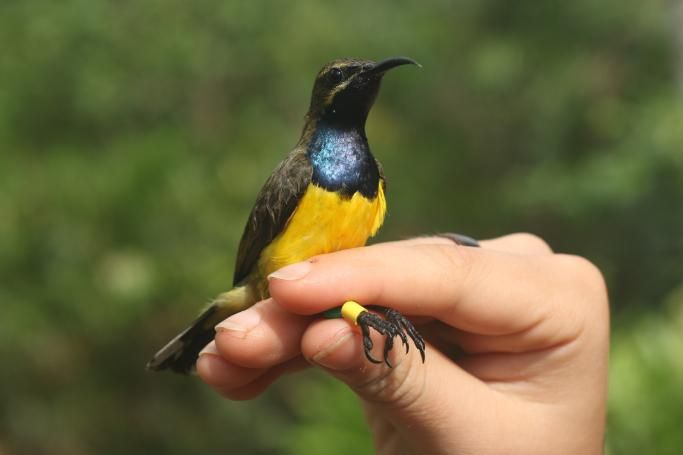
Real-Time Air Quality Data 'Life Saving'
Retired Supreme Court Judge To Carry Out Review Of SafeWork NSW
Expanded Hornsby Ku-Ring-Gai Hospital Opens
- A combined Intensive Care and High Dependency Unit
- Combined Respiratory/Cardiac and Coronary Care beds co-located with a Cardiac Investigations Unit
- Ambulatory Care Centre (Outpatients Department)
- Medical Imaging
- Paediatrics
- Medical Assessment Unit
- Inpatients Units (including general medicine, rehabilitation, stroke and dementia/delirium beds)
- Helipad, and
- Co-located education space with The University of Sydney.
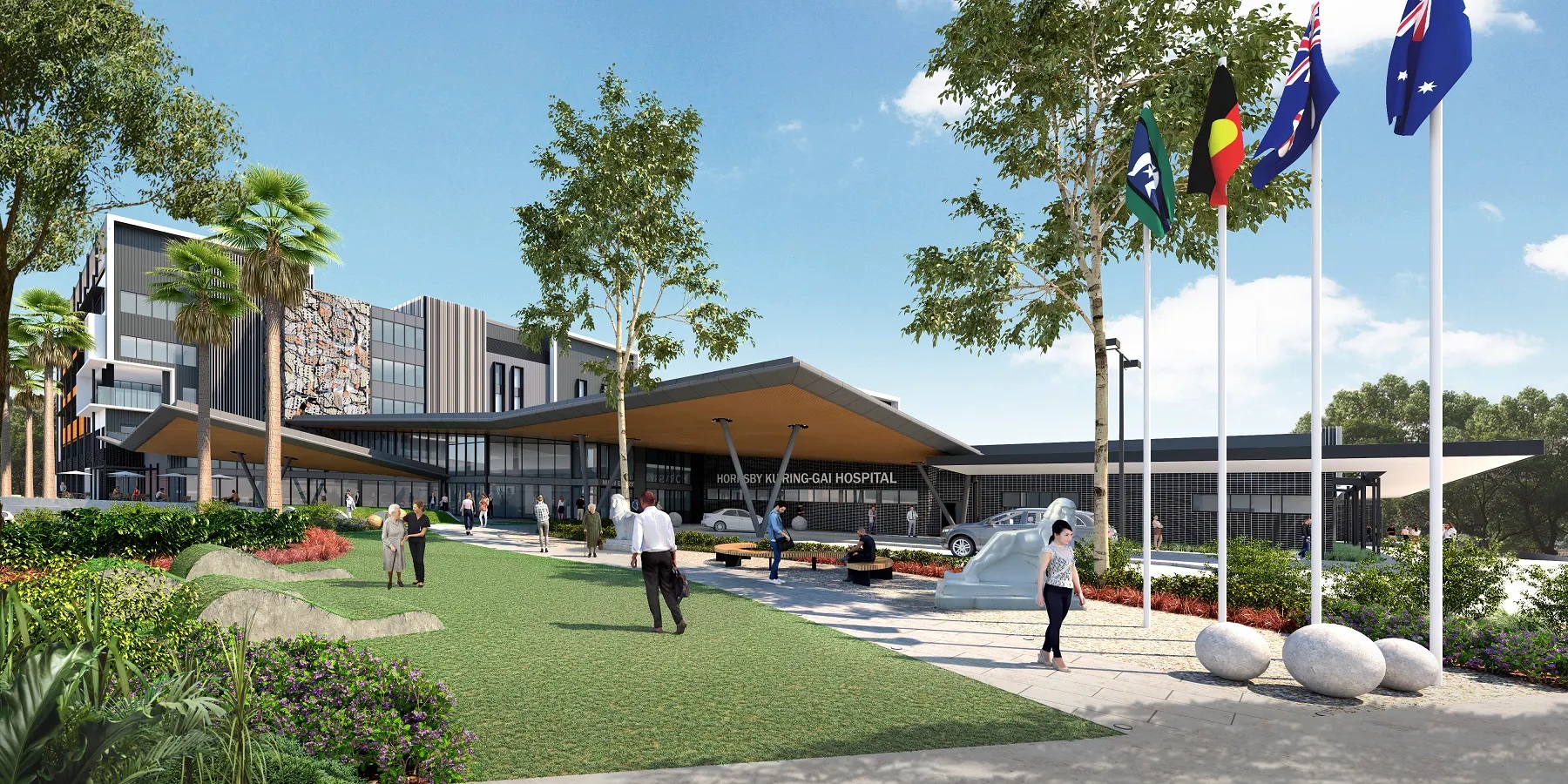
75 New Eco-Friendly Social Homes Created In Glebe
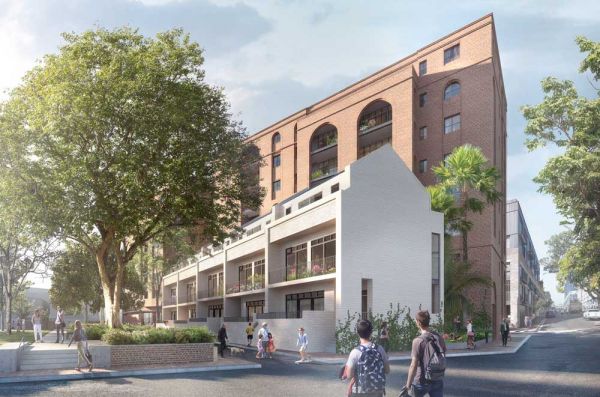 Construction has kicked off at Cowper Street, Glebe with a new social housing development that is transforming 19 aged dwellings into a modern complex of 75 new inner-city apartments and terrace houses.
Construction has kicked off at Cowper Street, Glebe with a new social housing development that is transforming 19 aged dwellings into a modern complex of 75 new inner-city apartments and terrace houses.
Disclaimer: These articles are not intended to provide medical advice, diagnosis or treatment. Views expressed here do not necessarily reflect those of Pittwater Online News or its staff.
